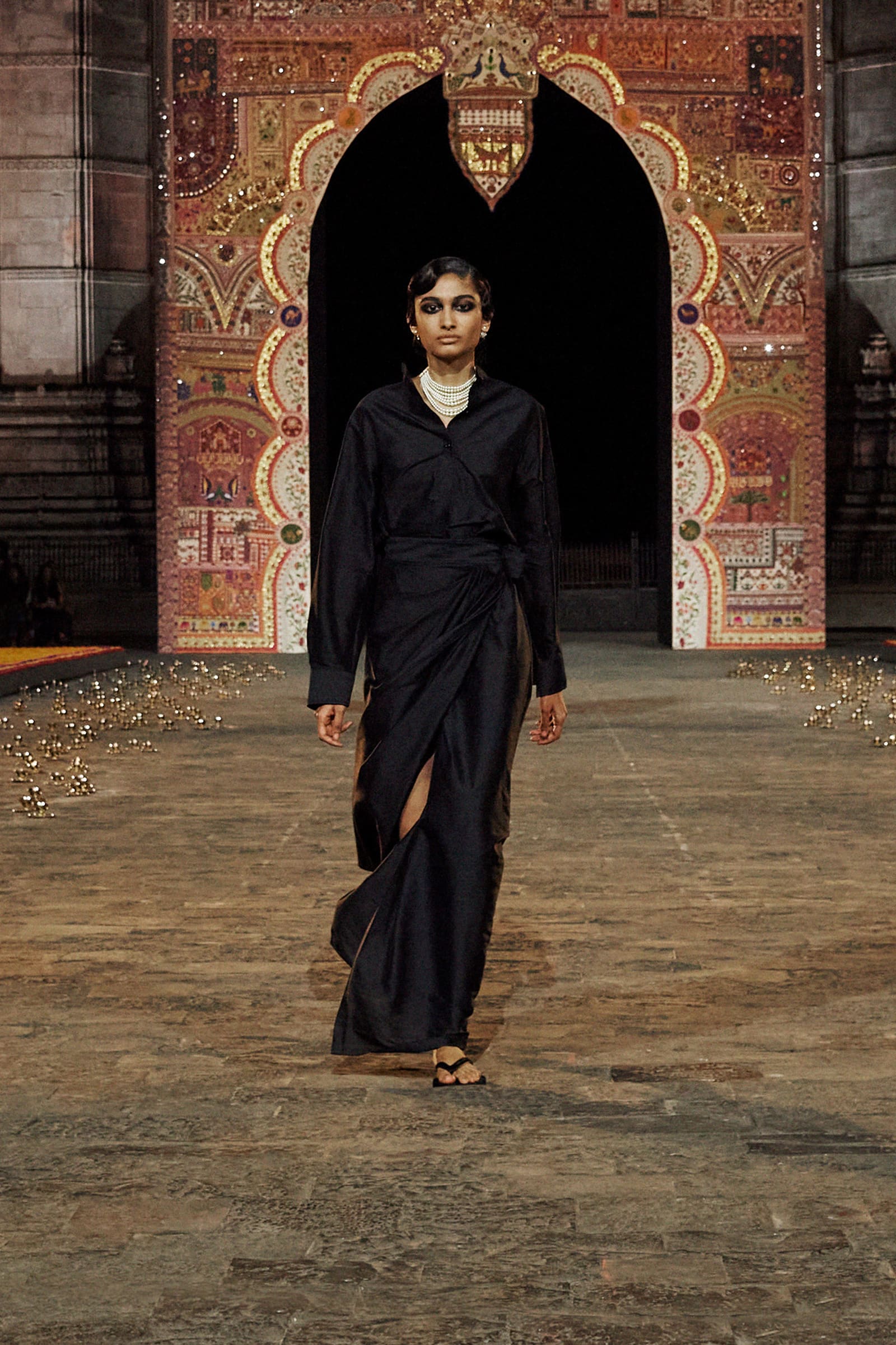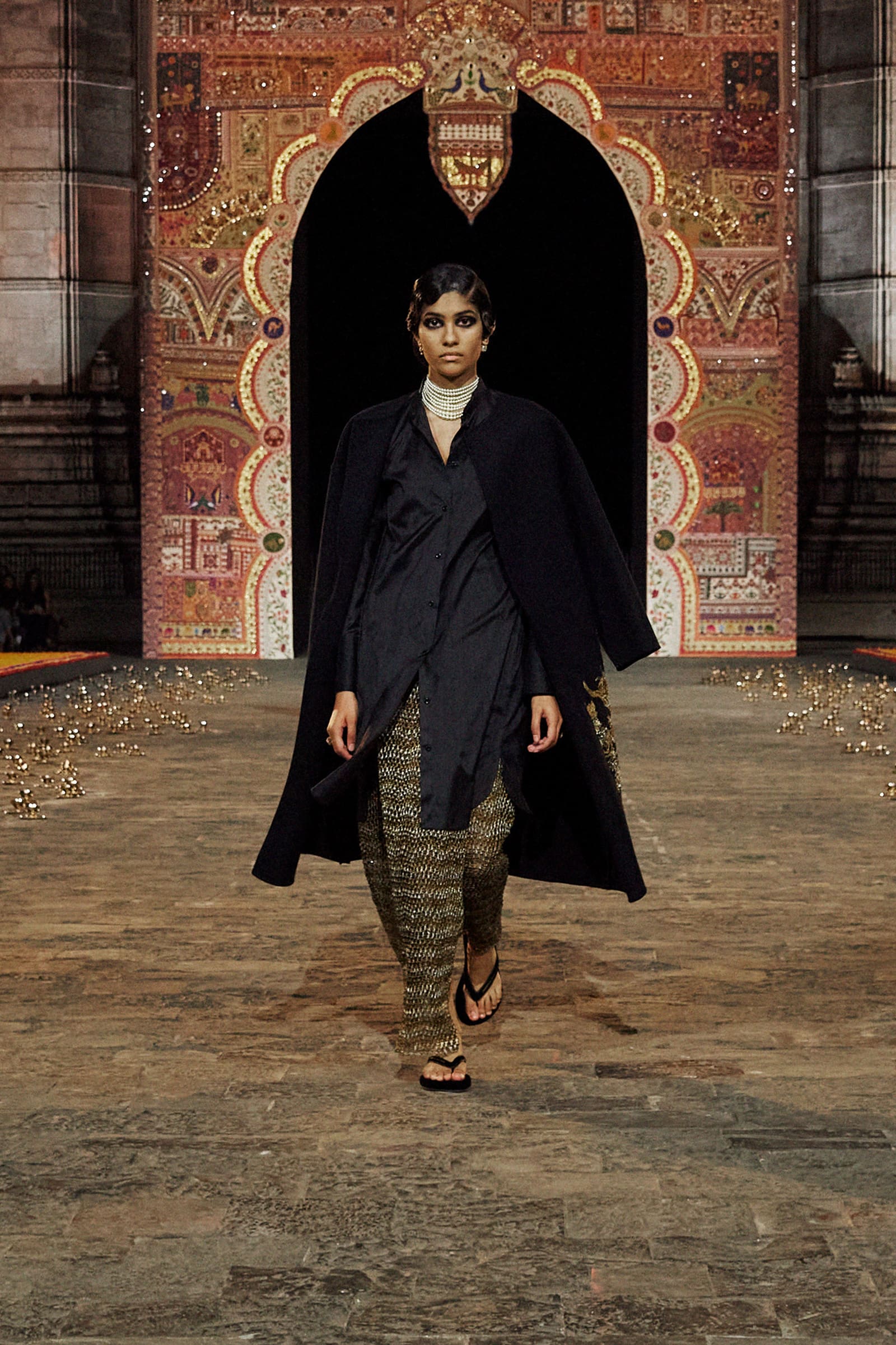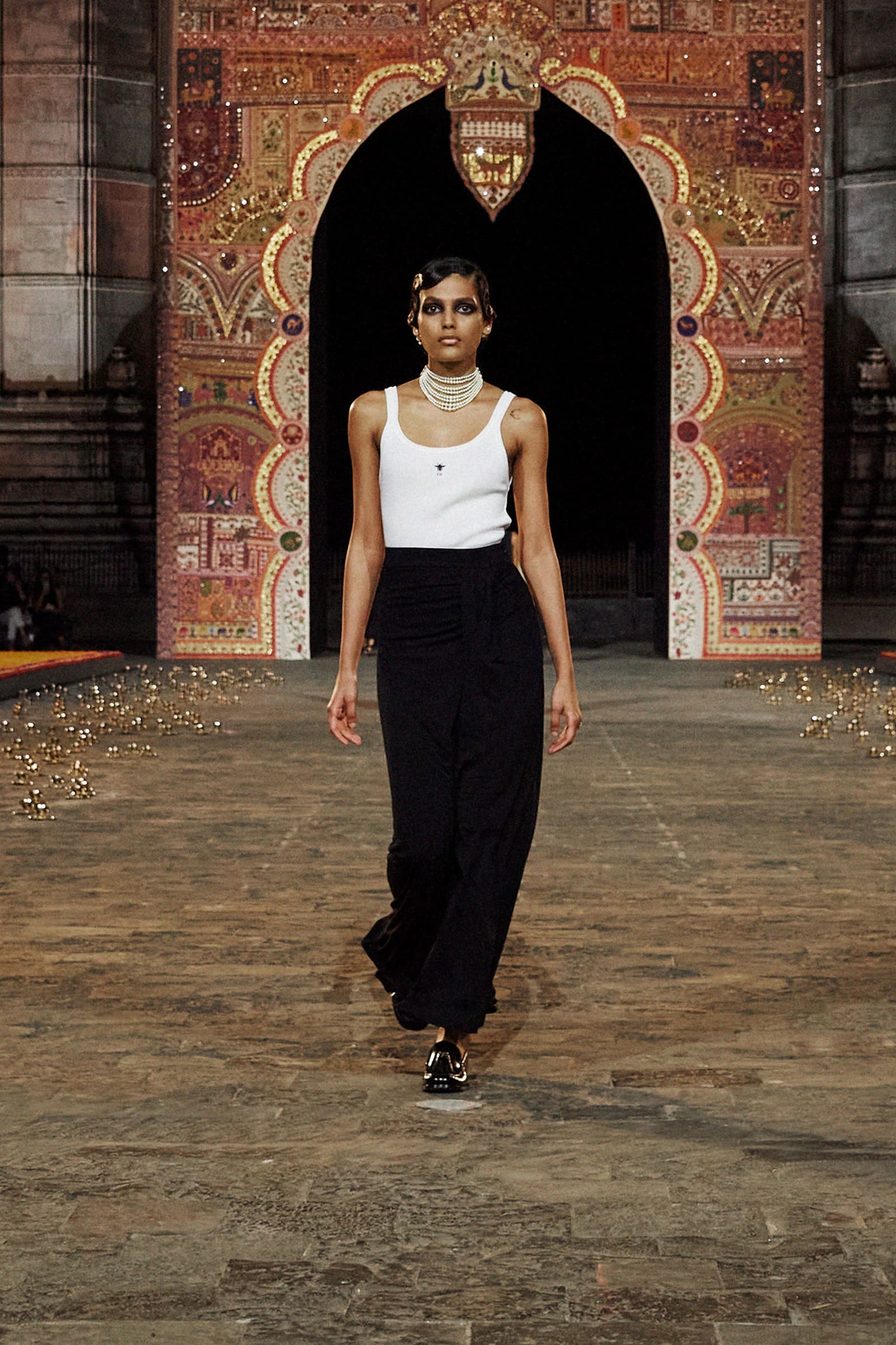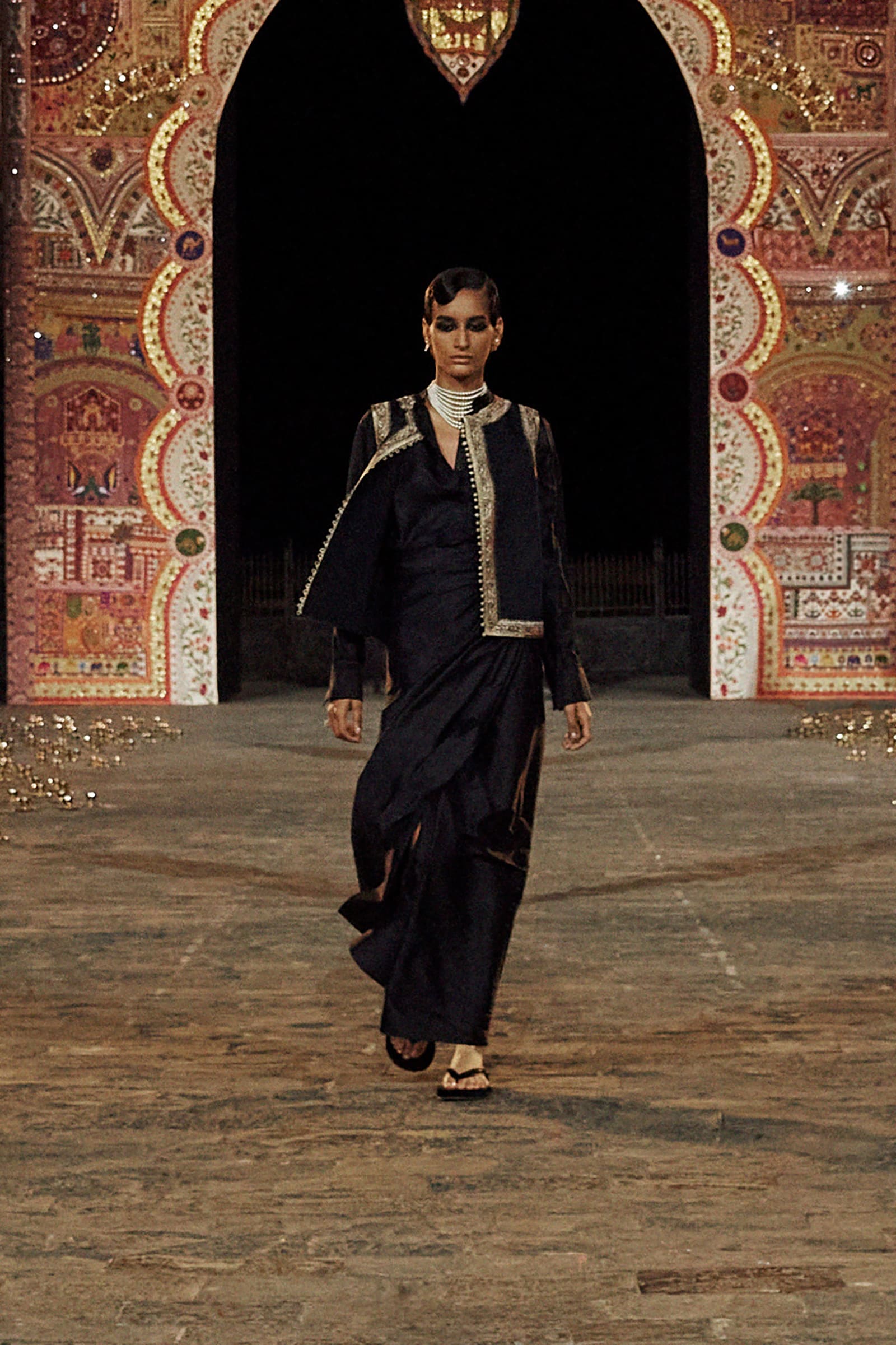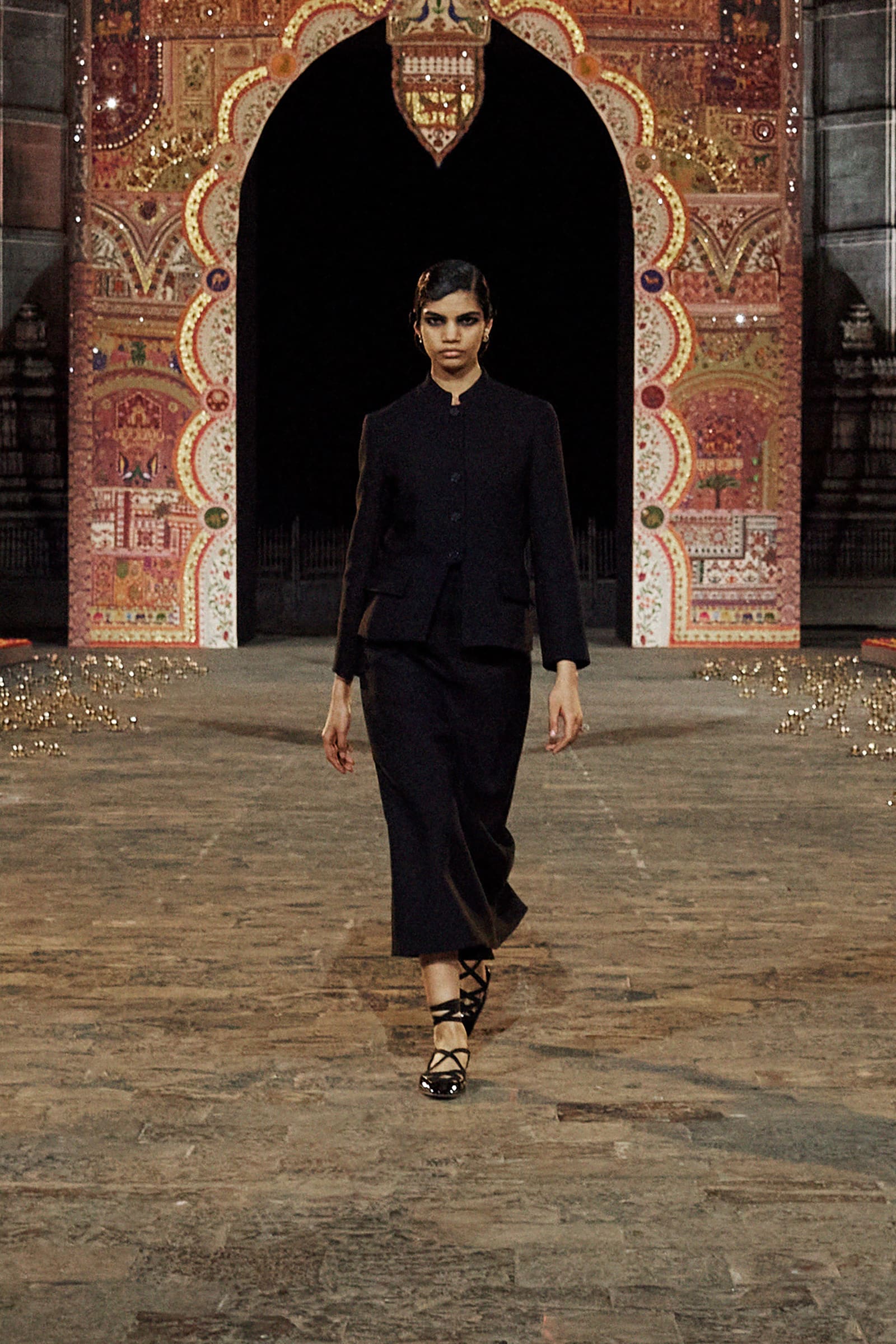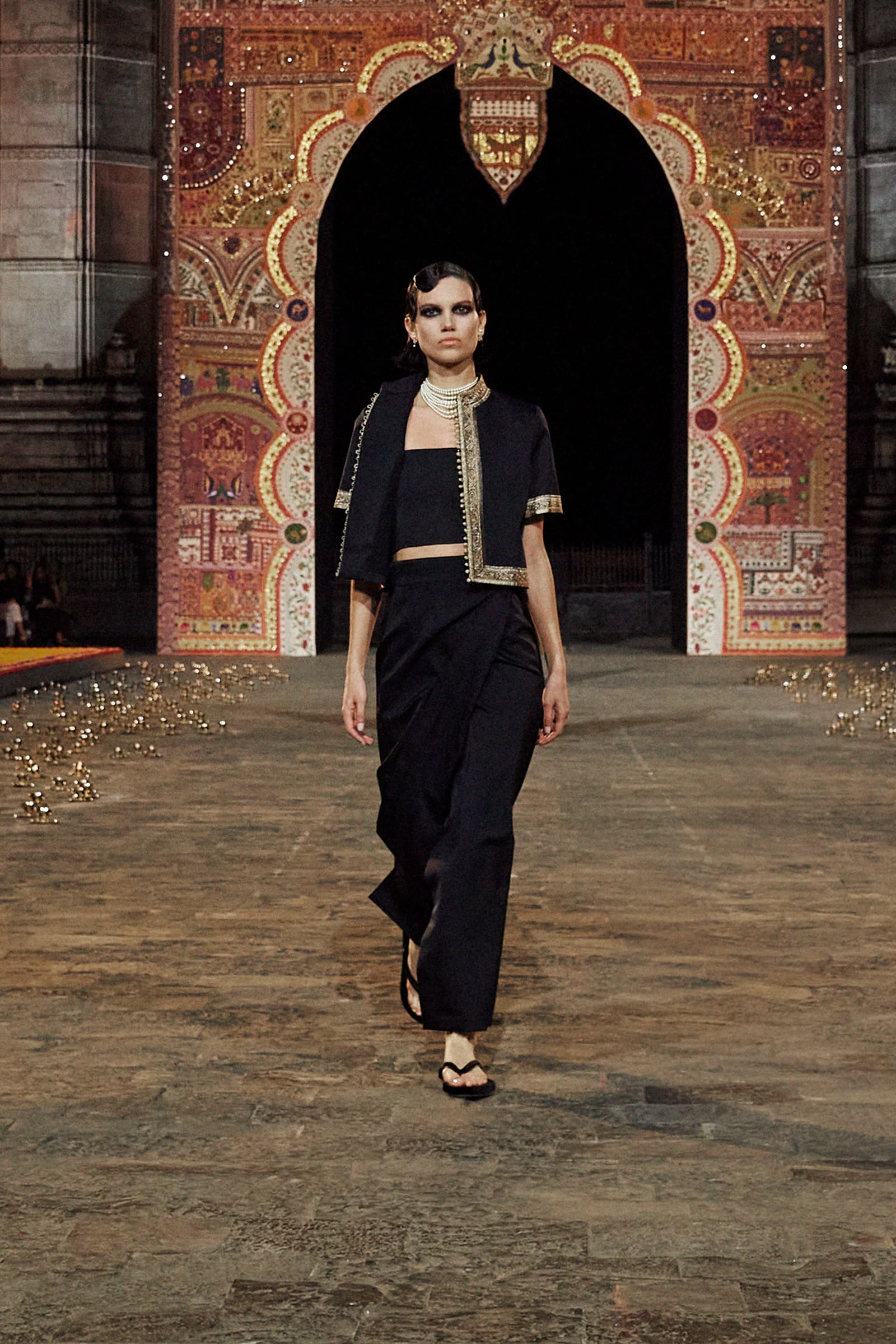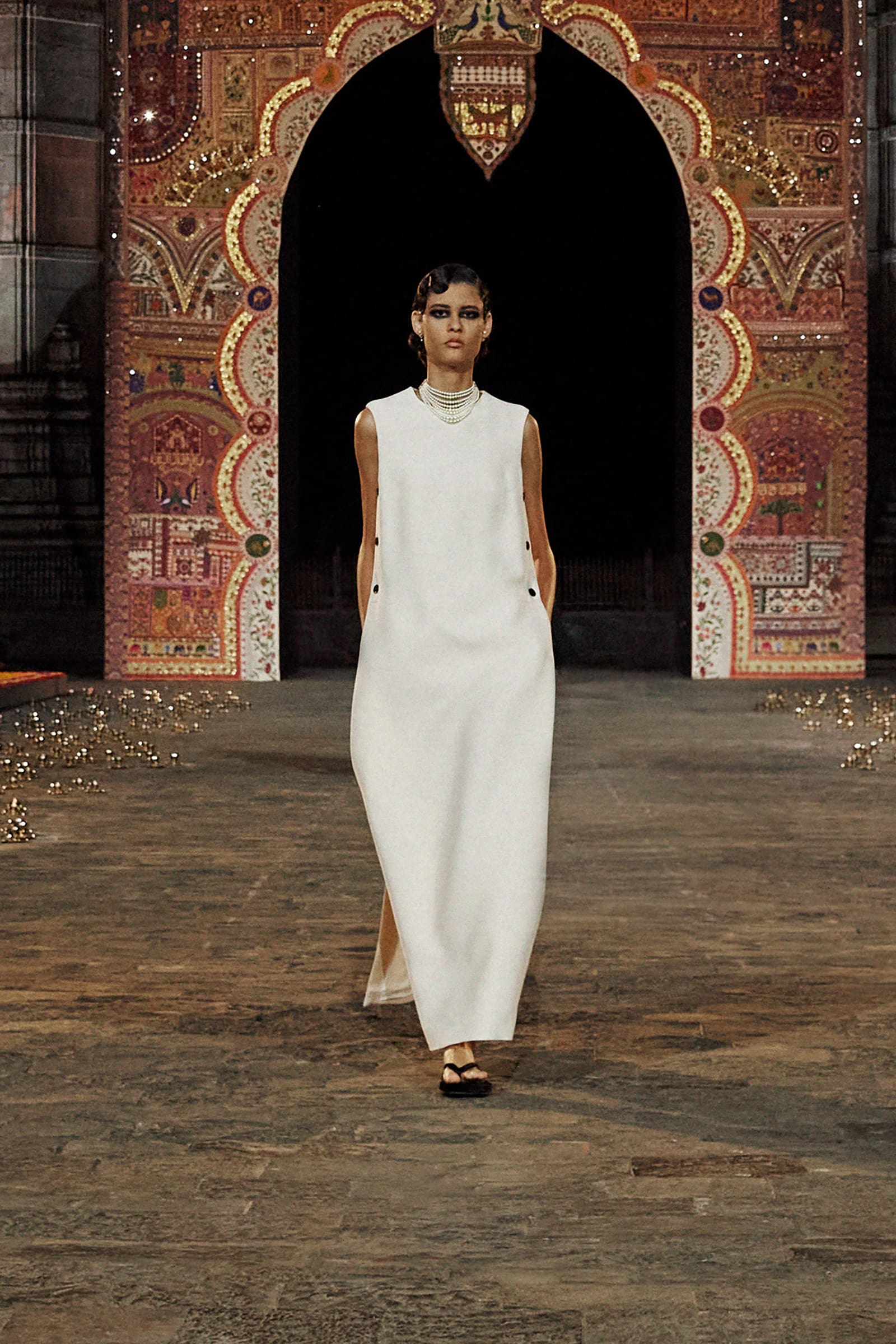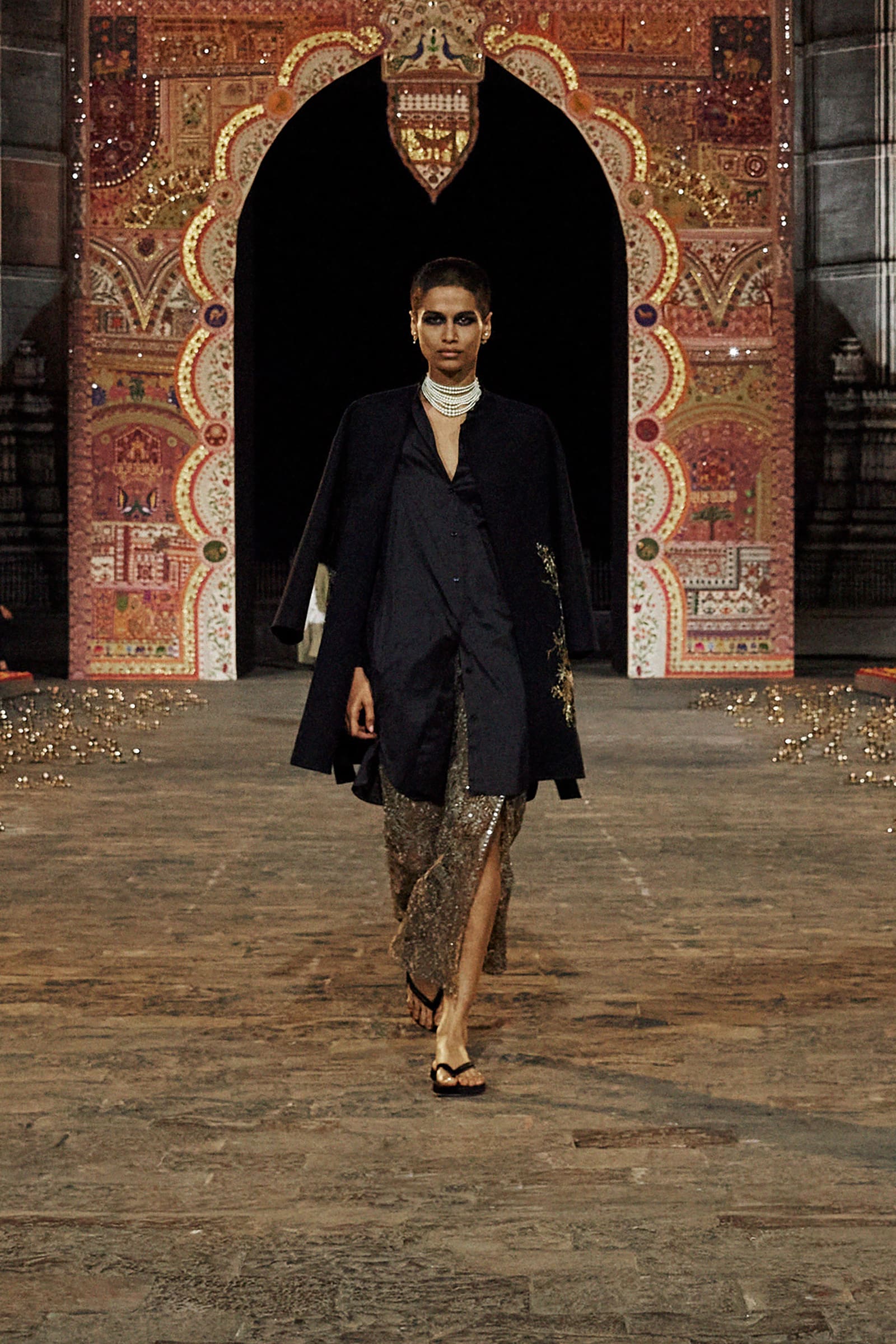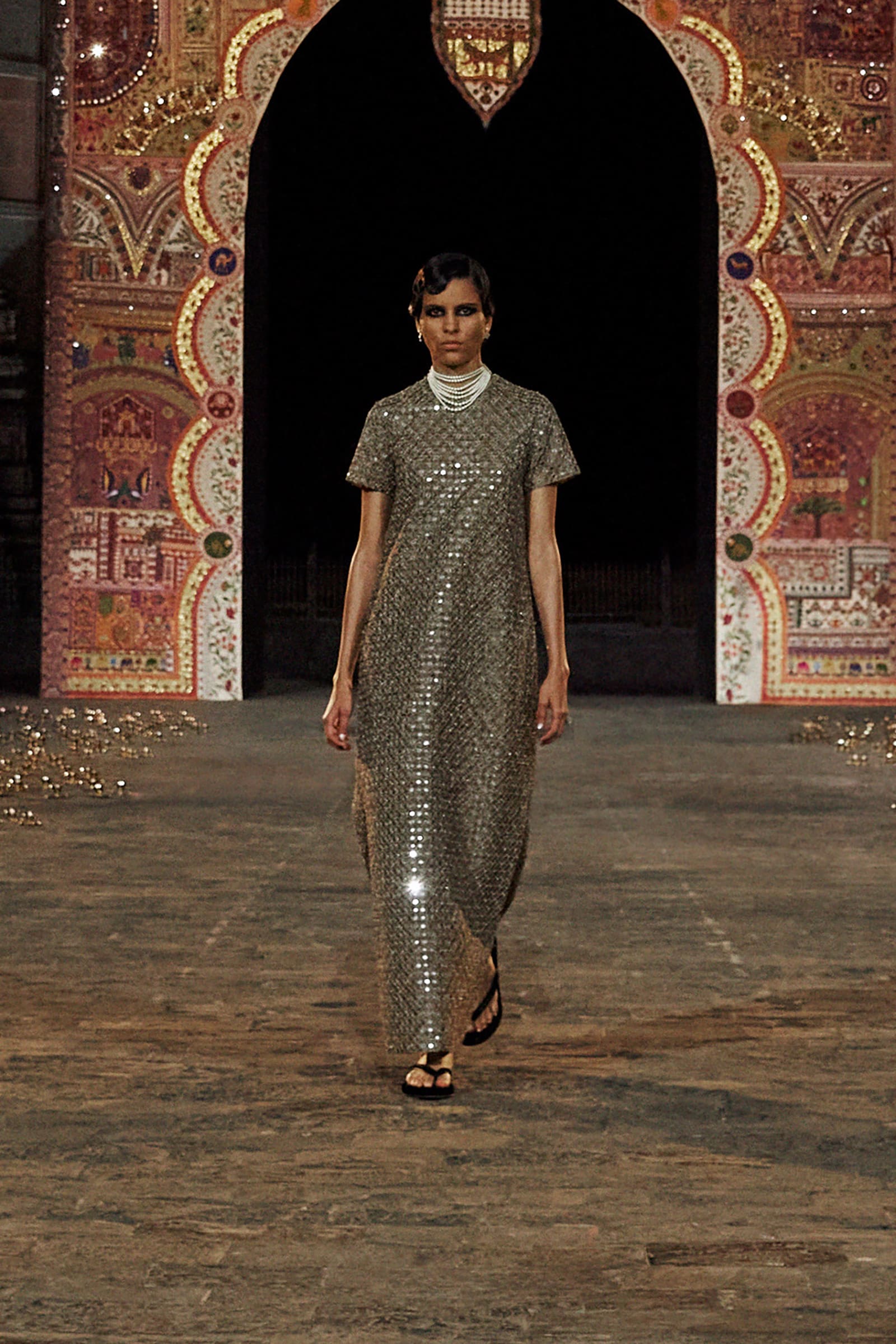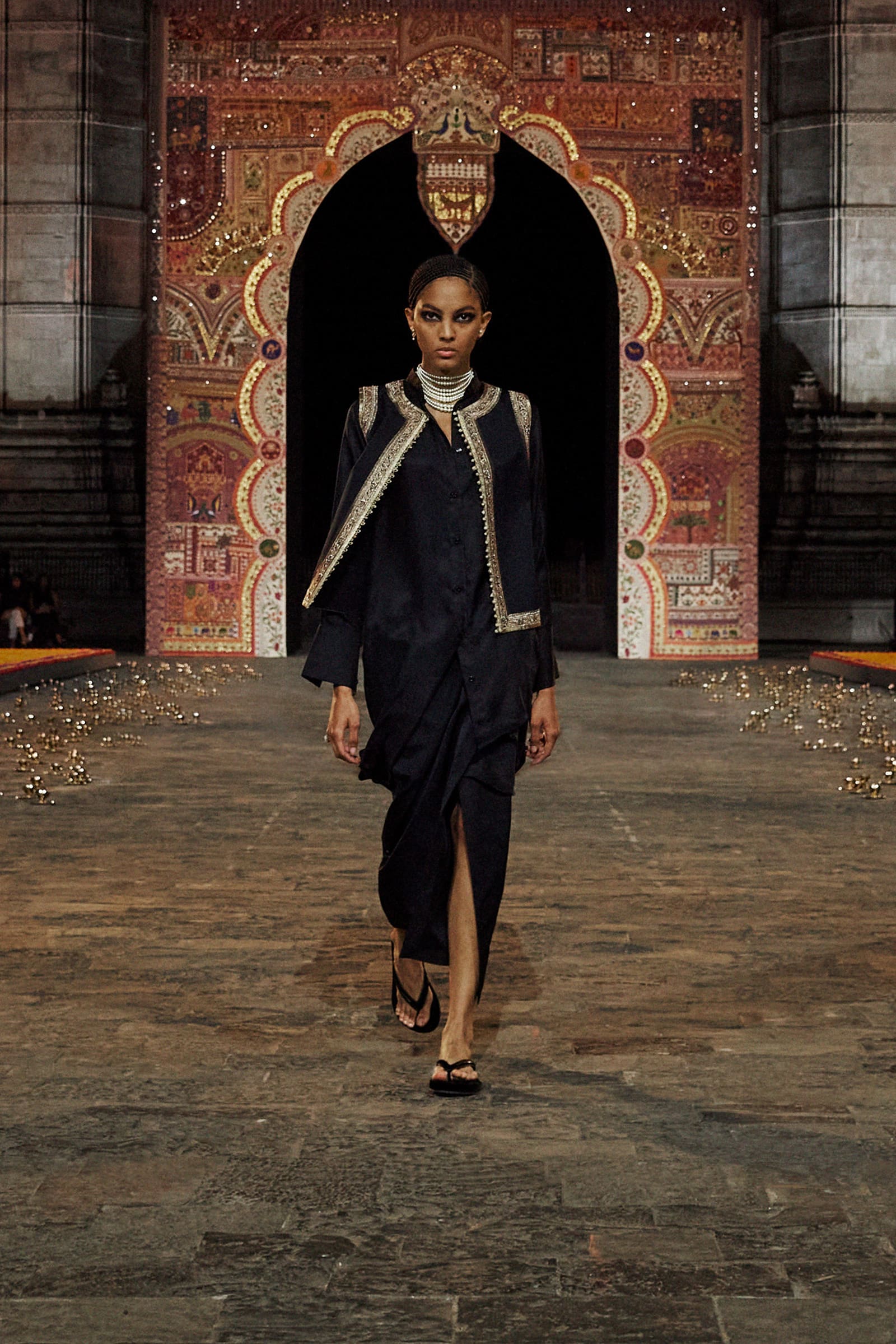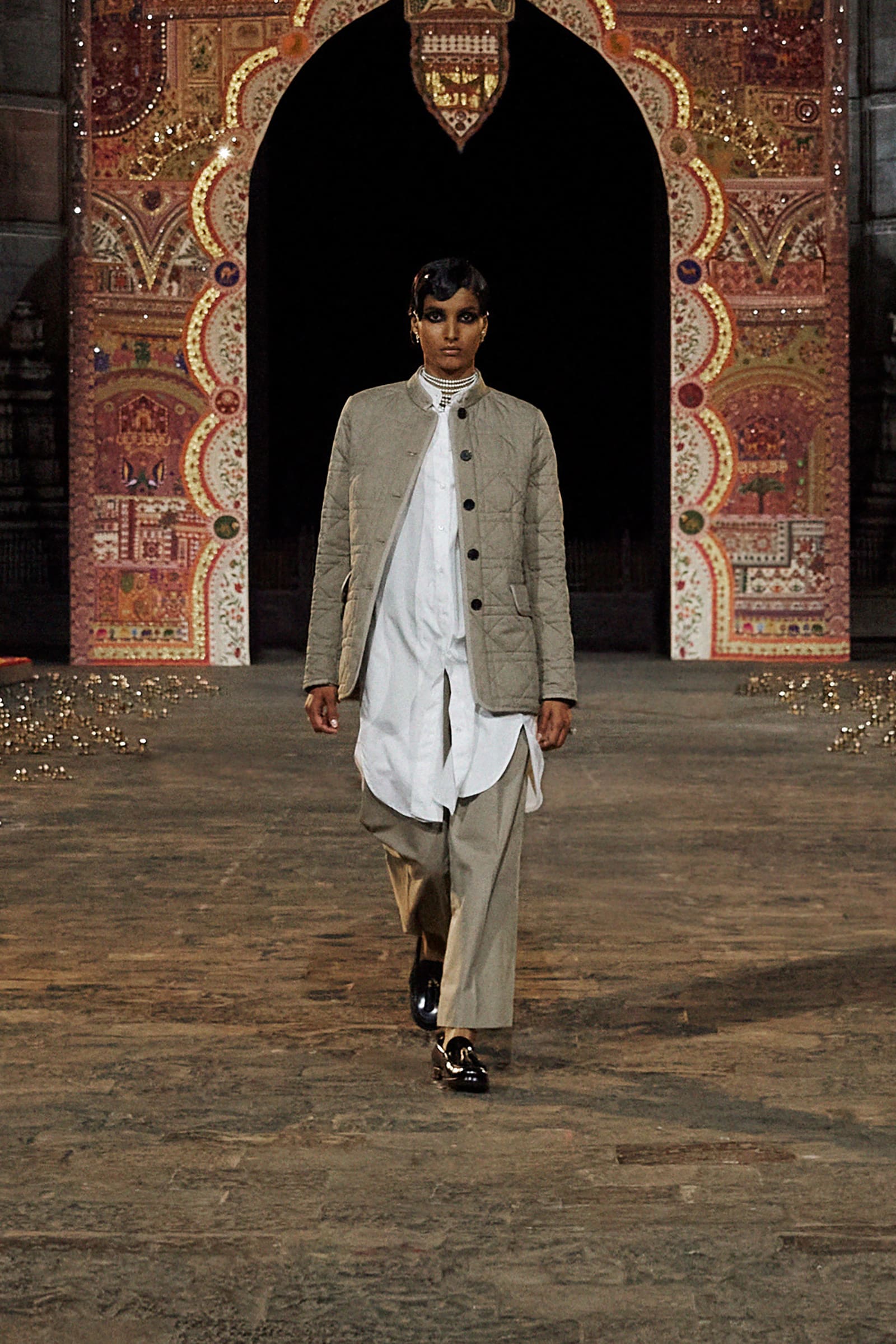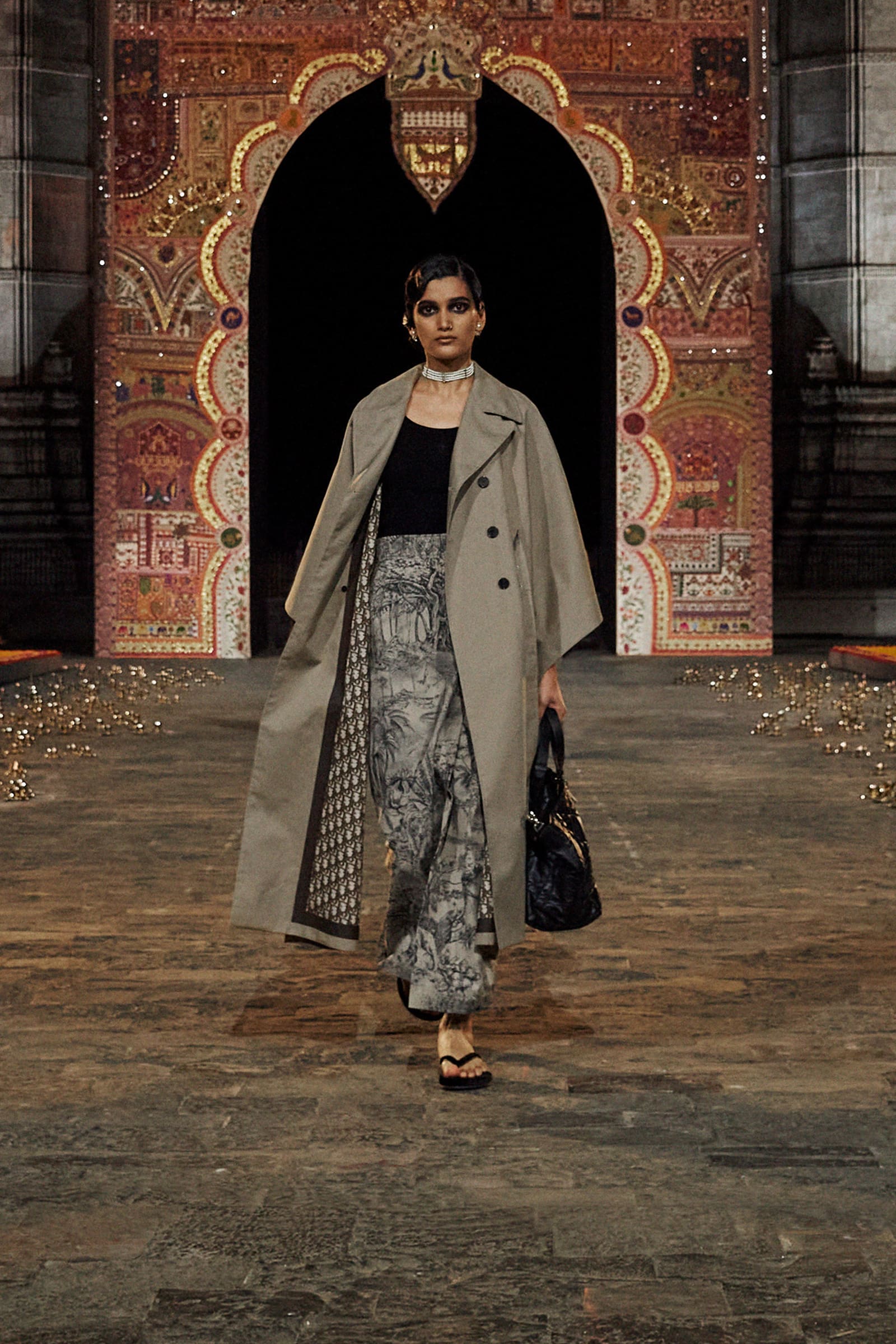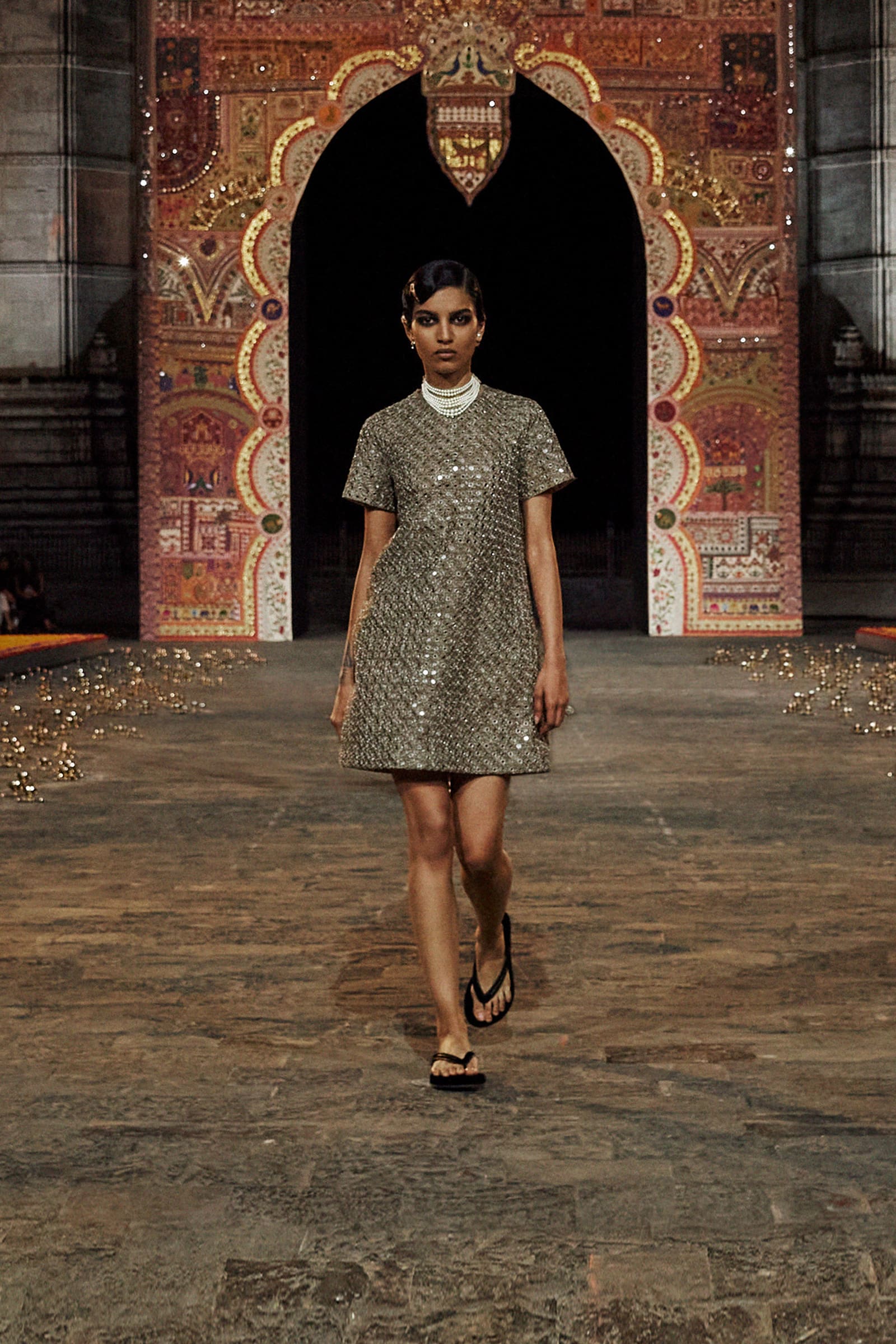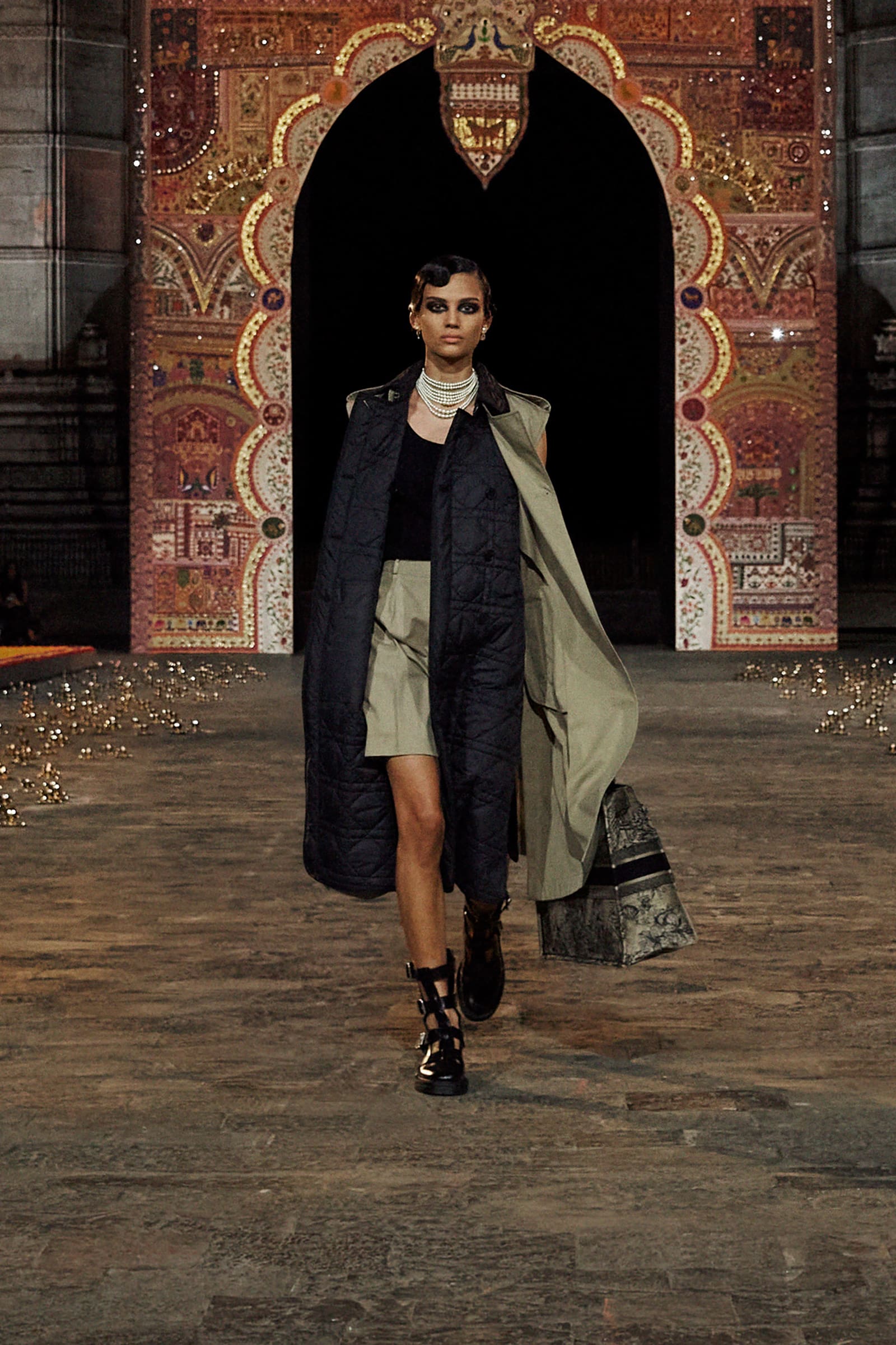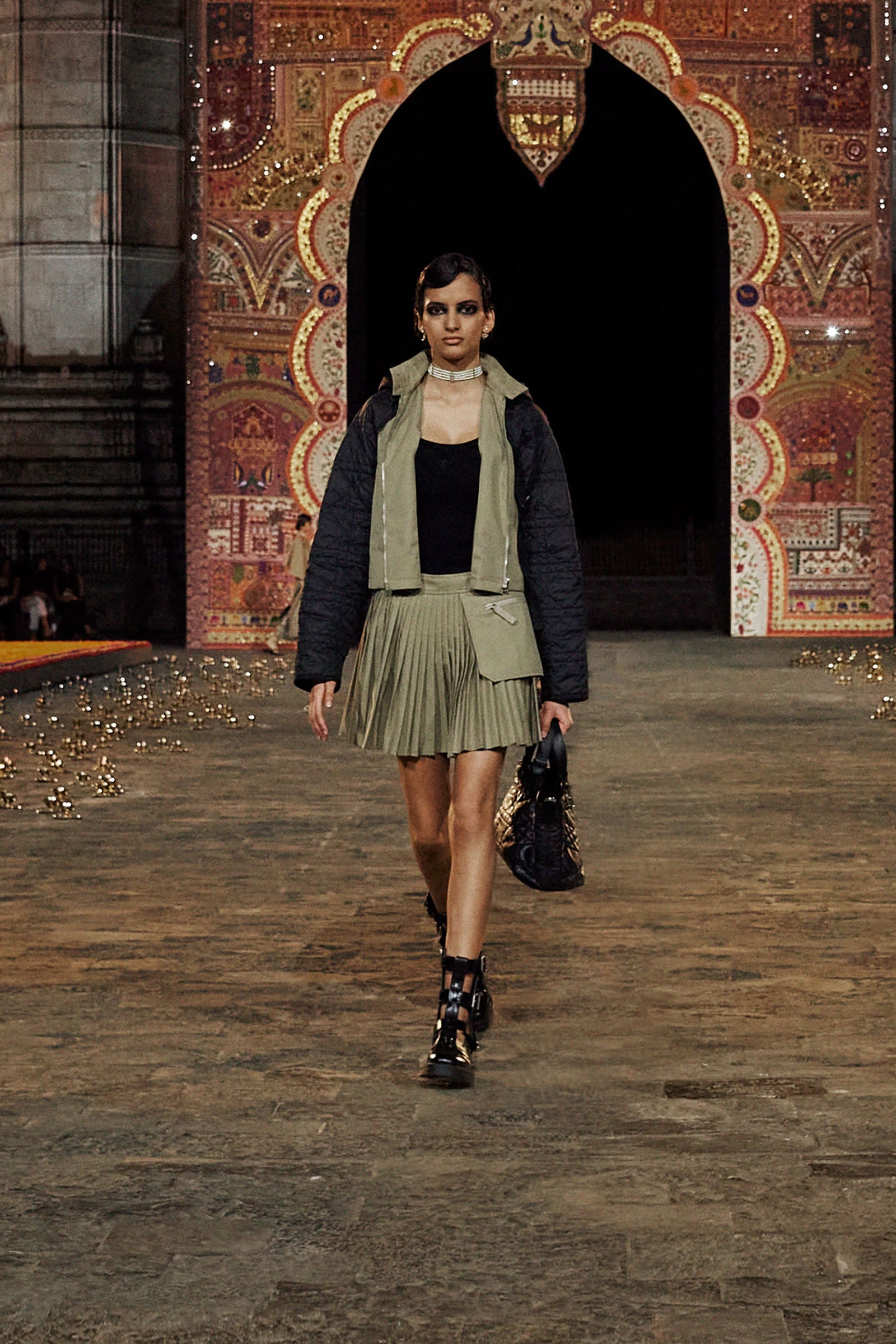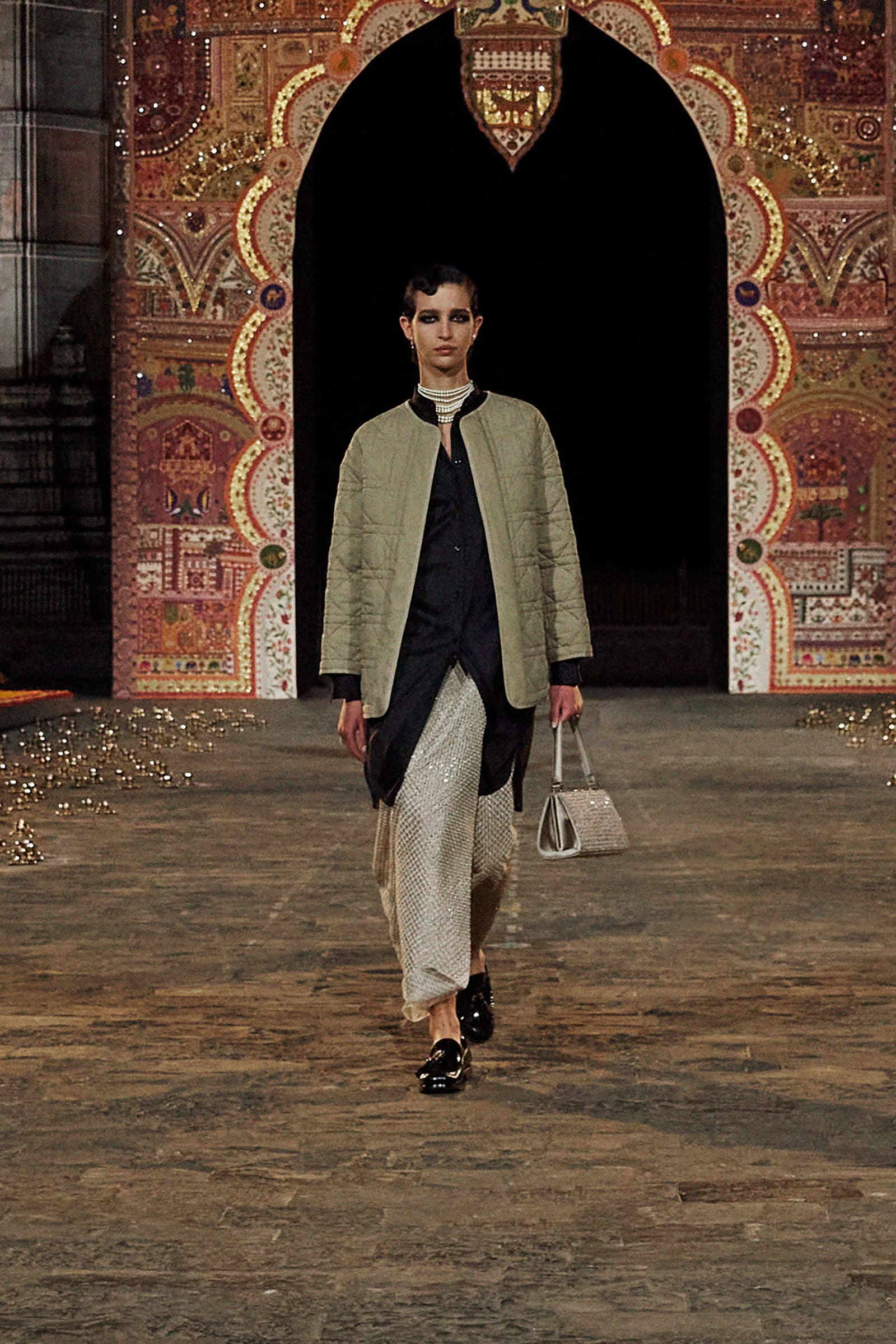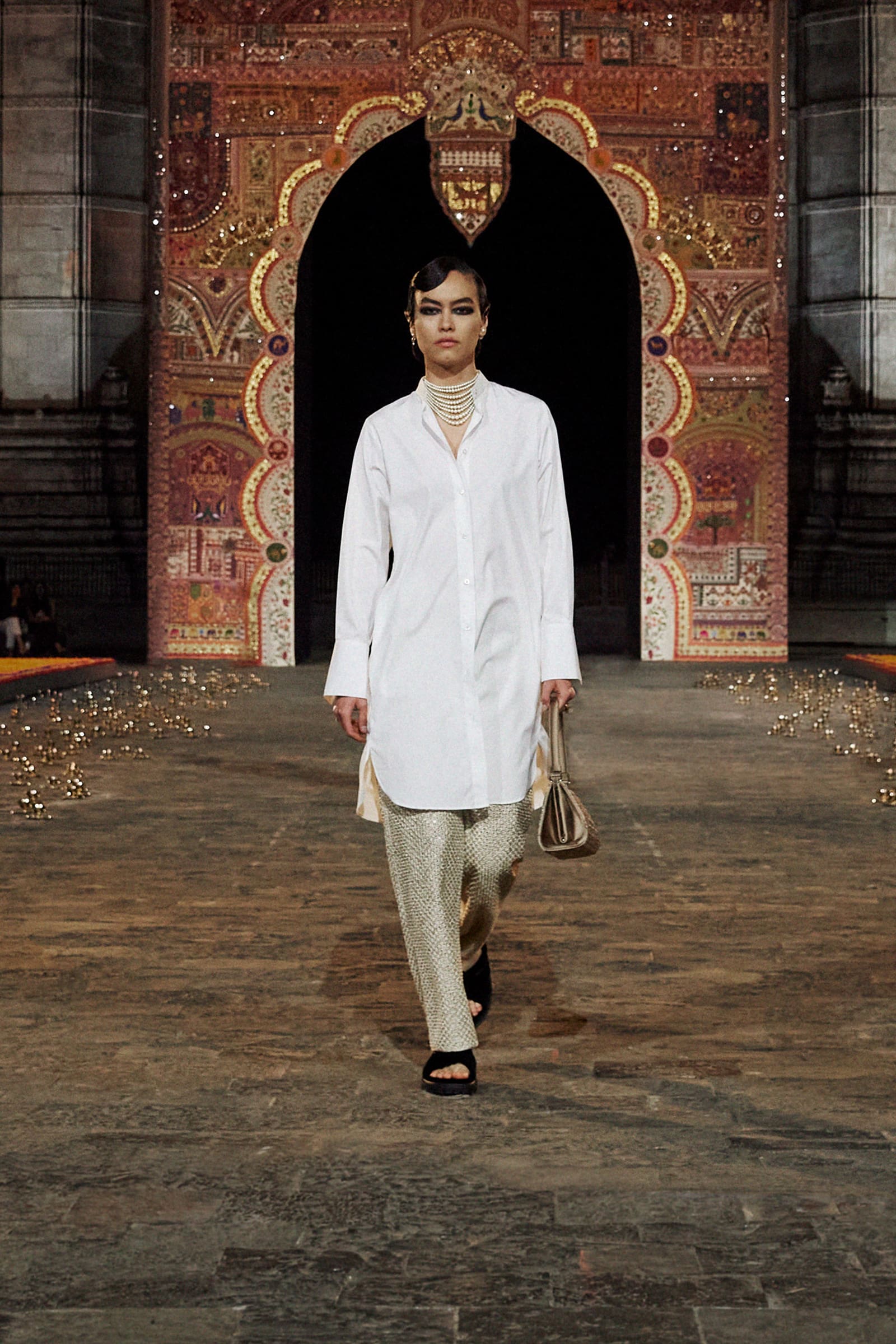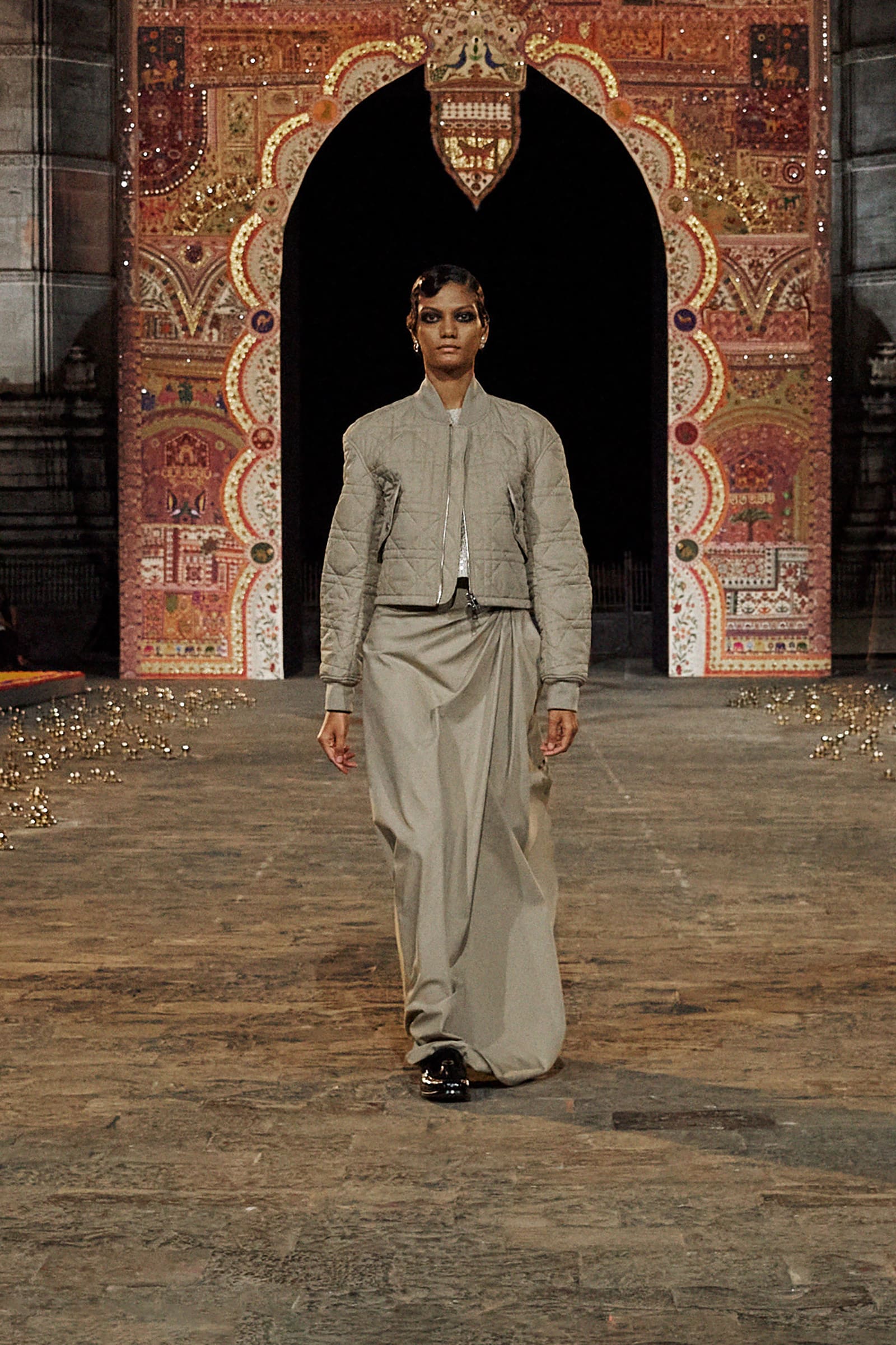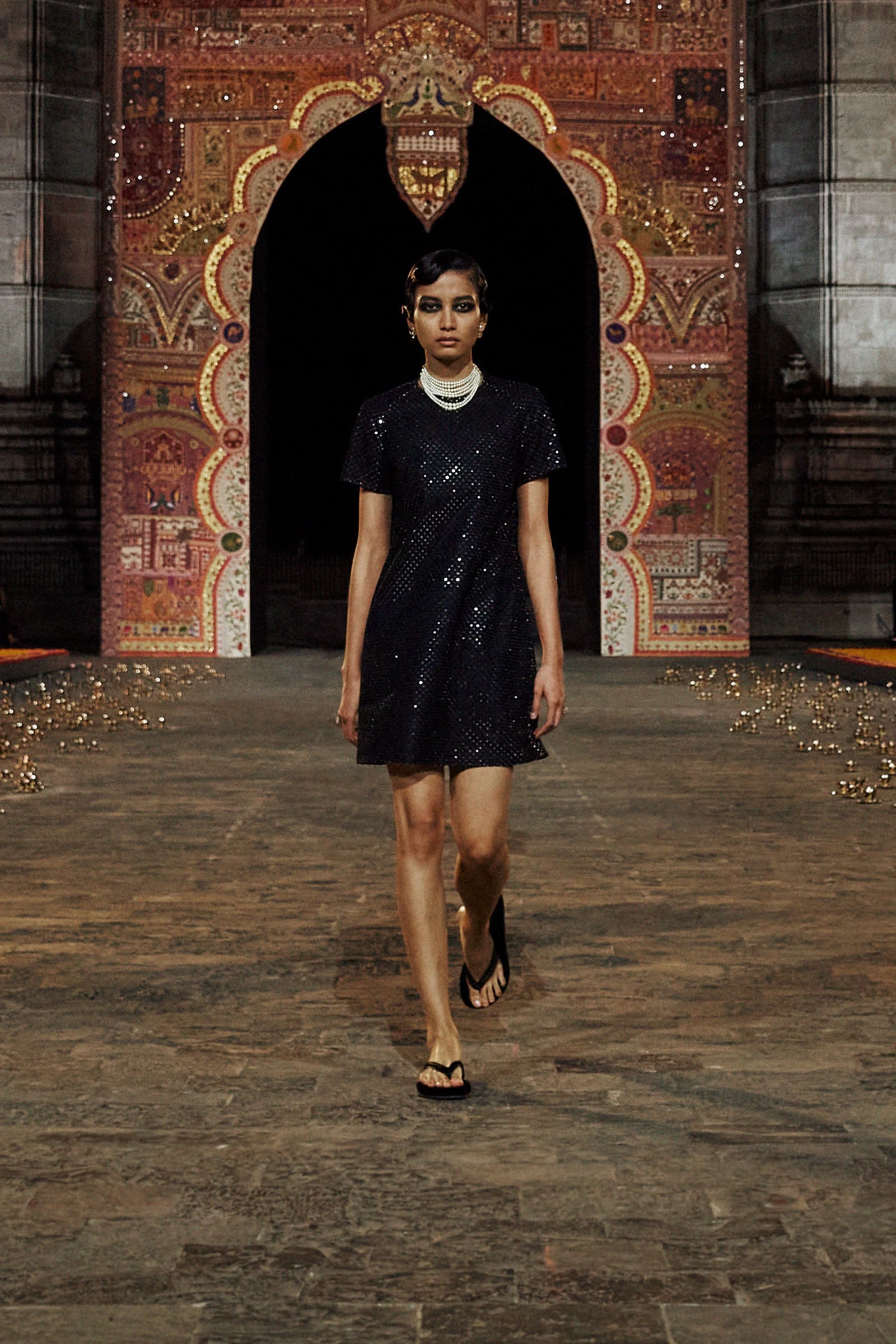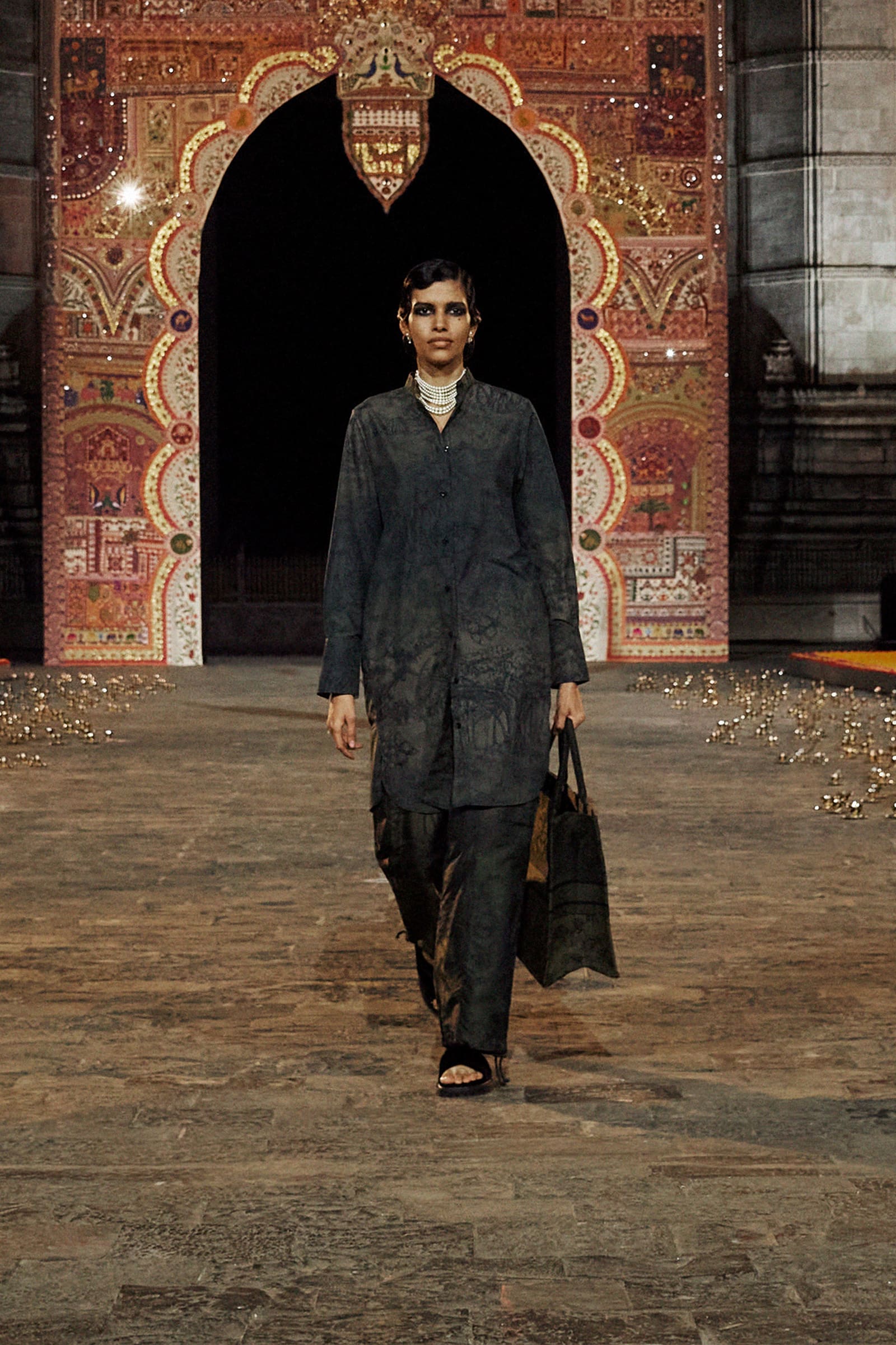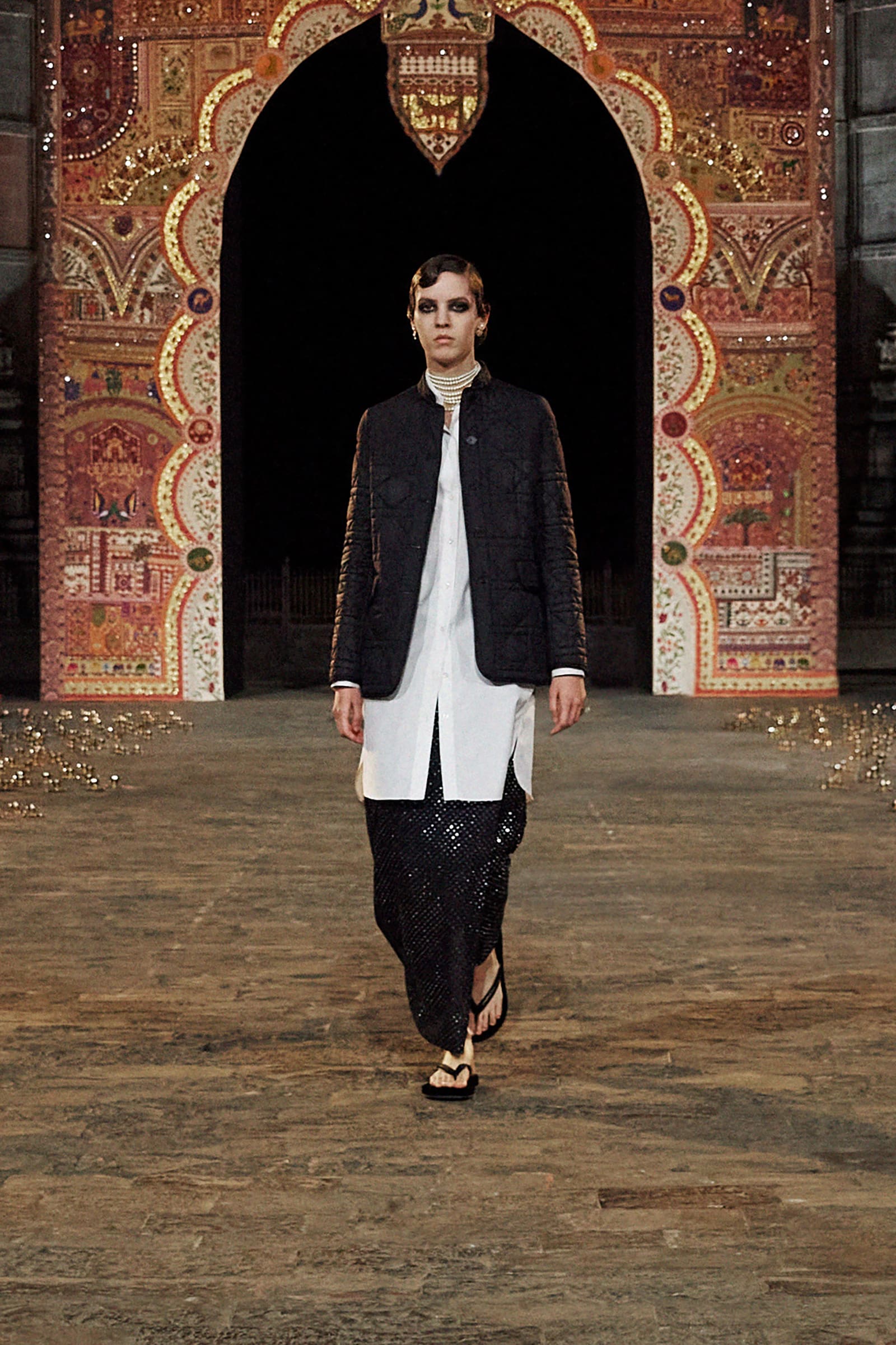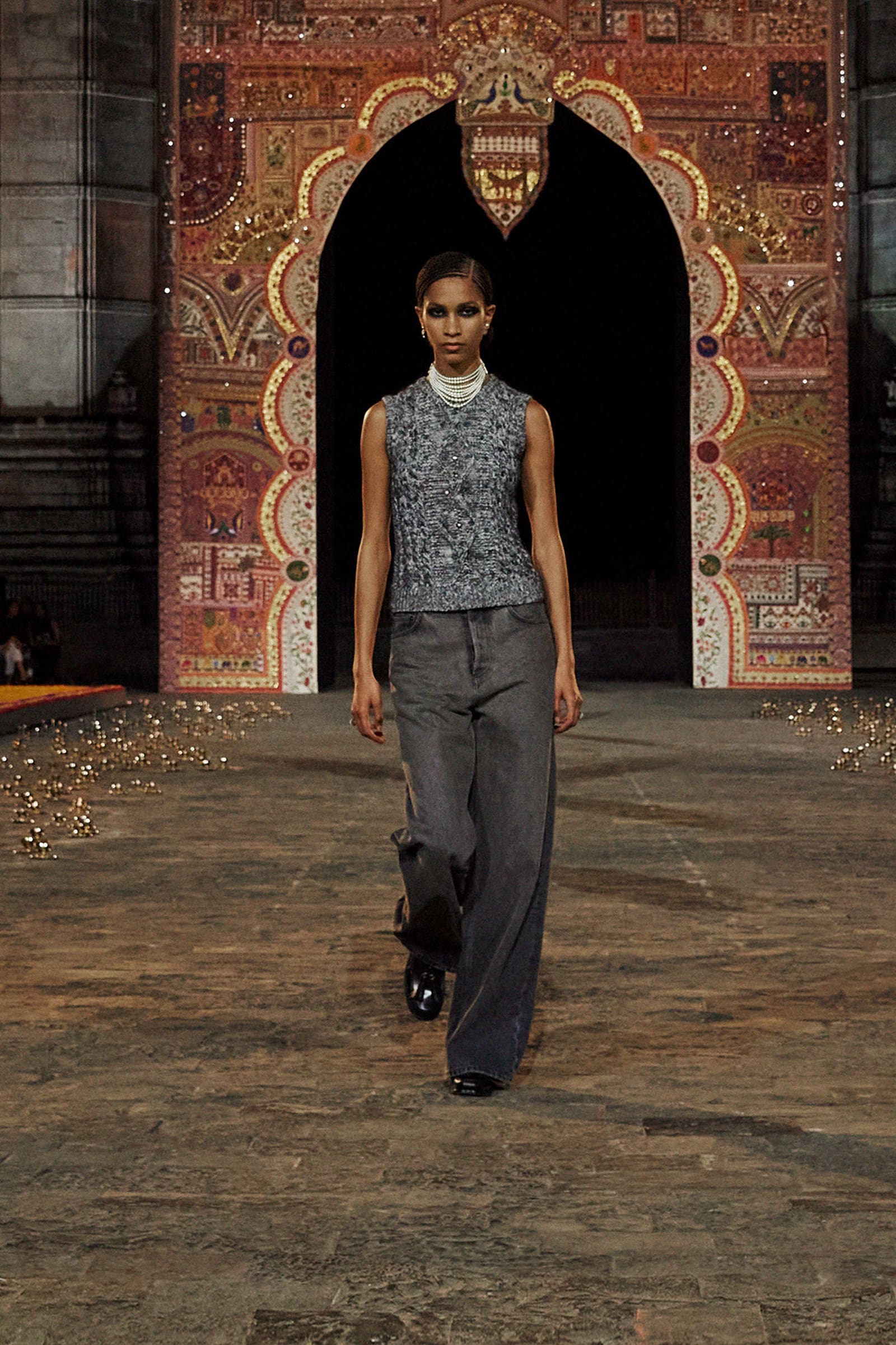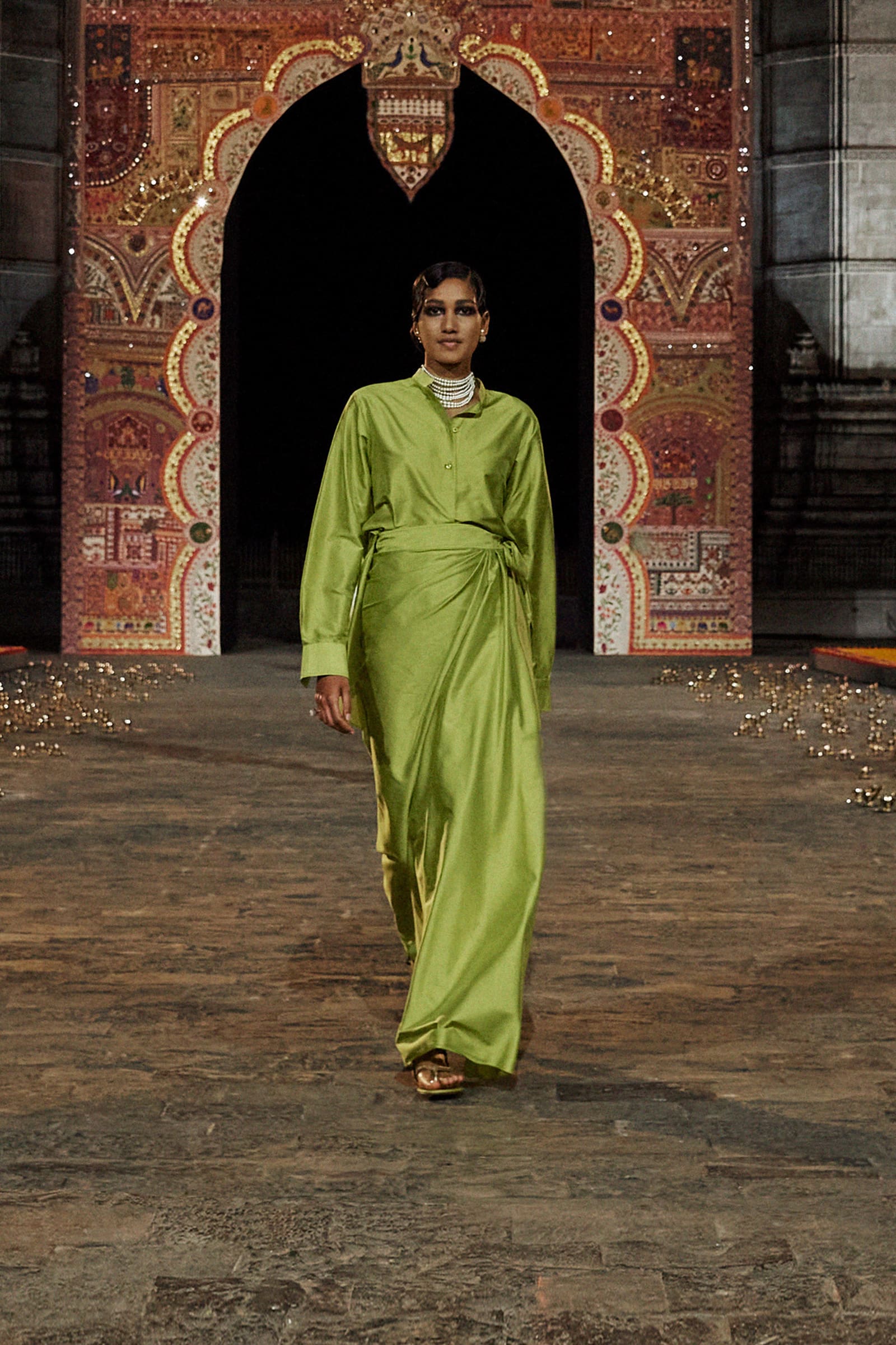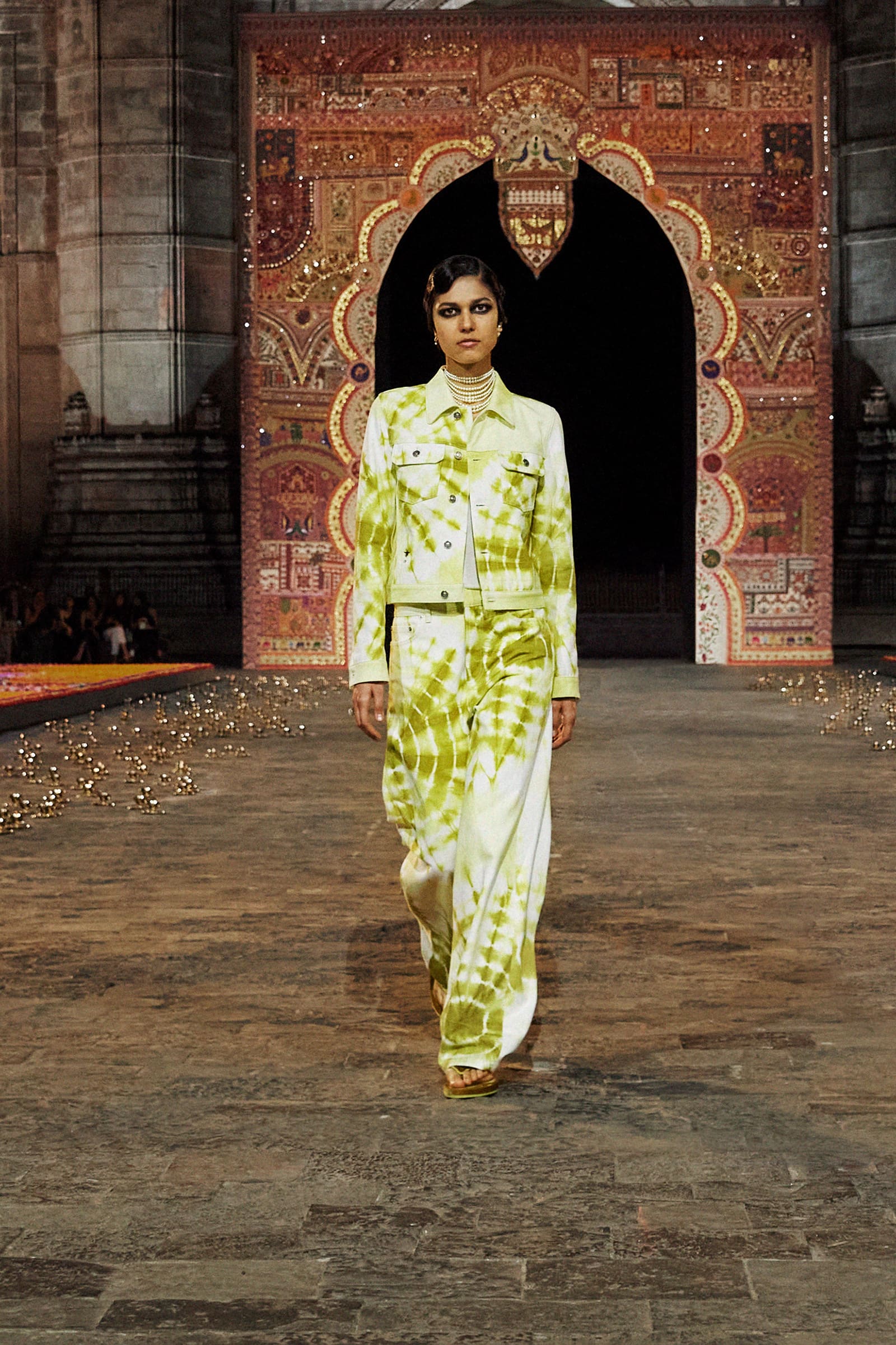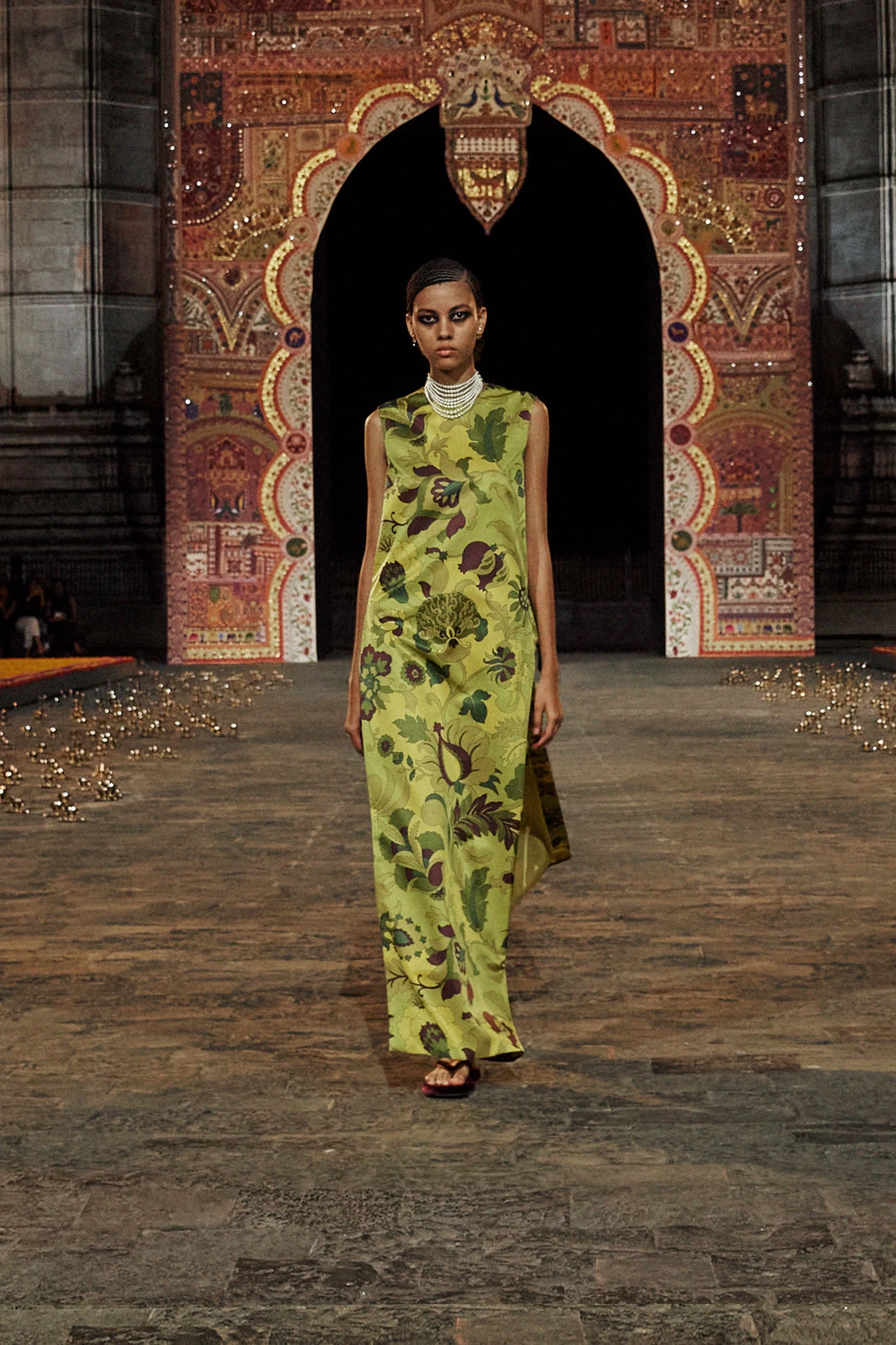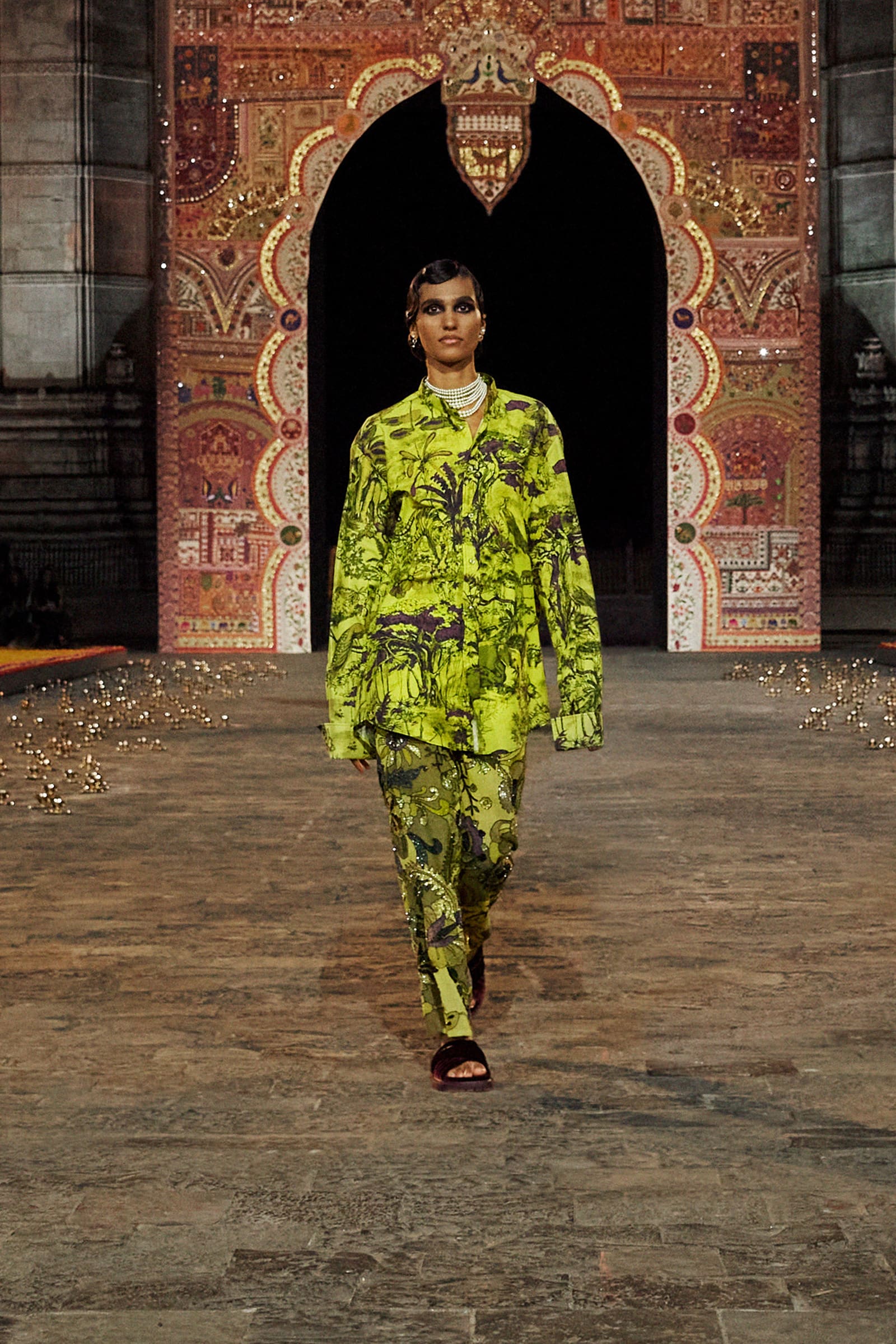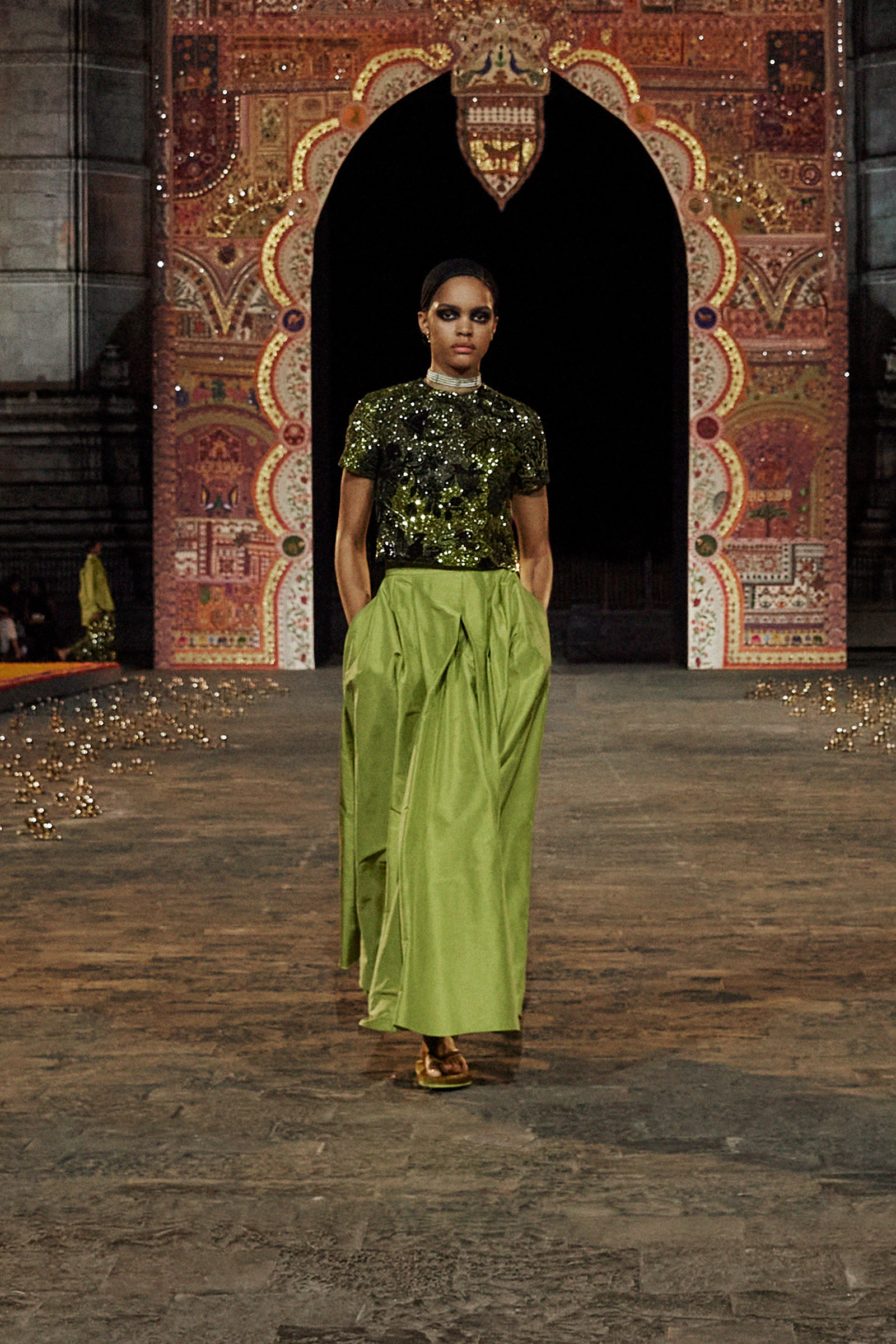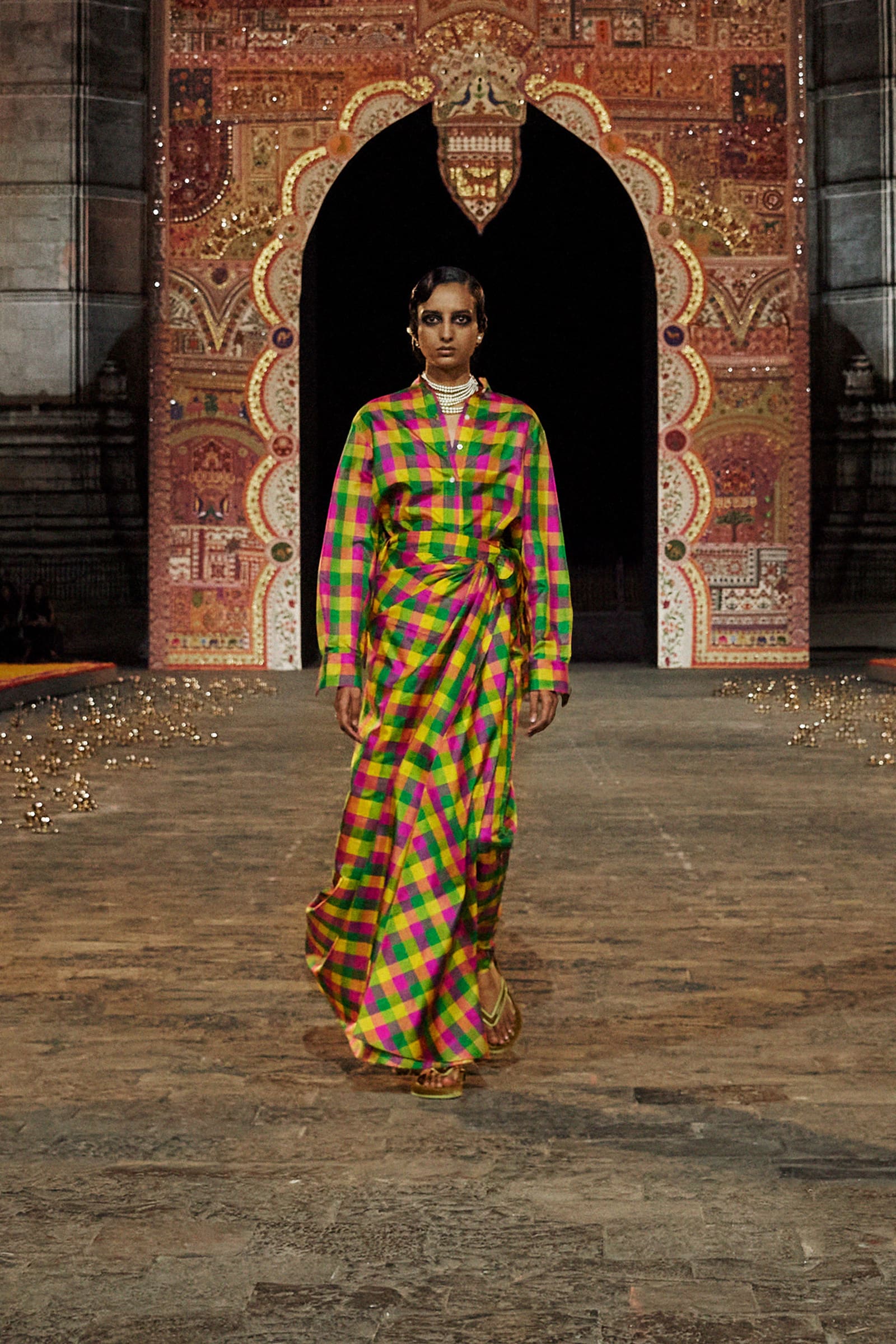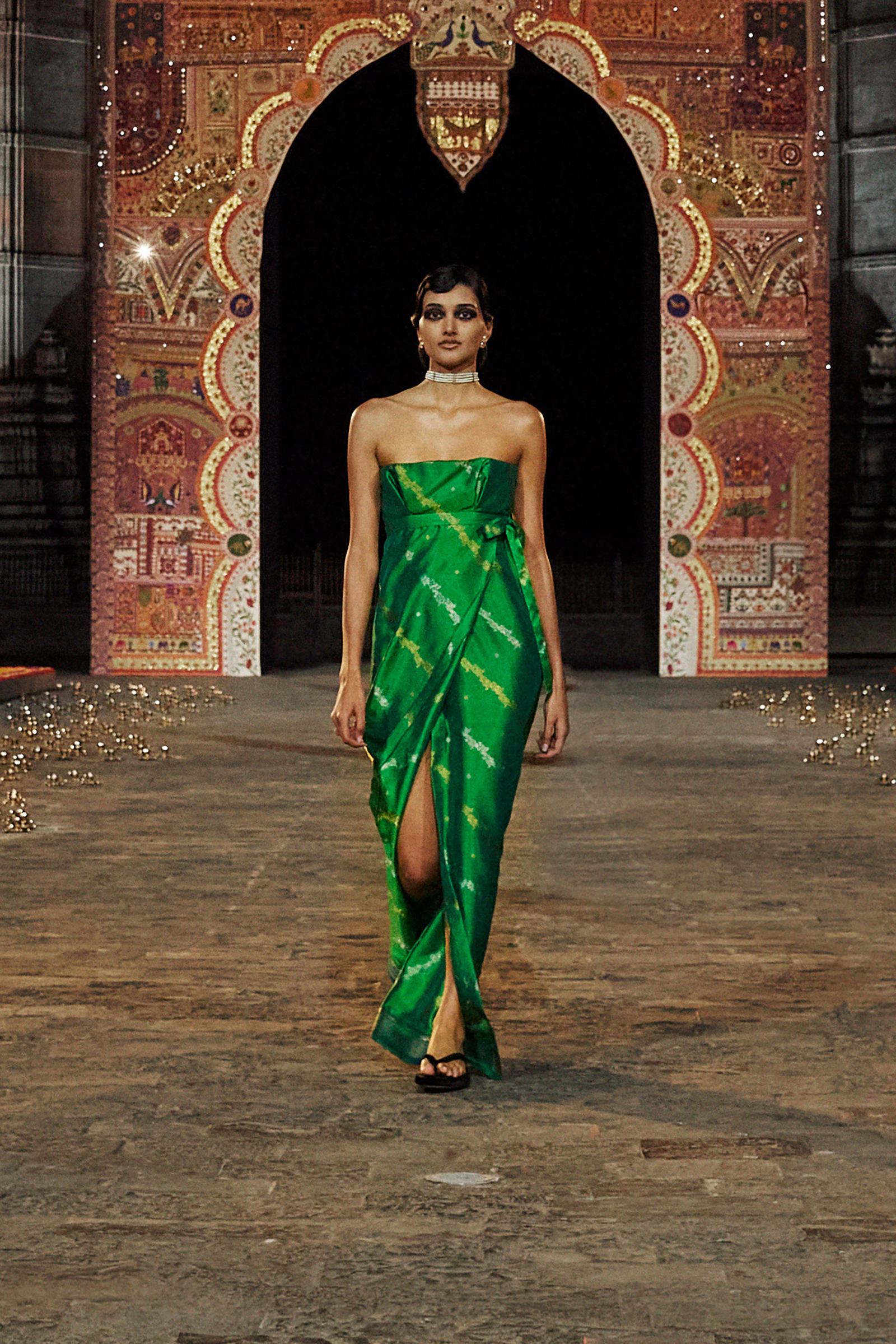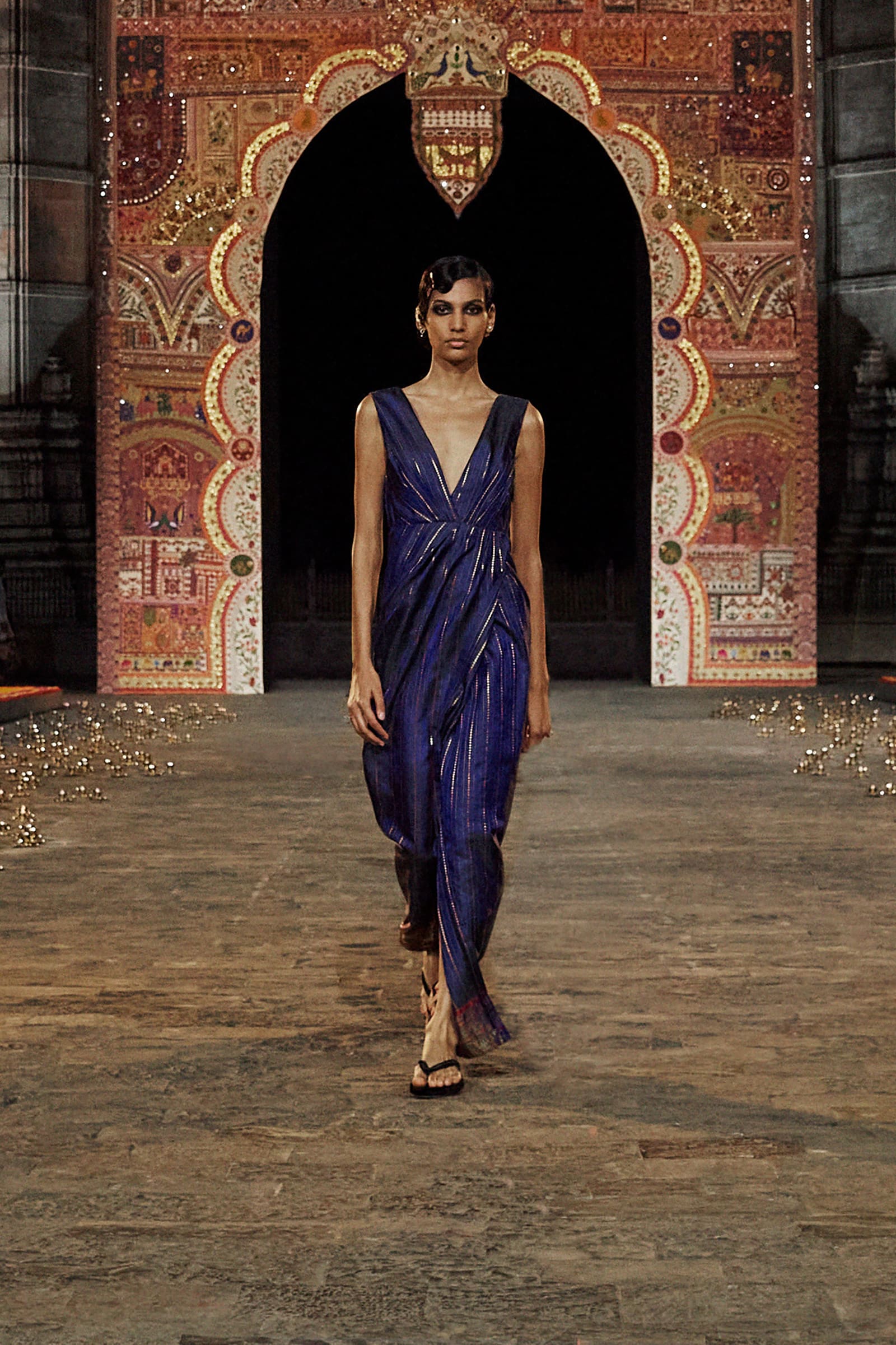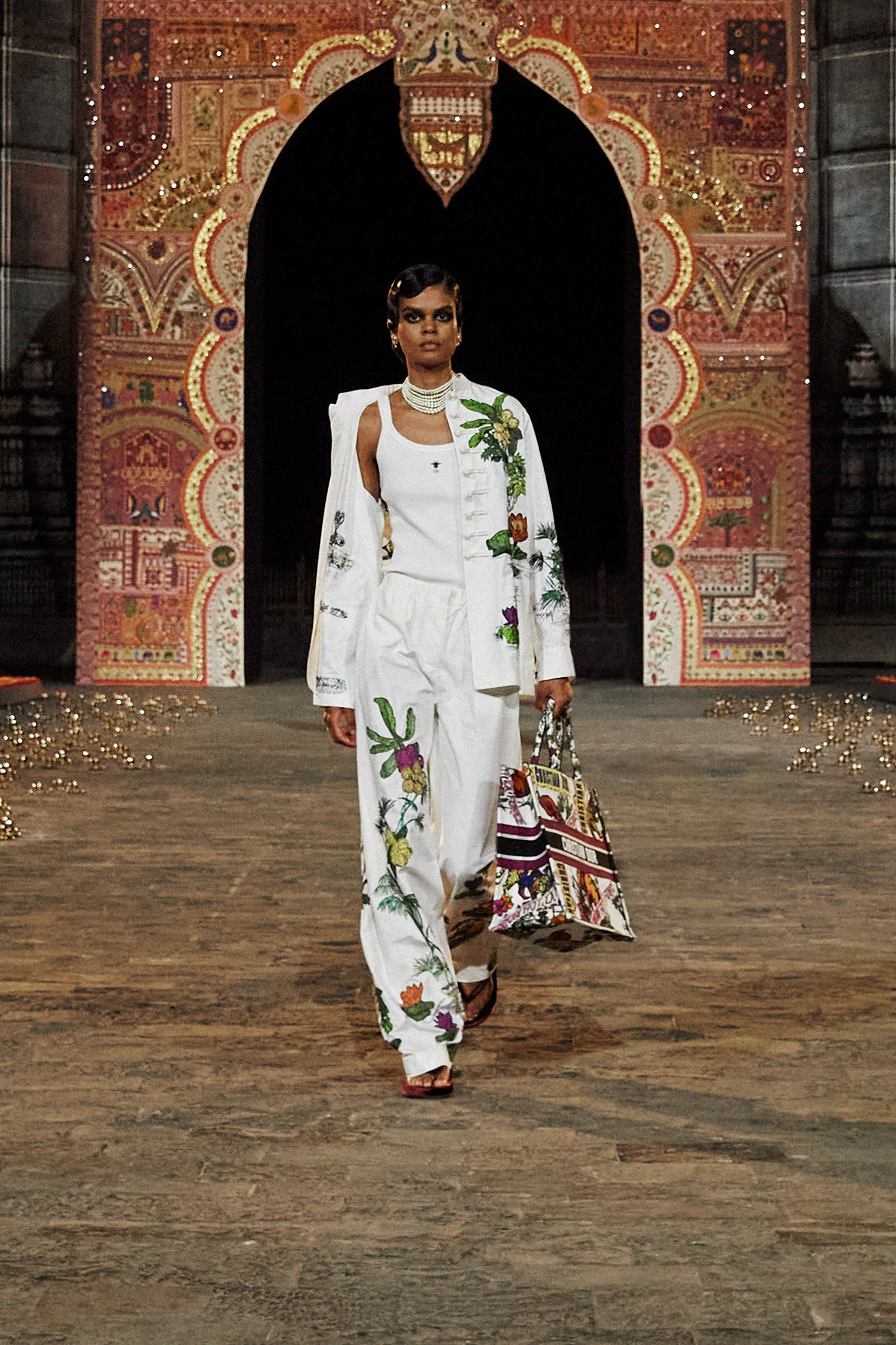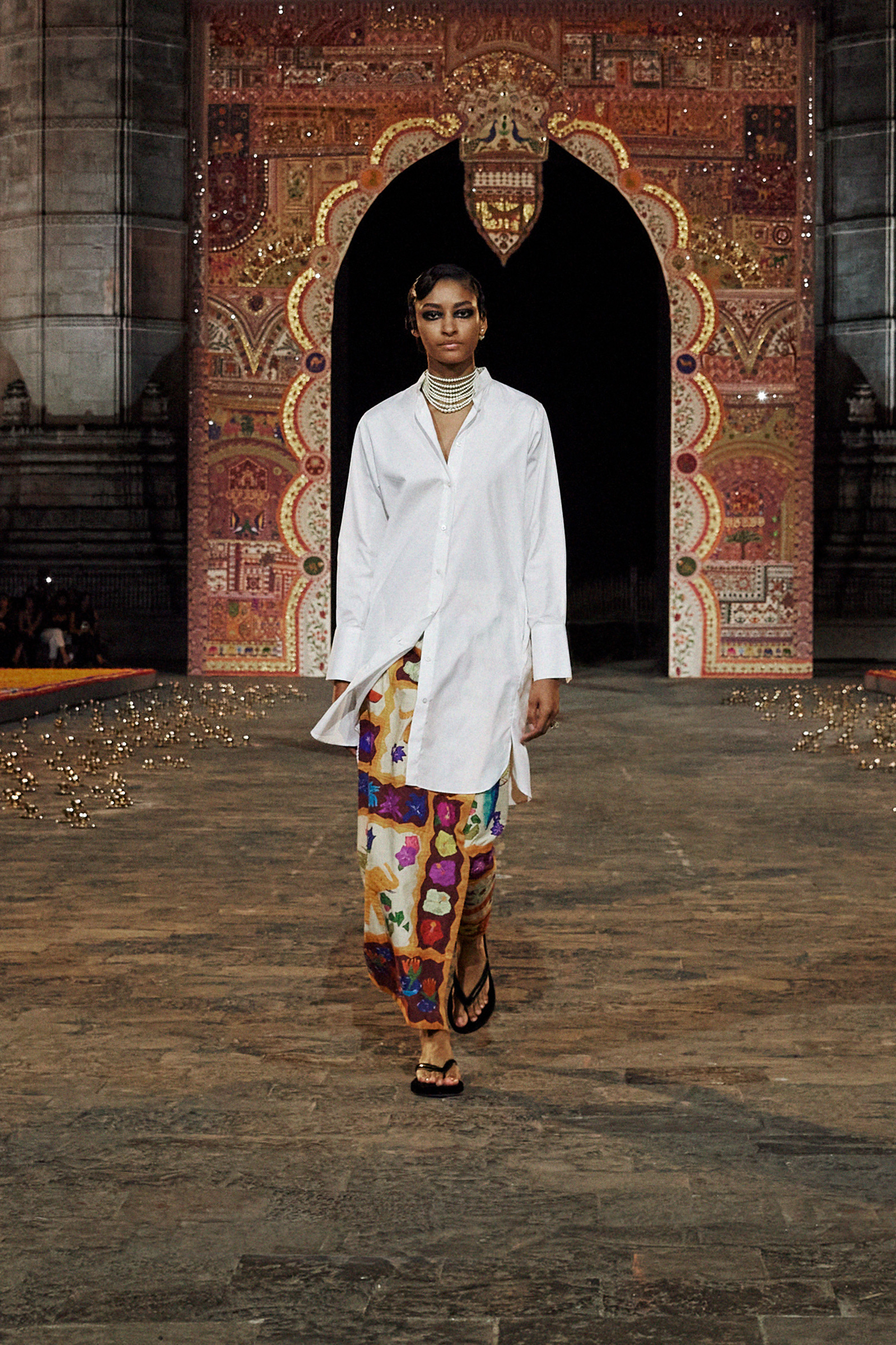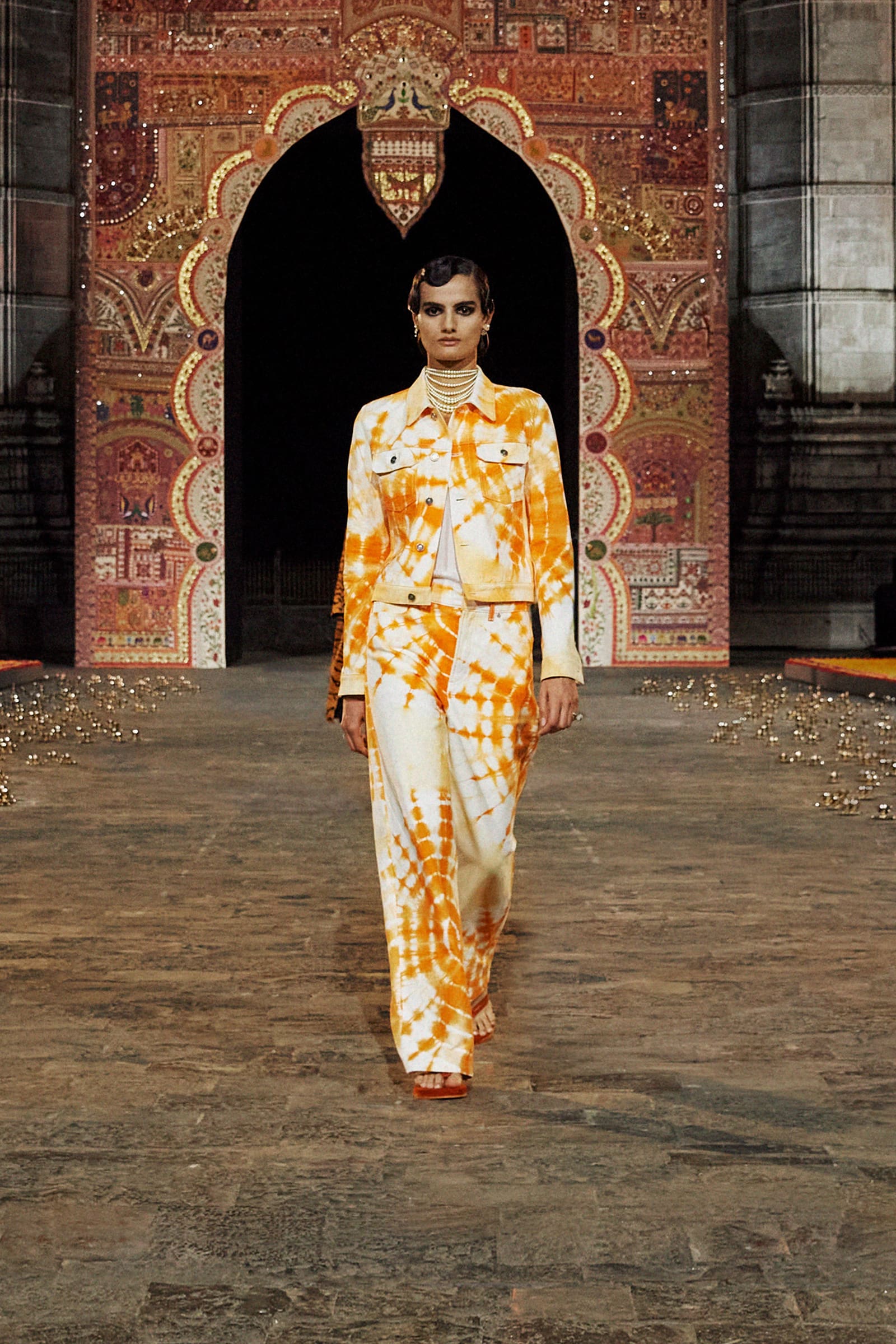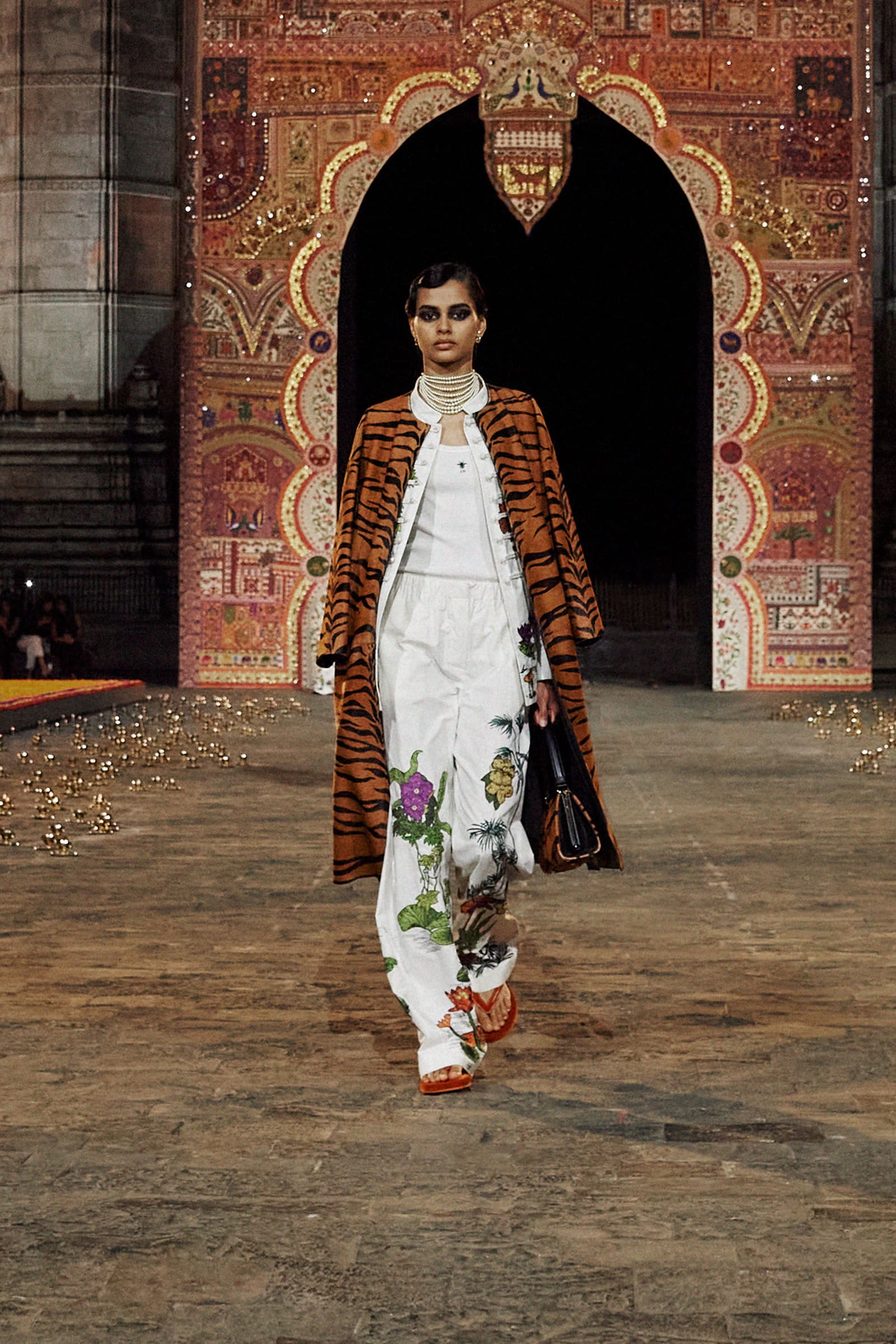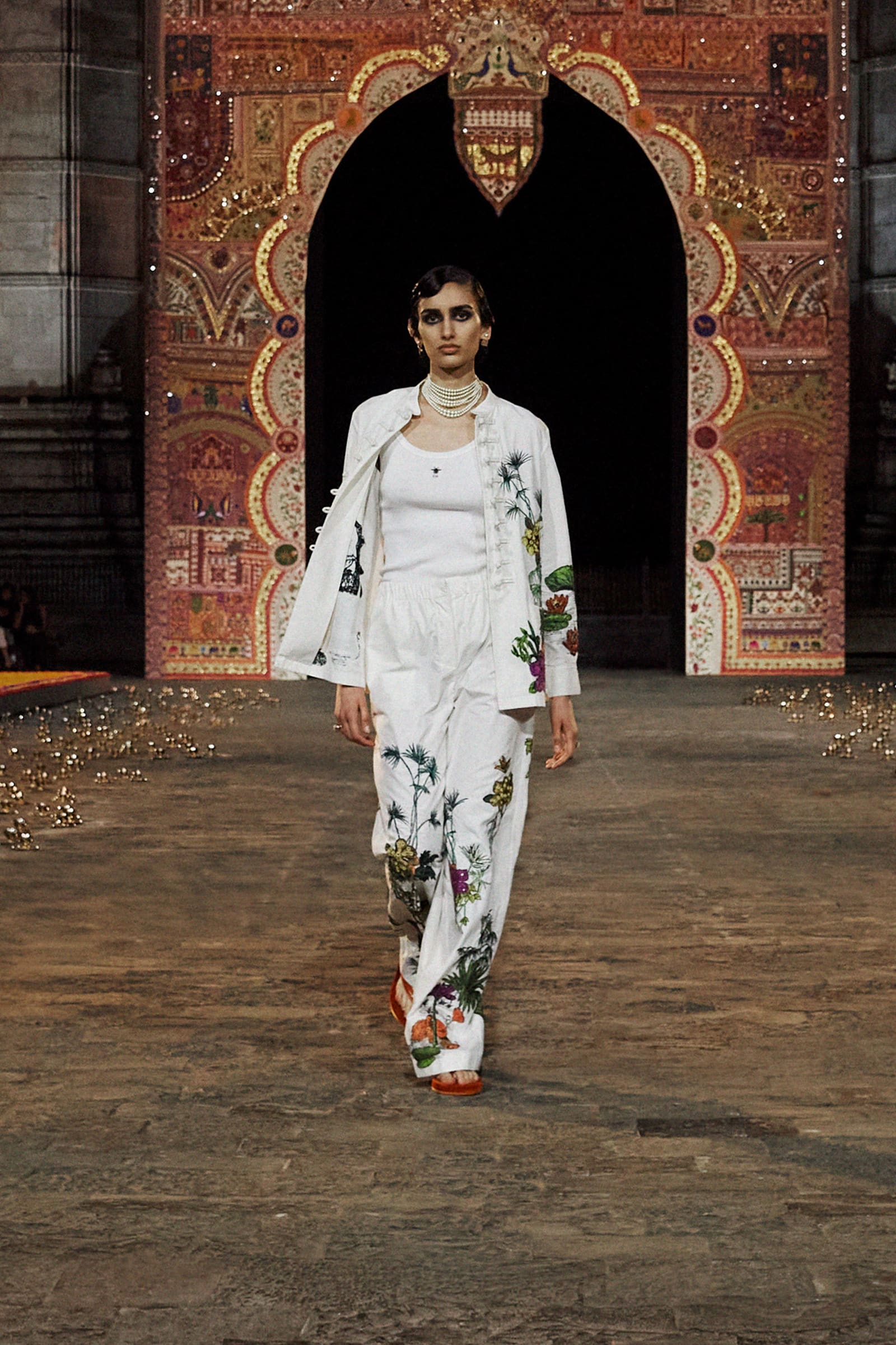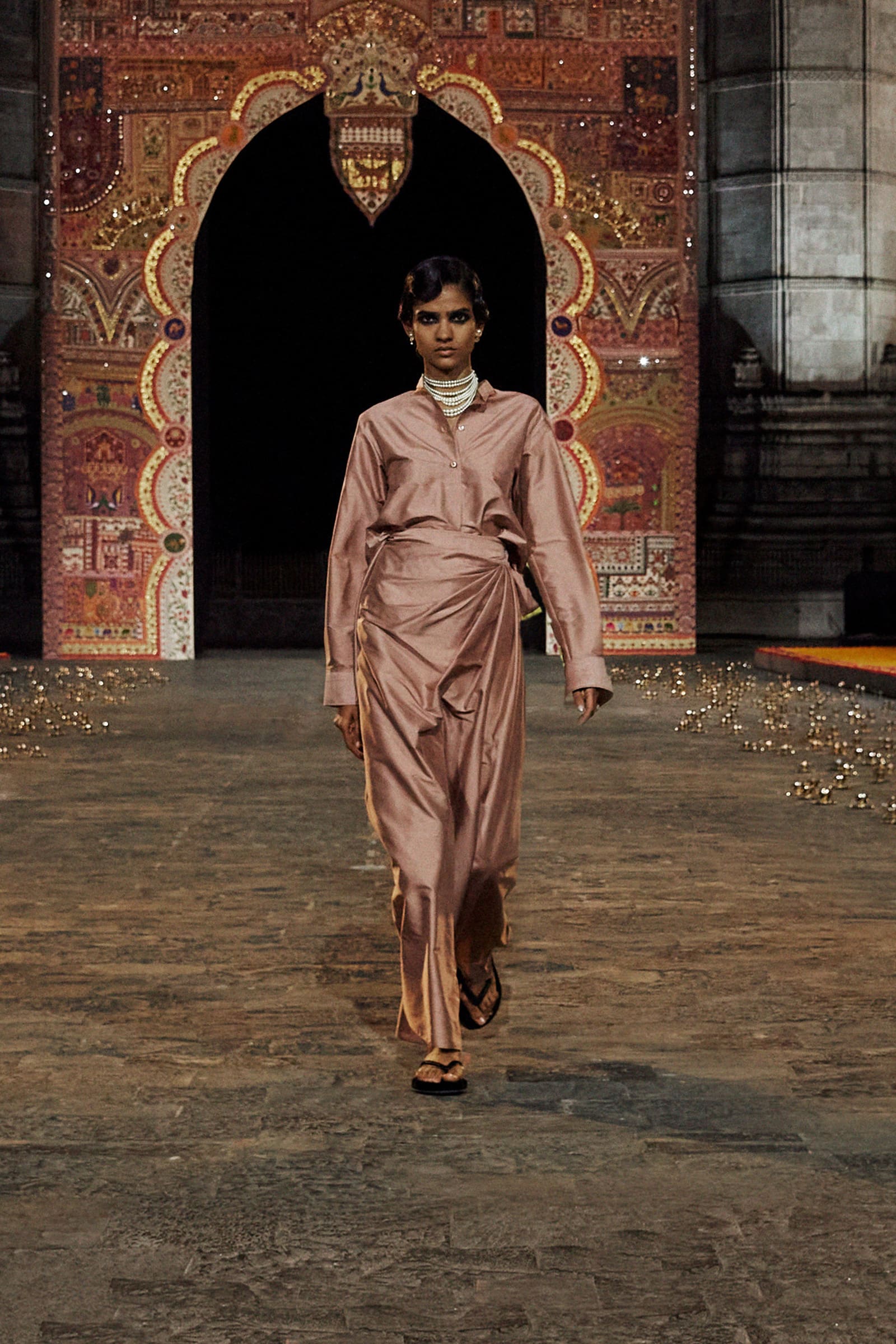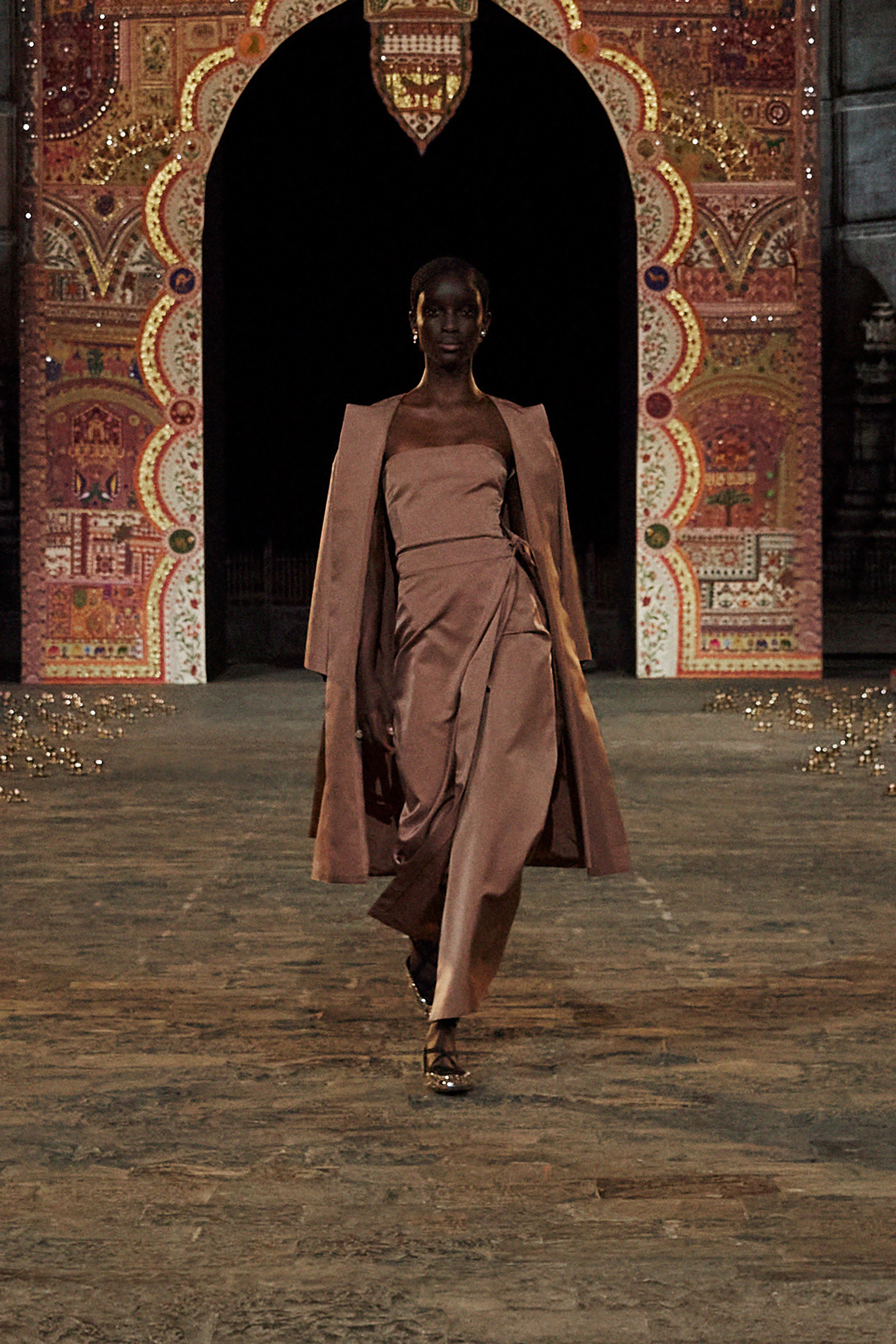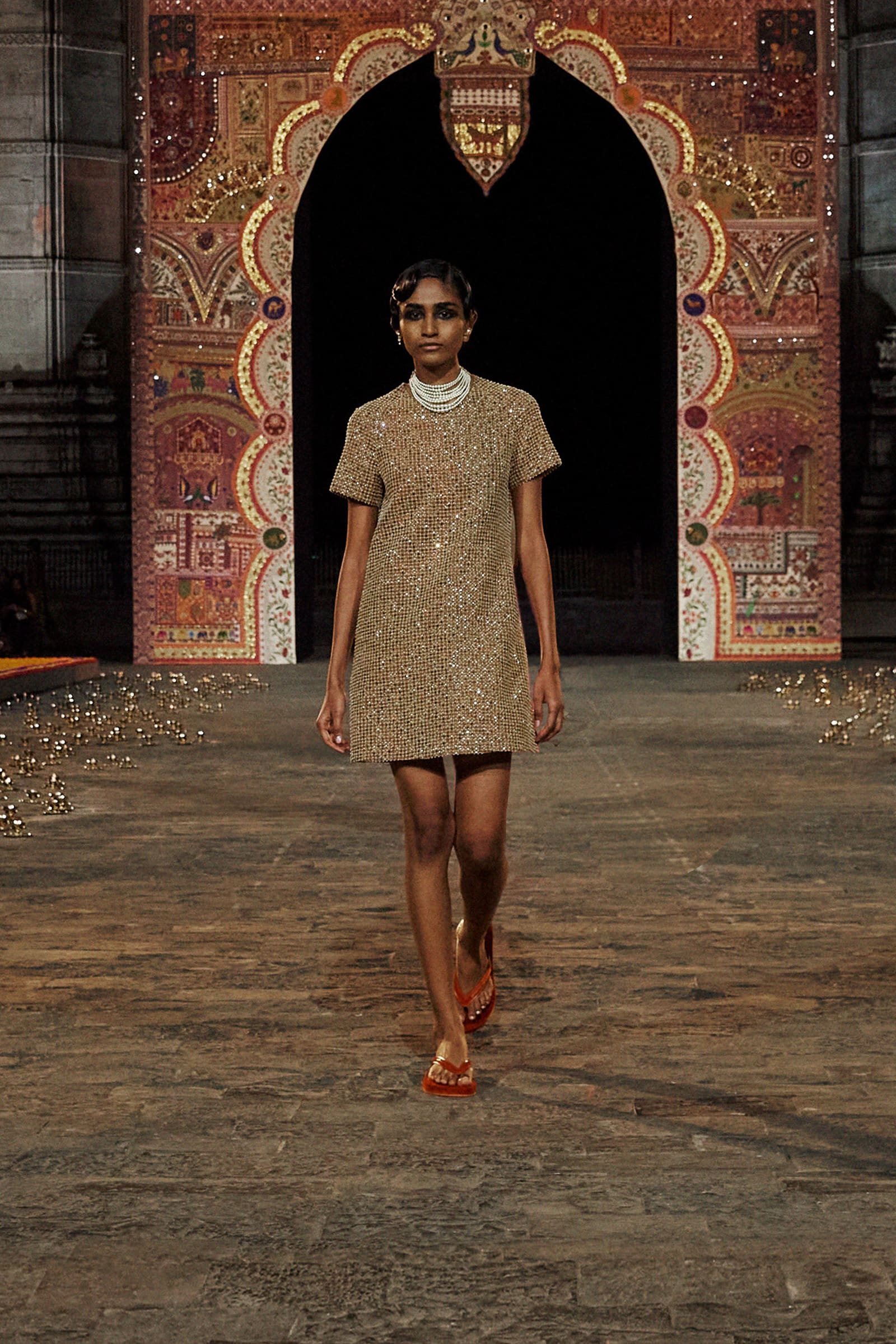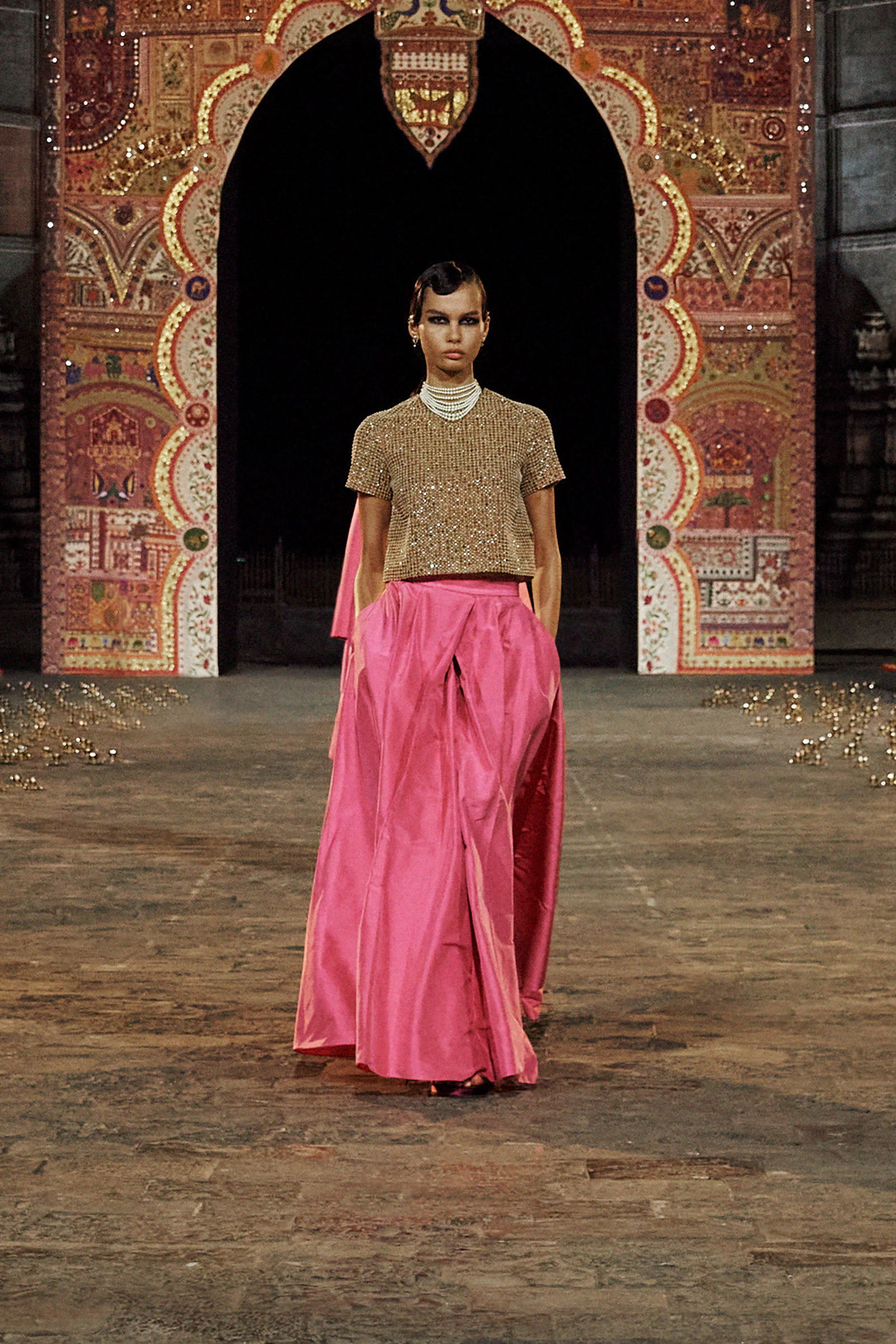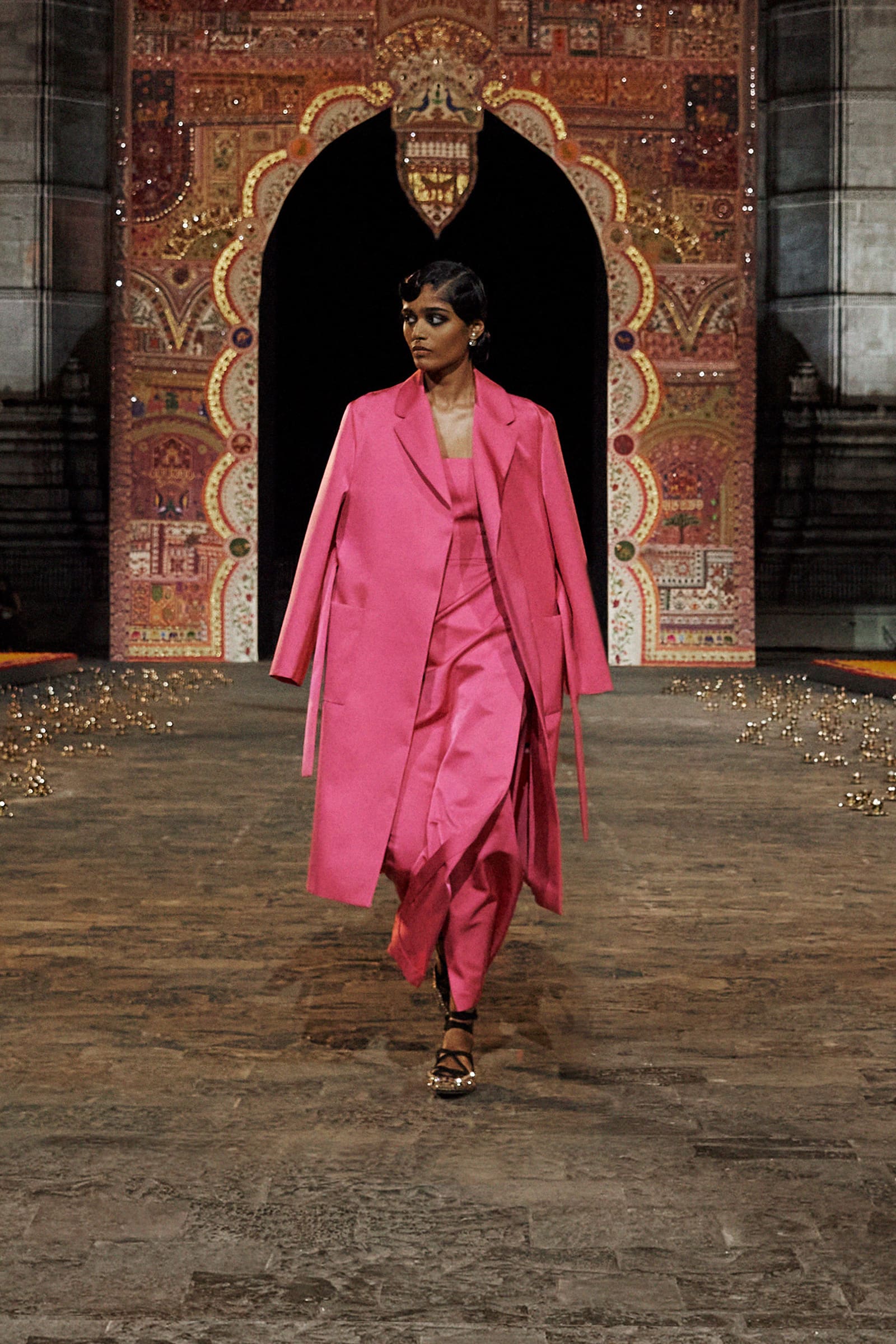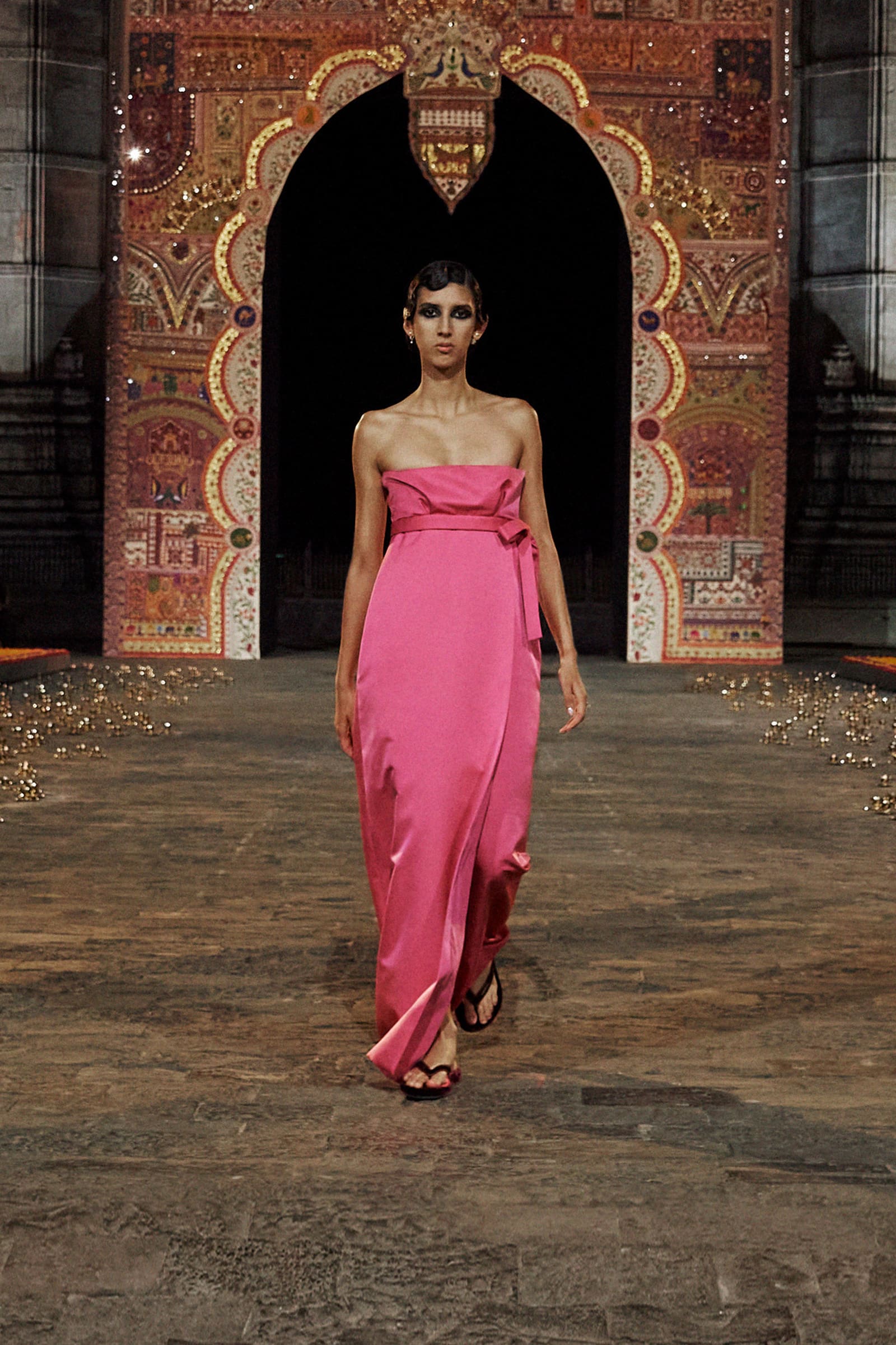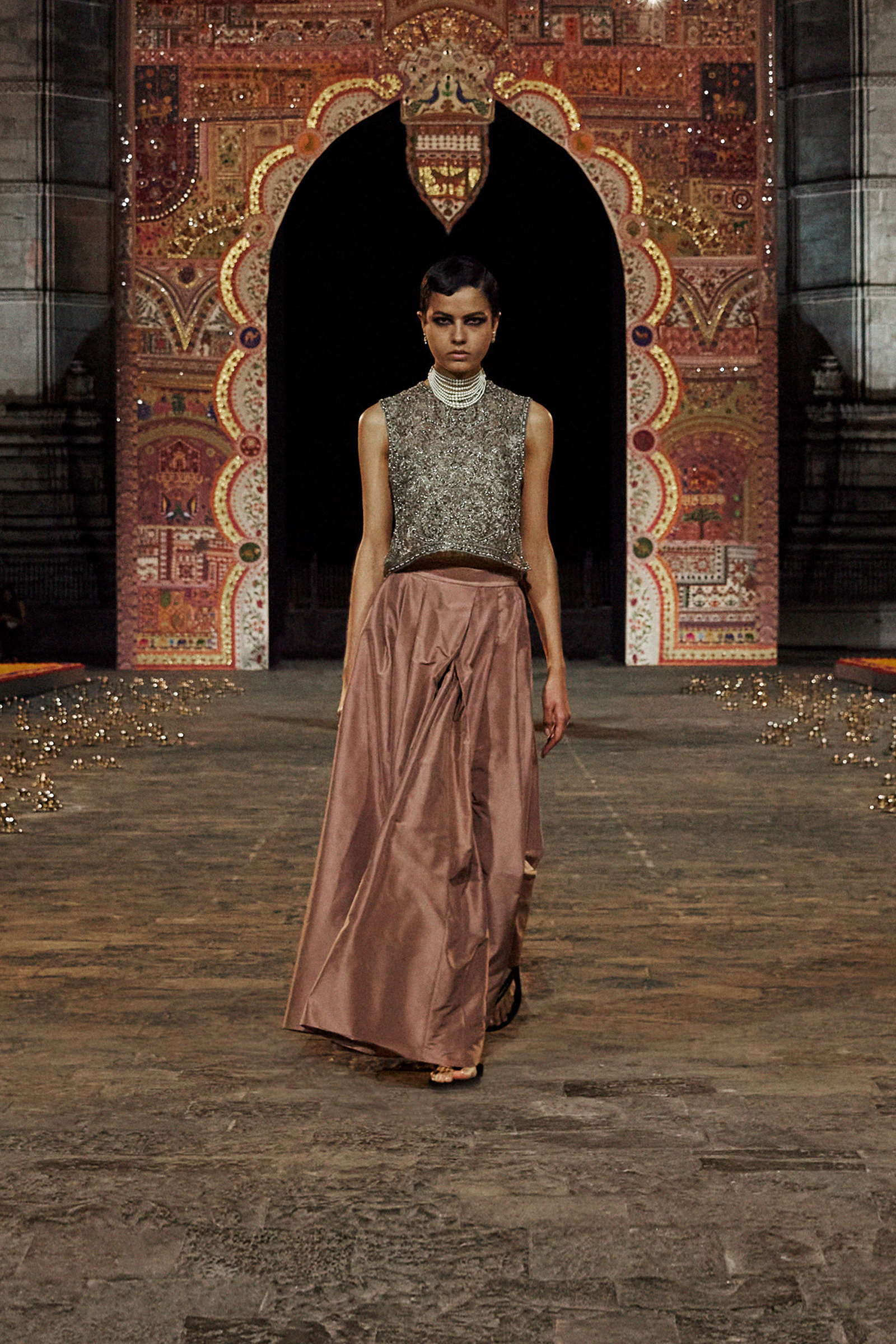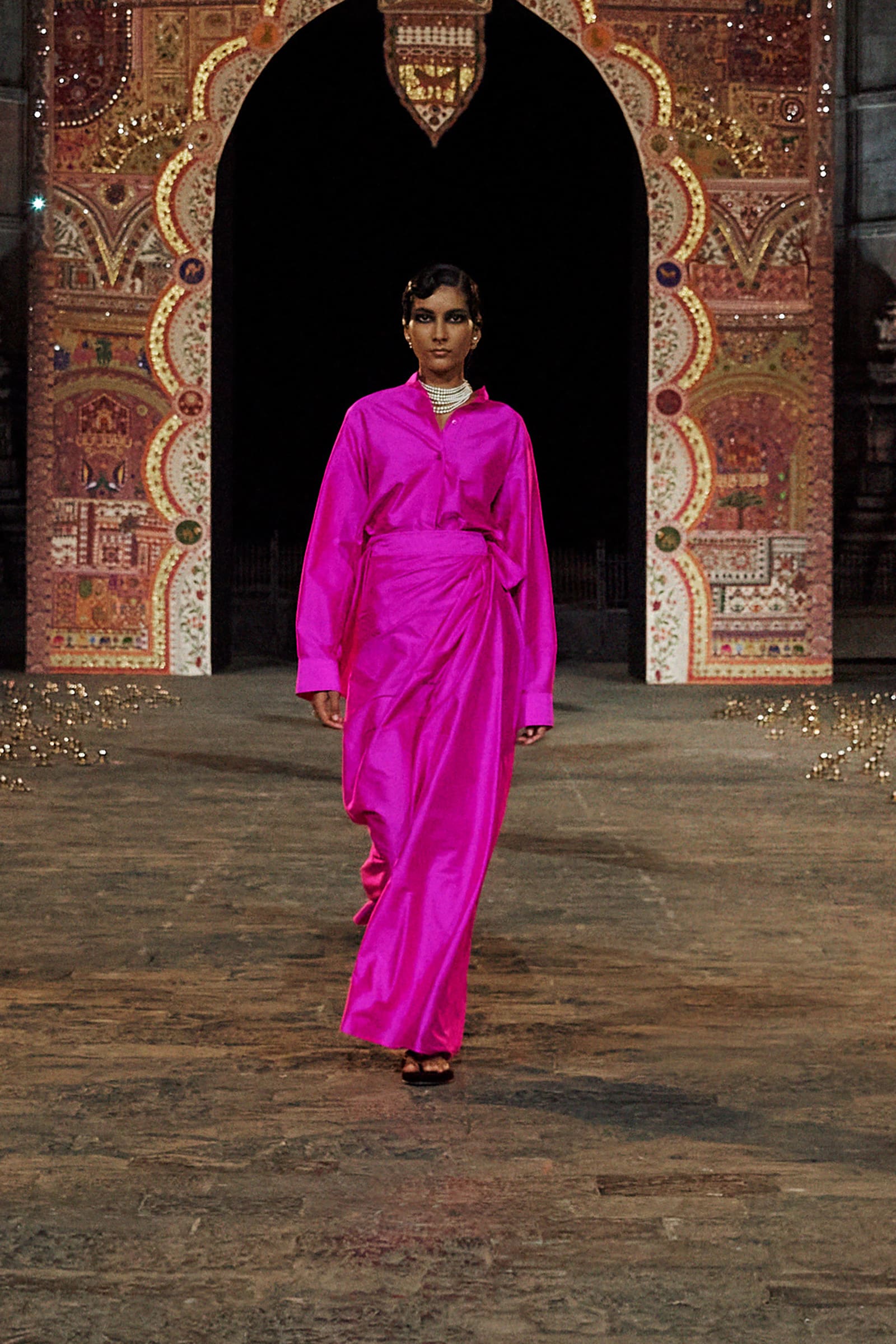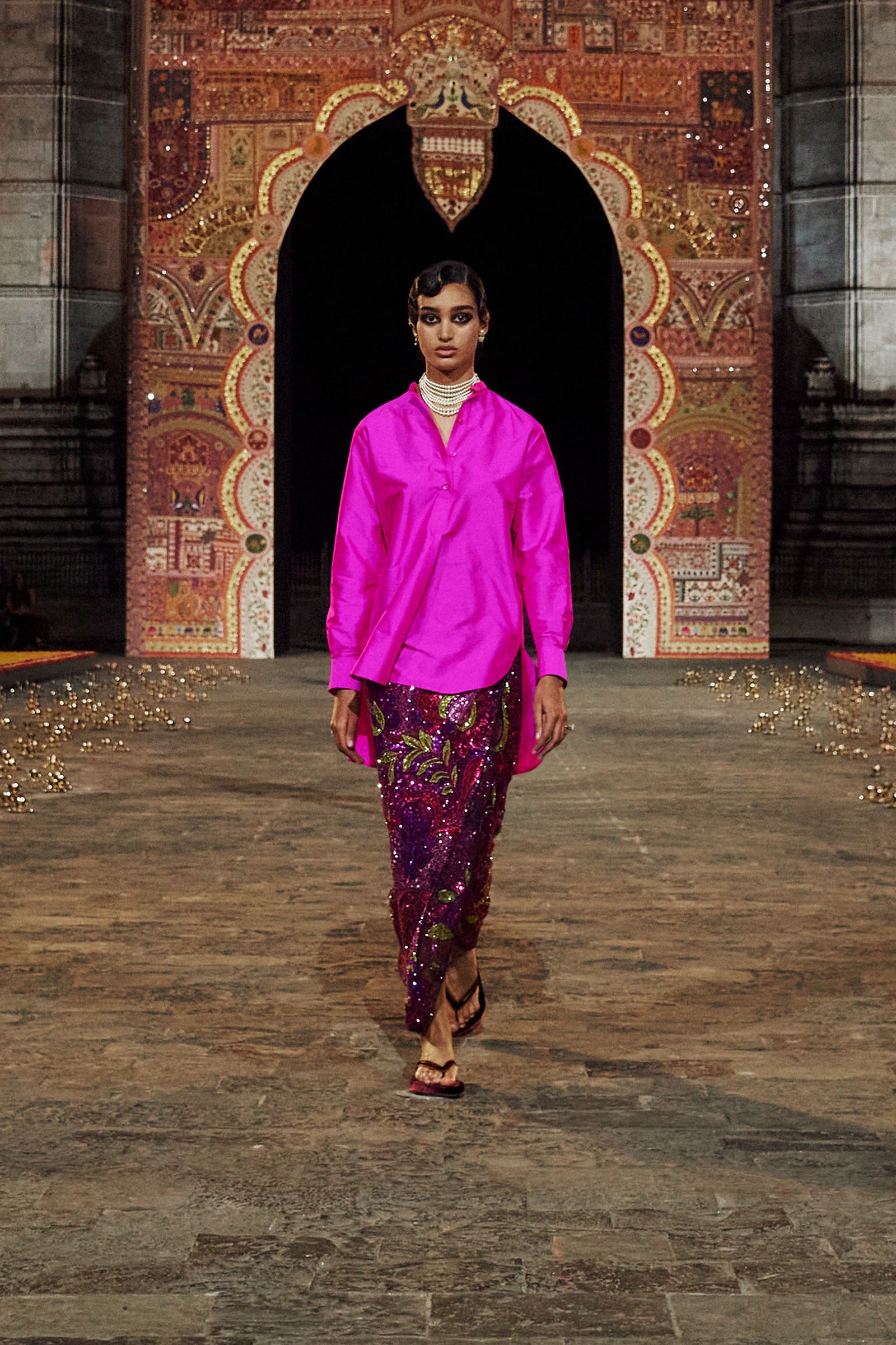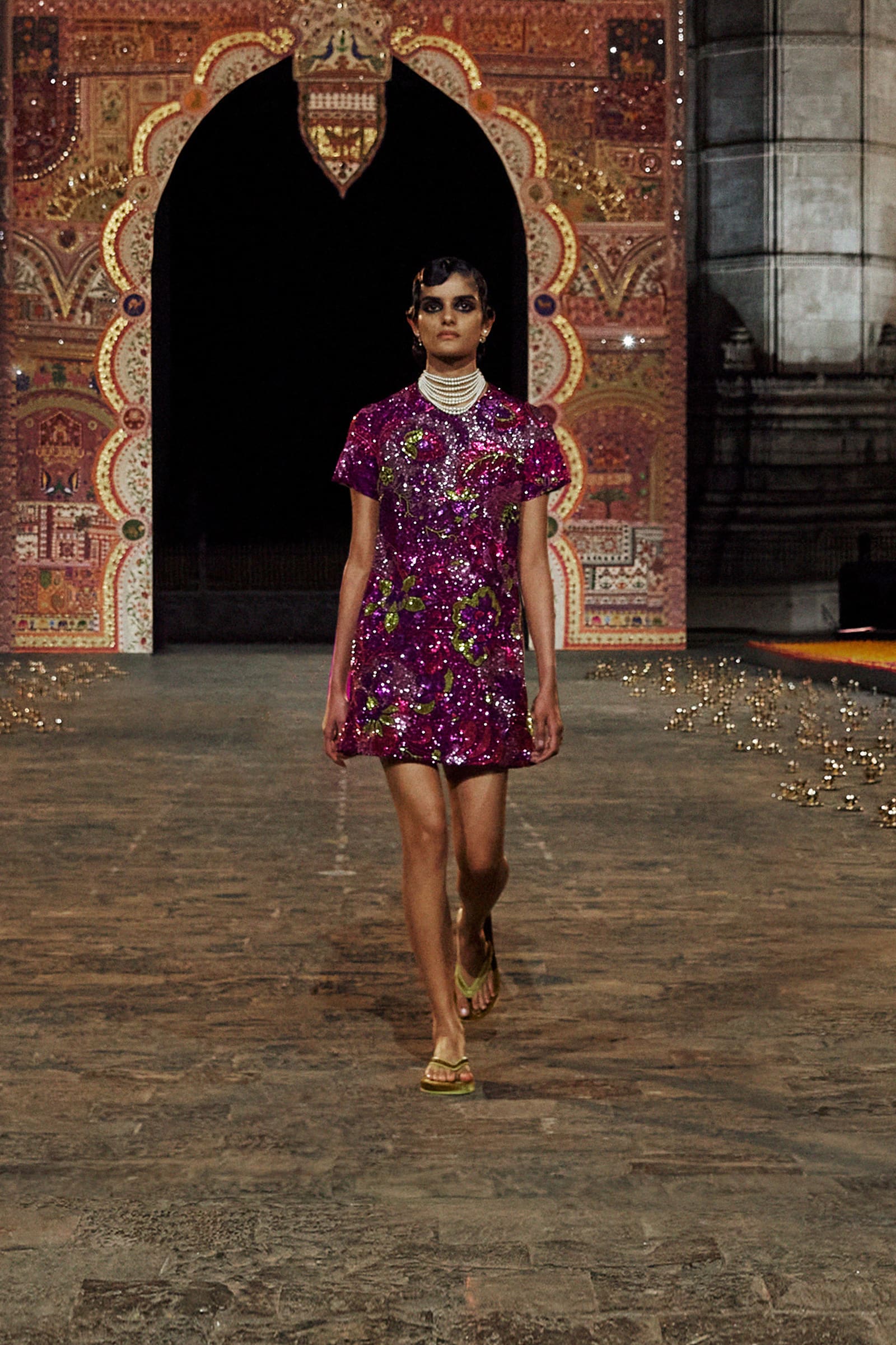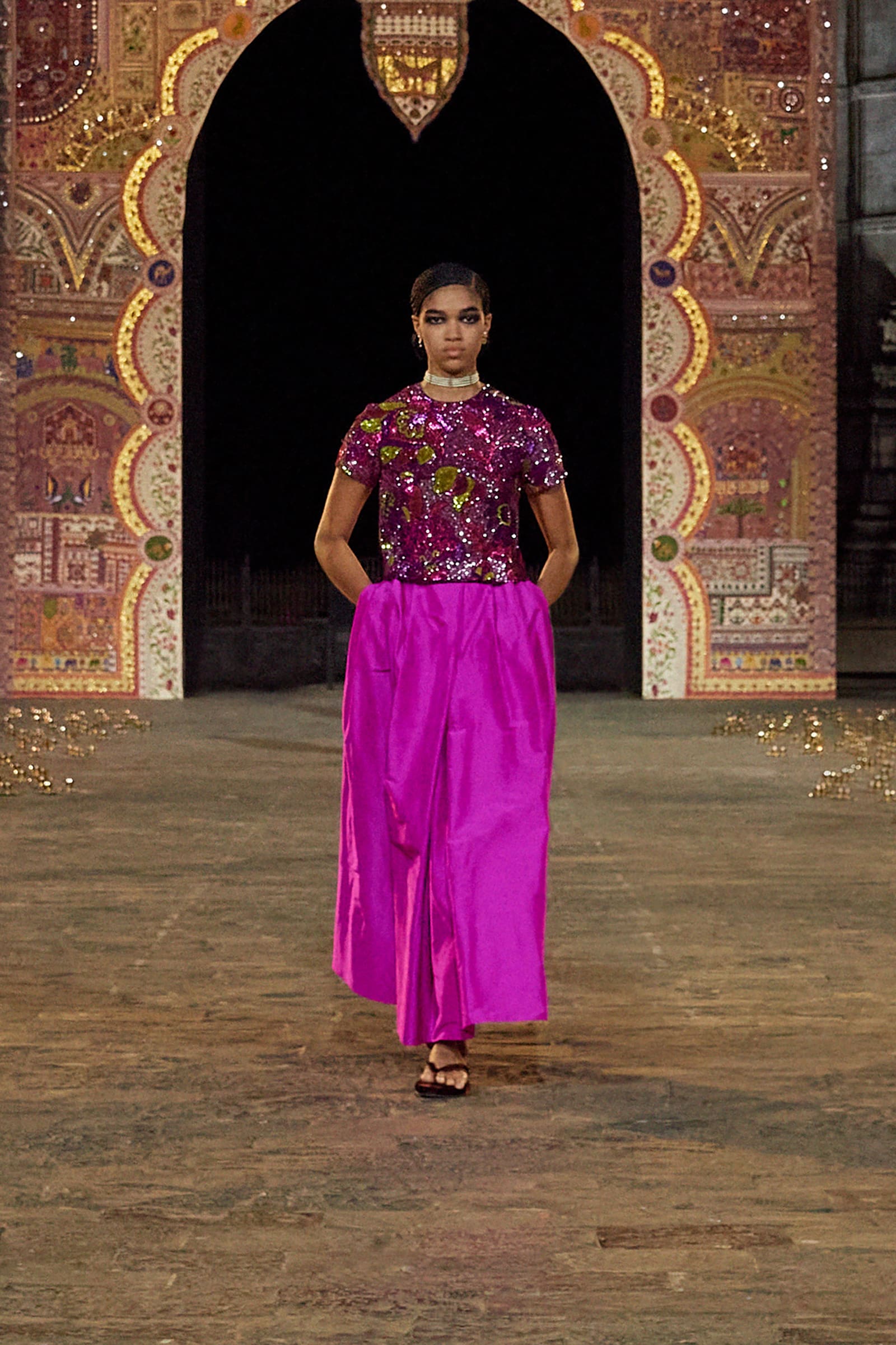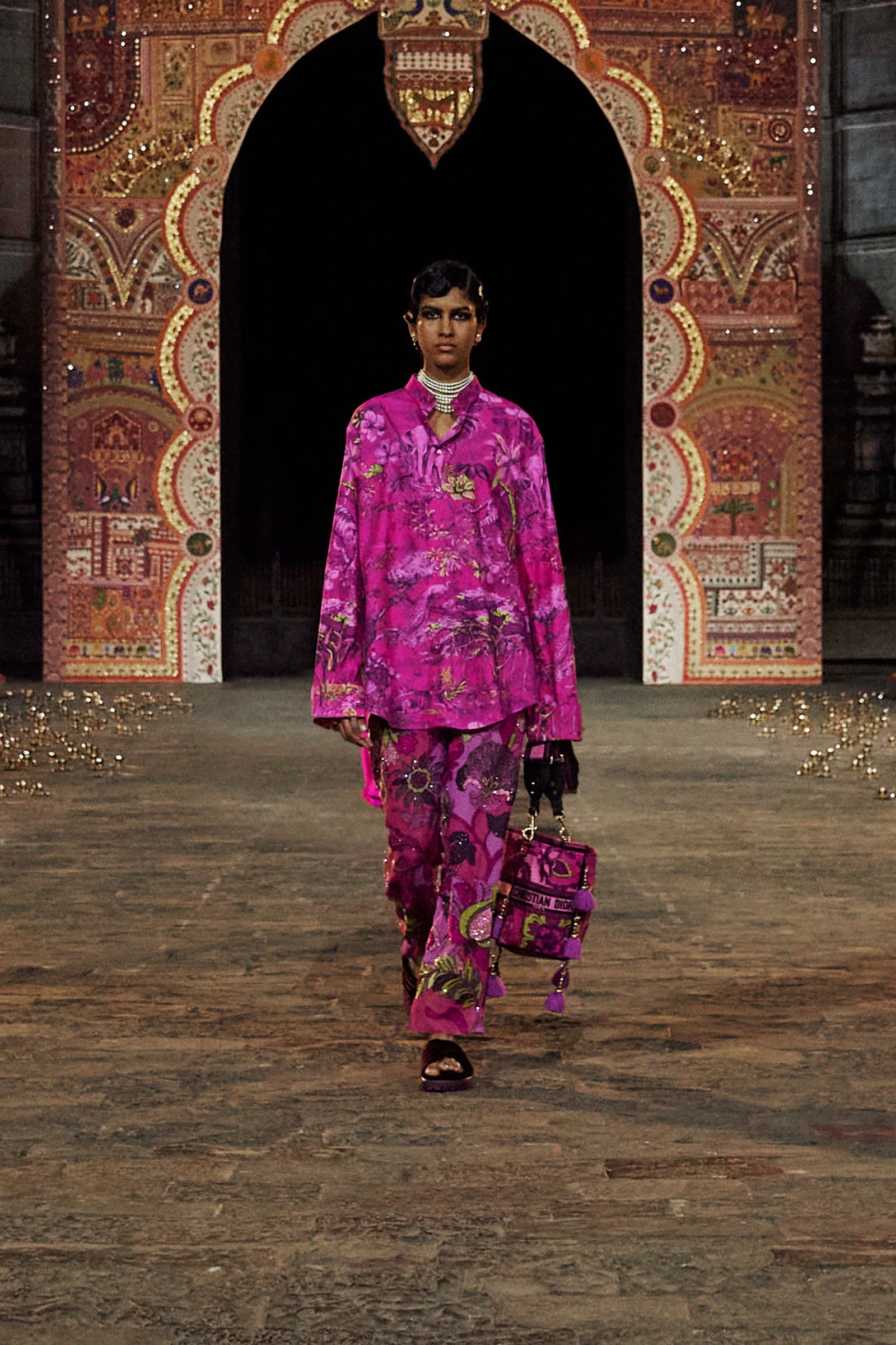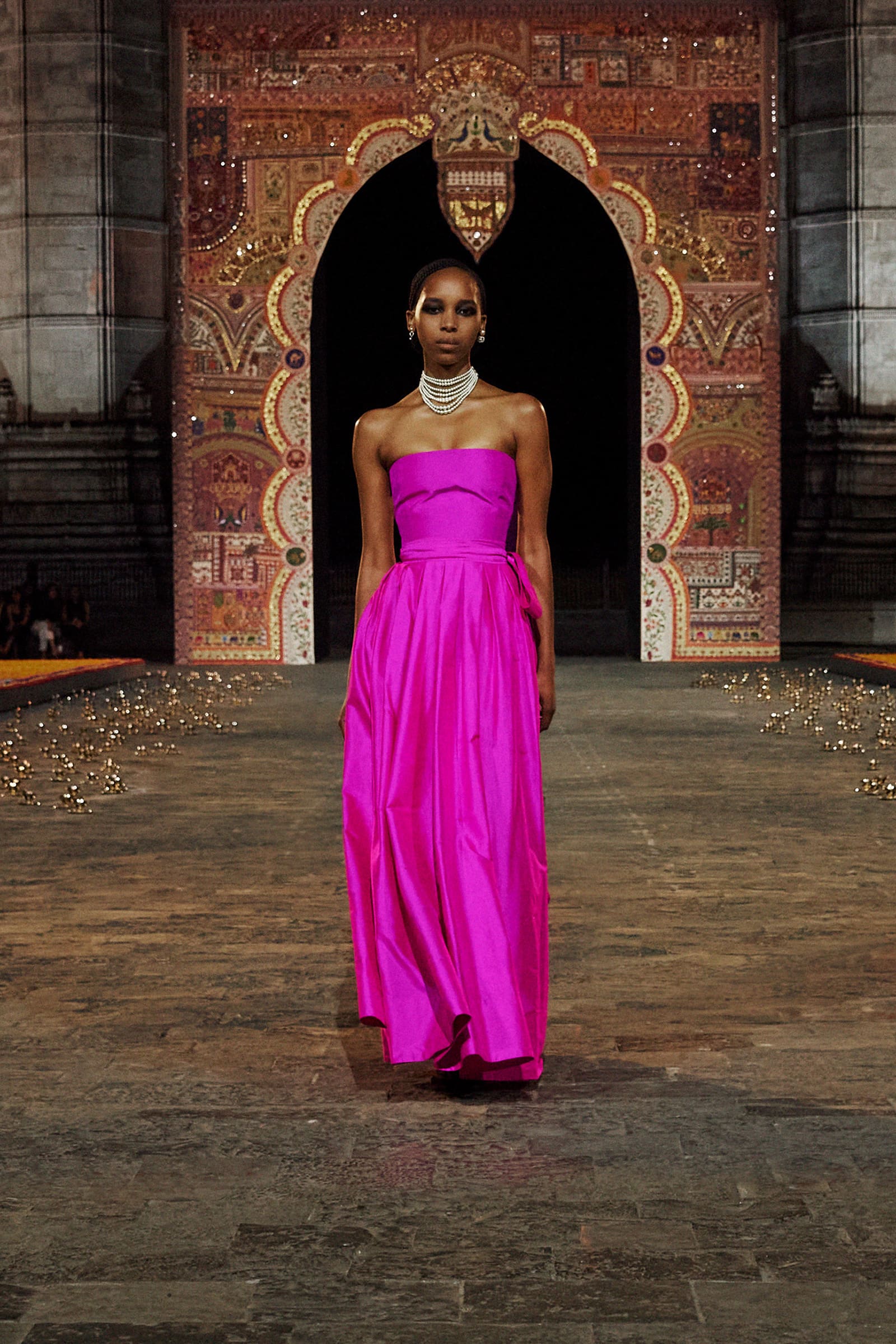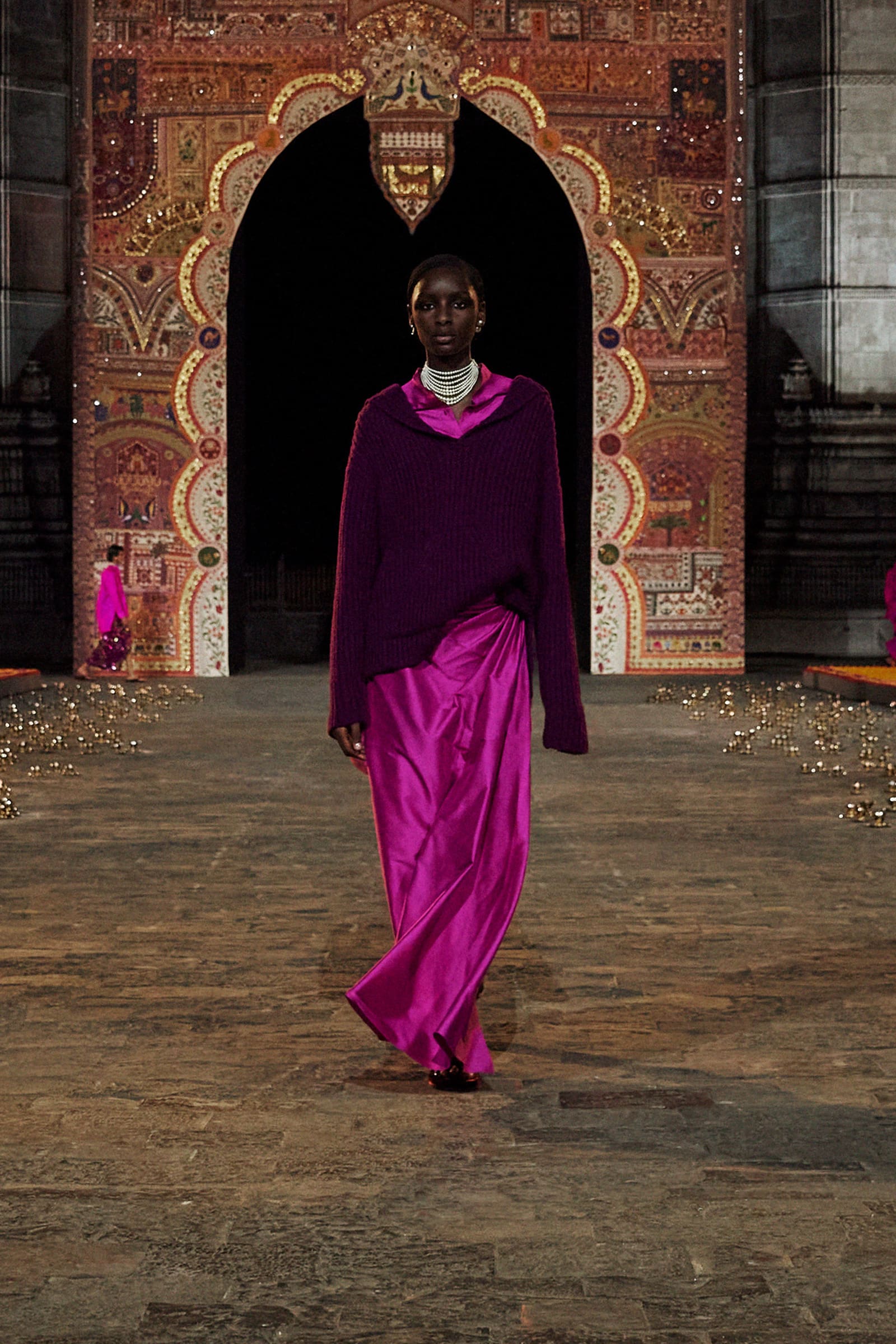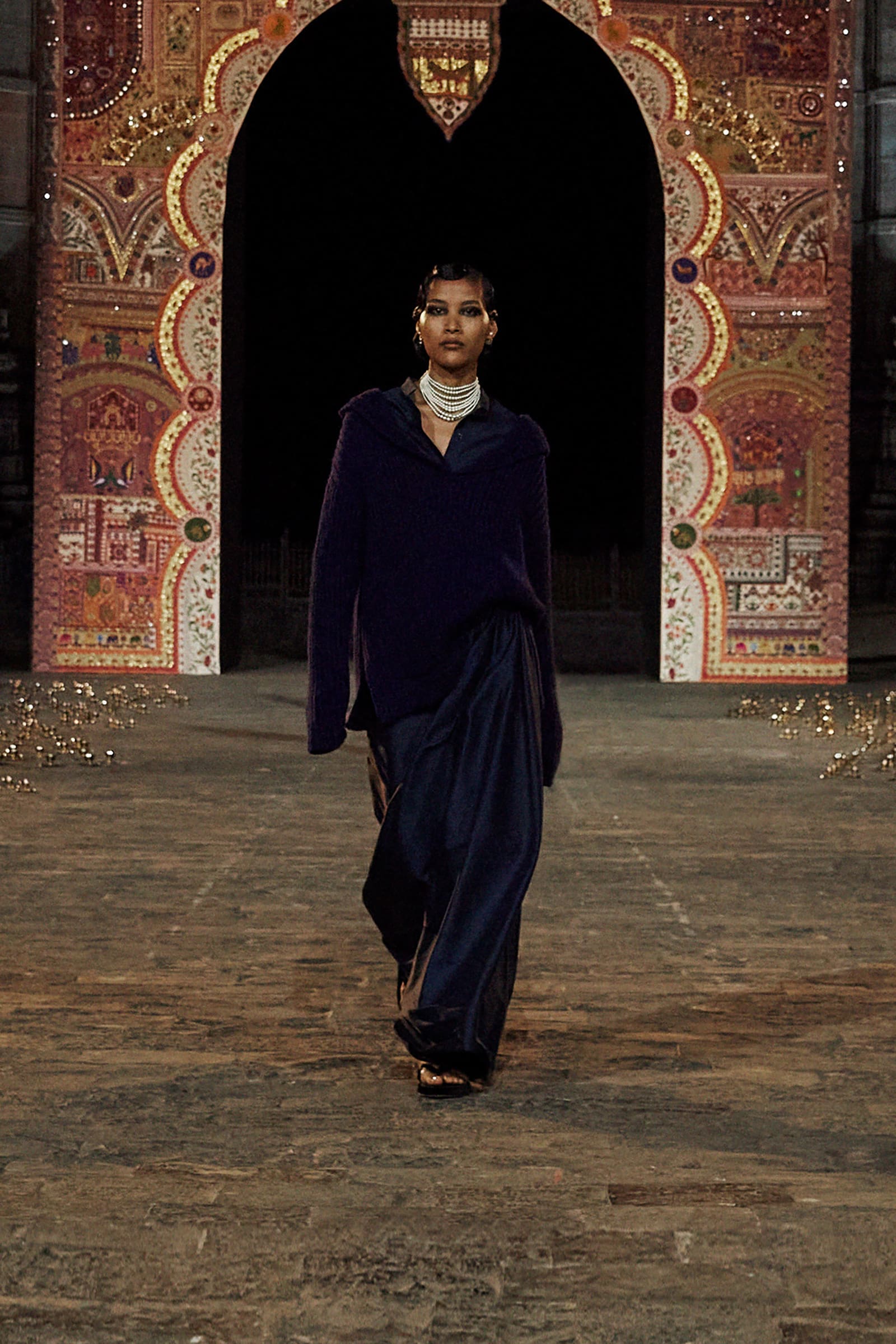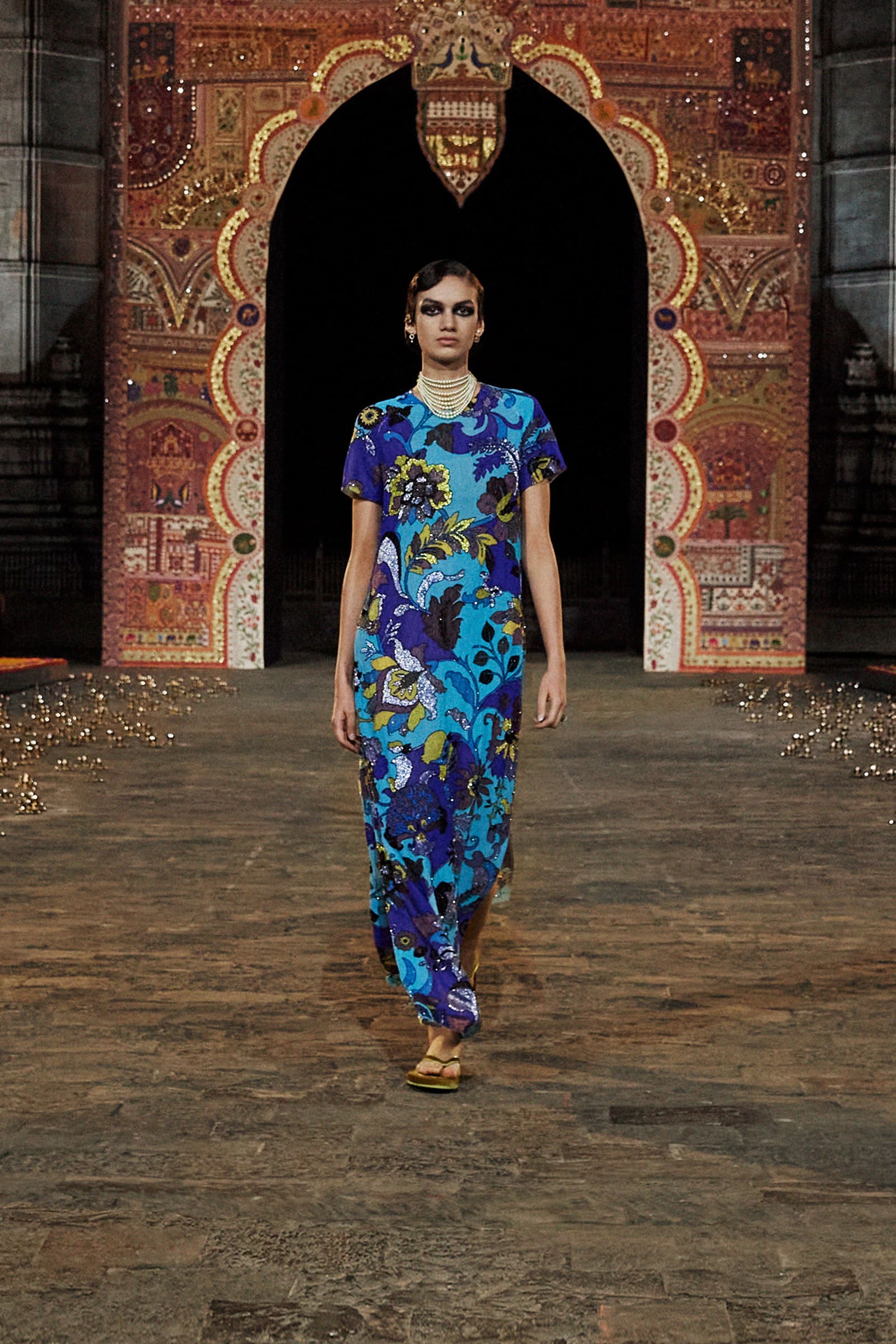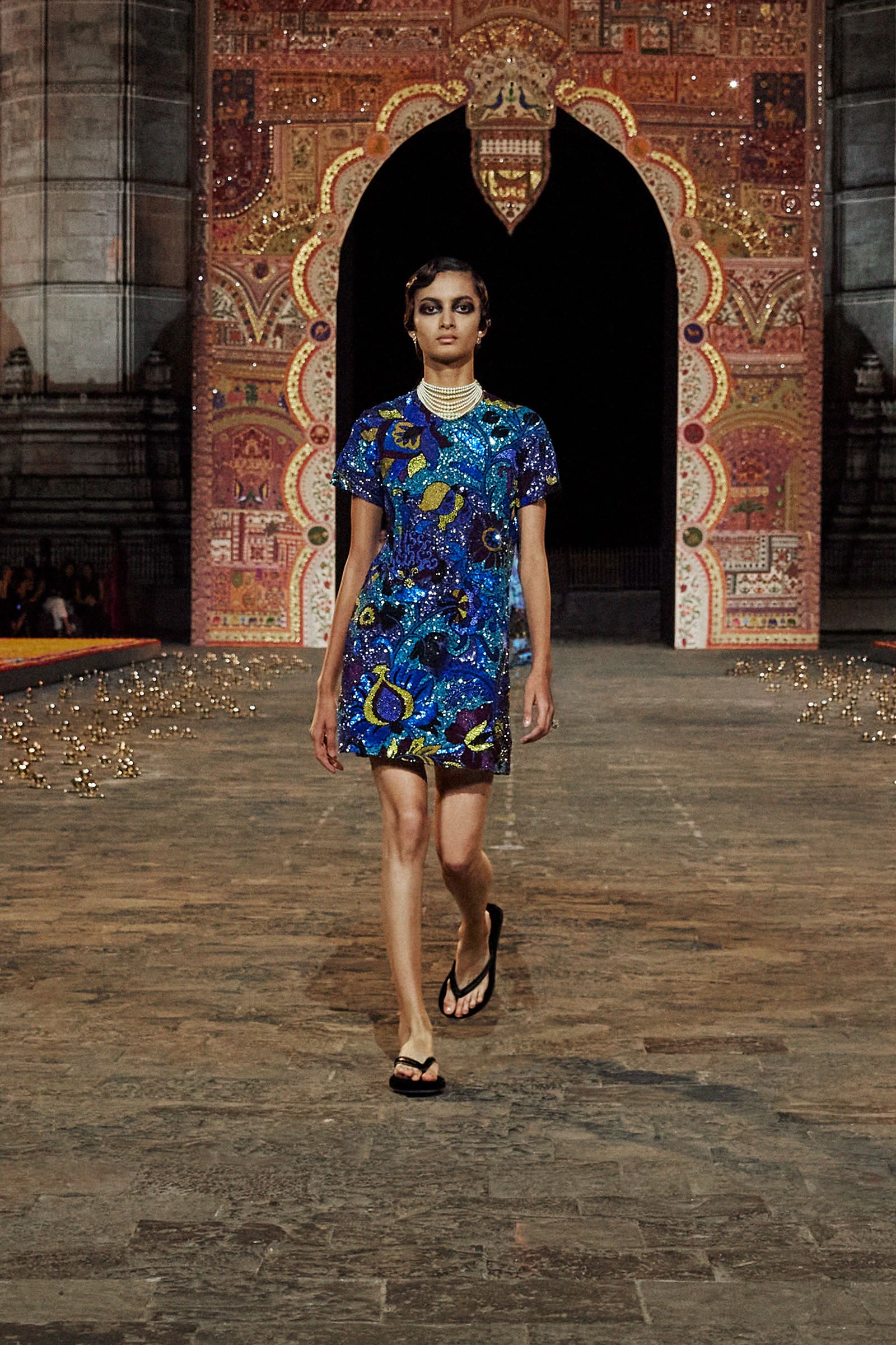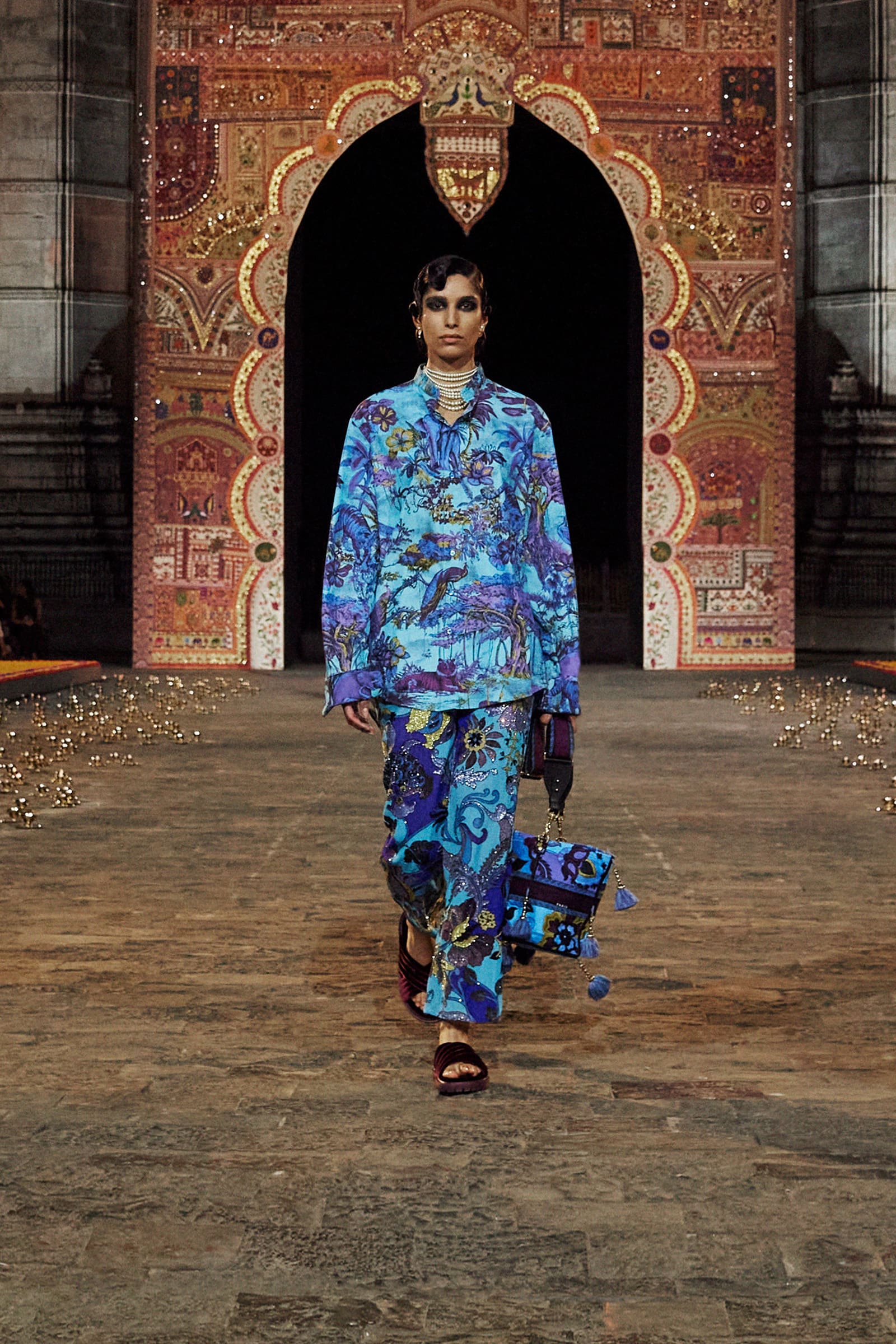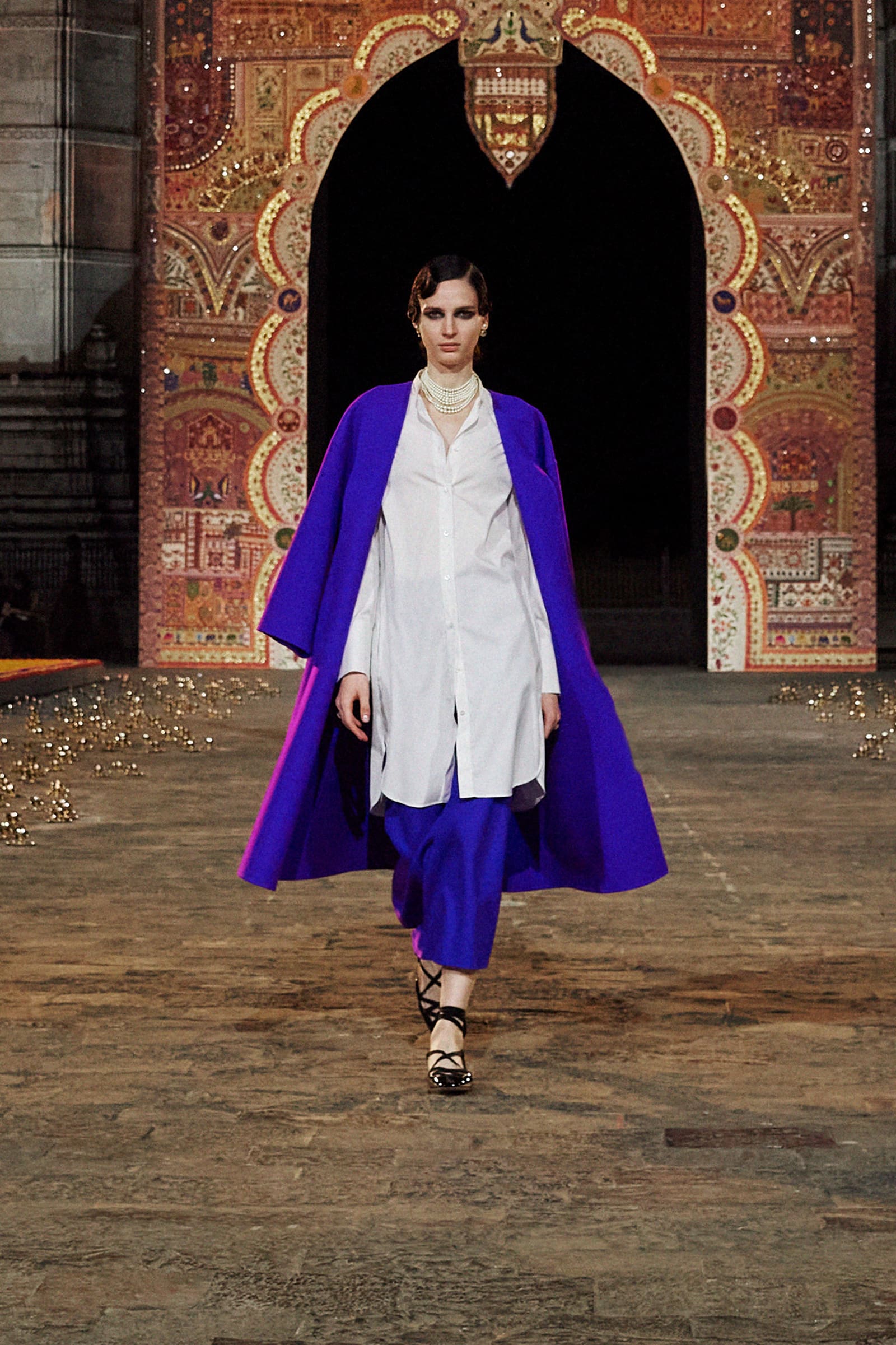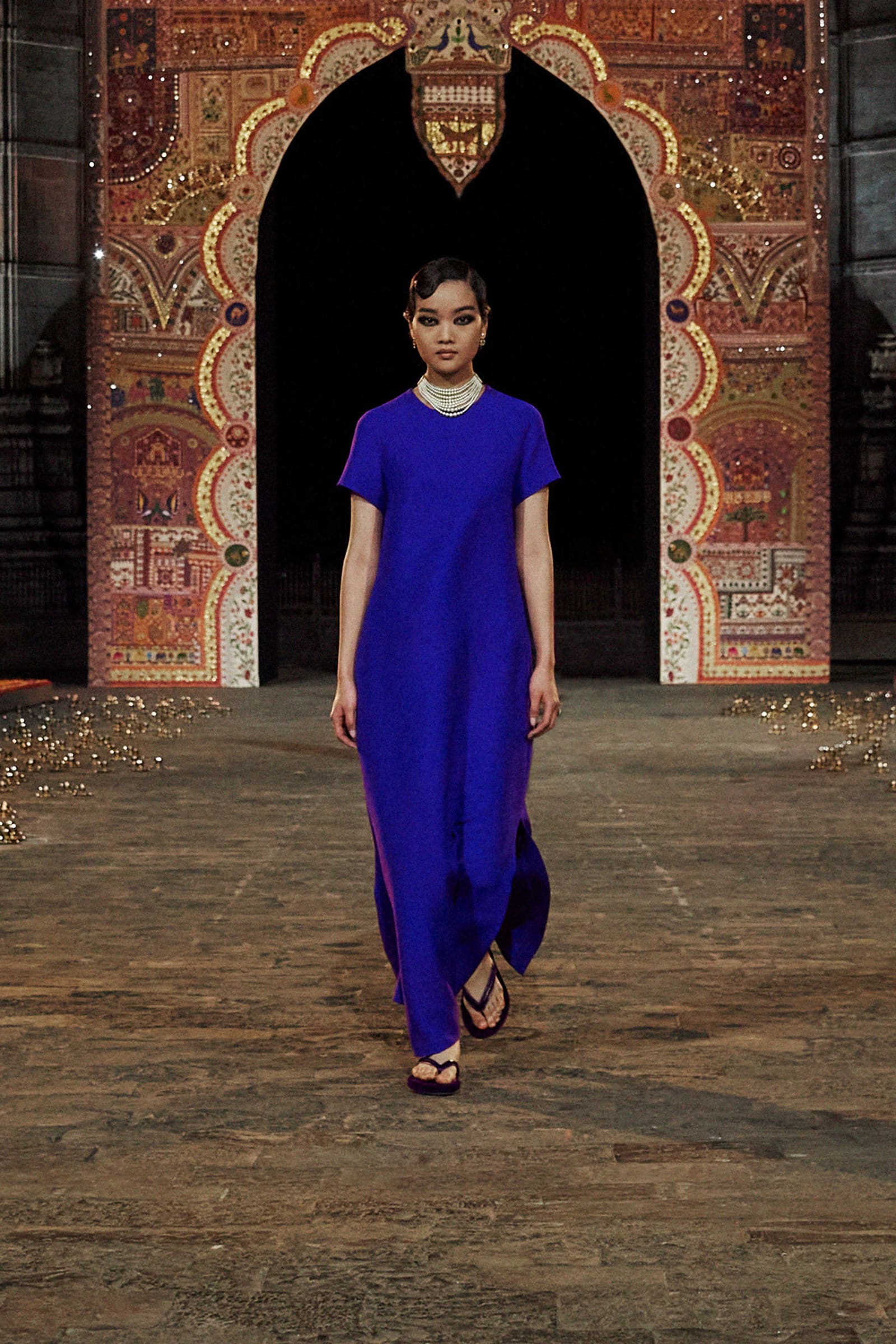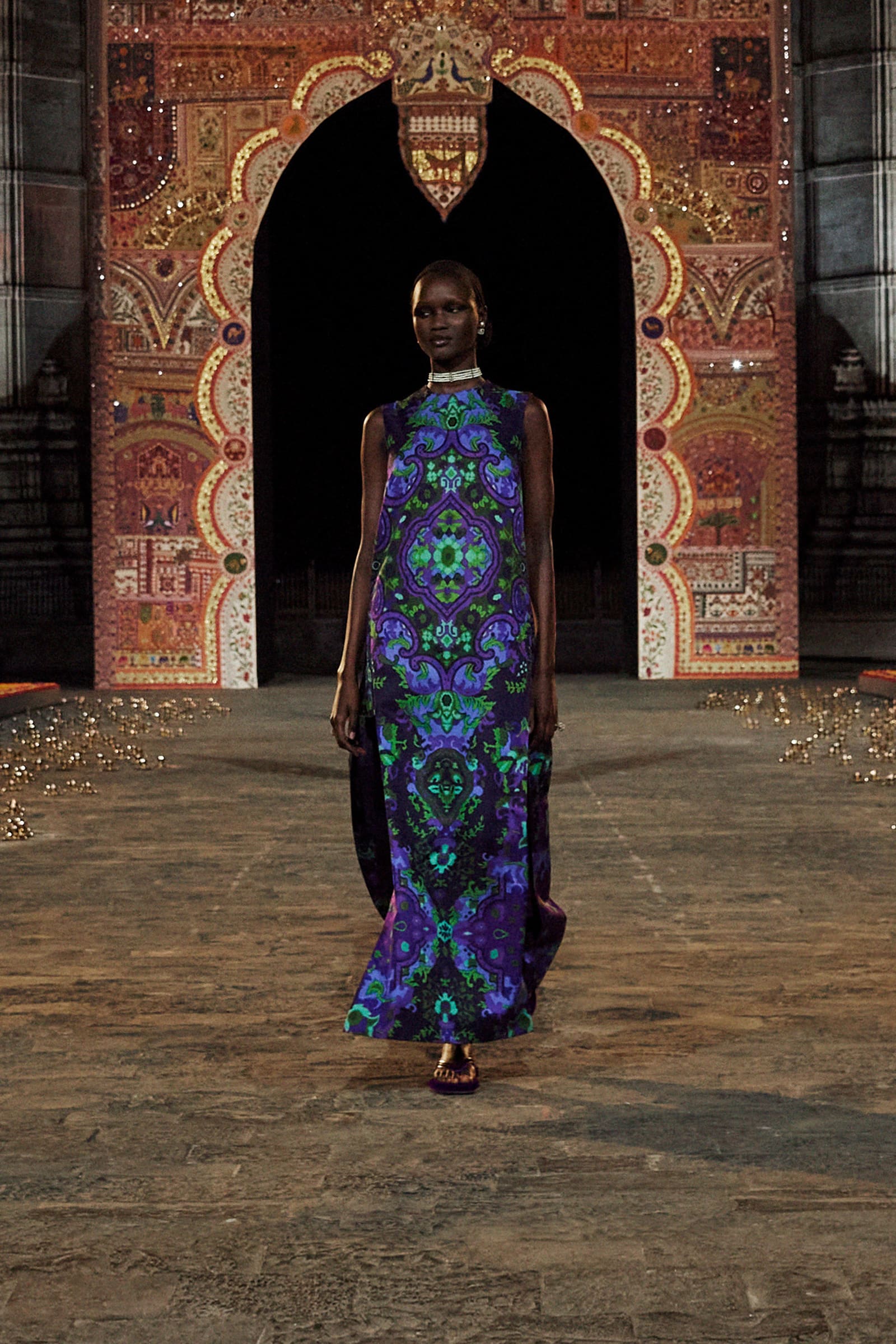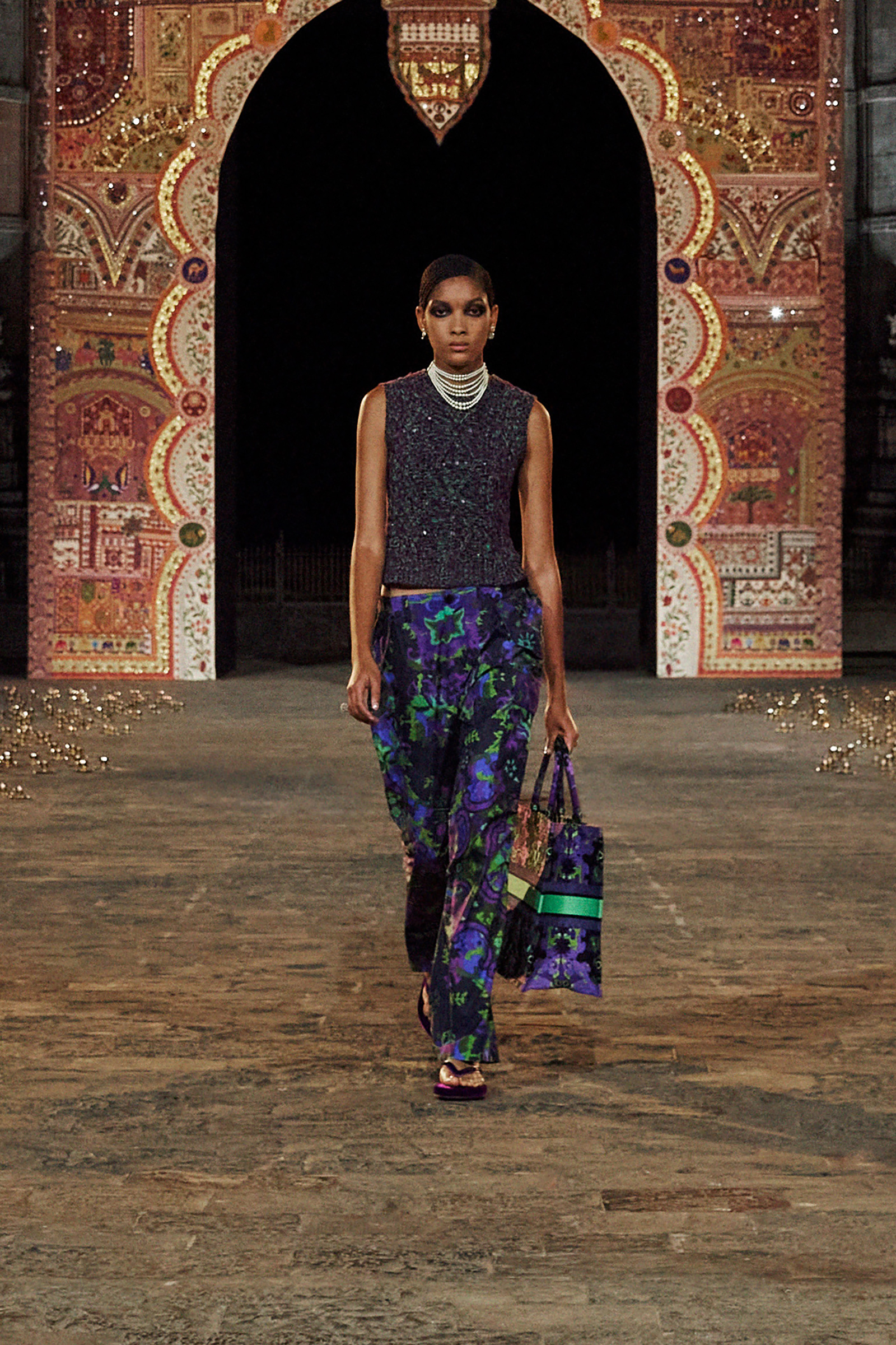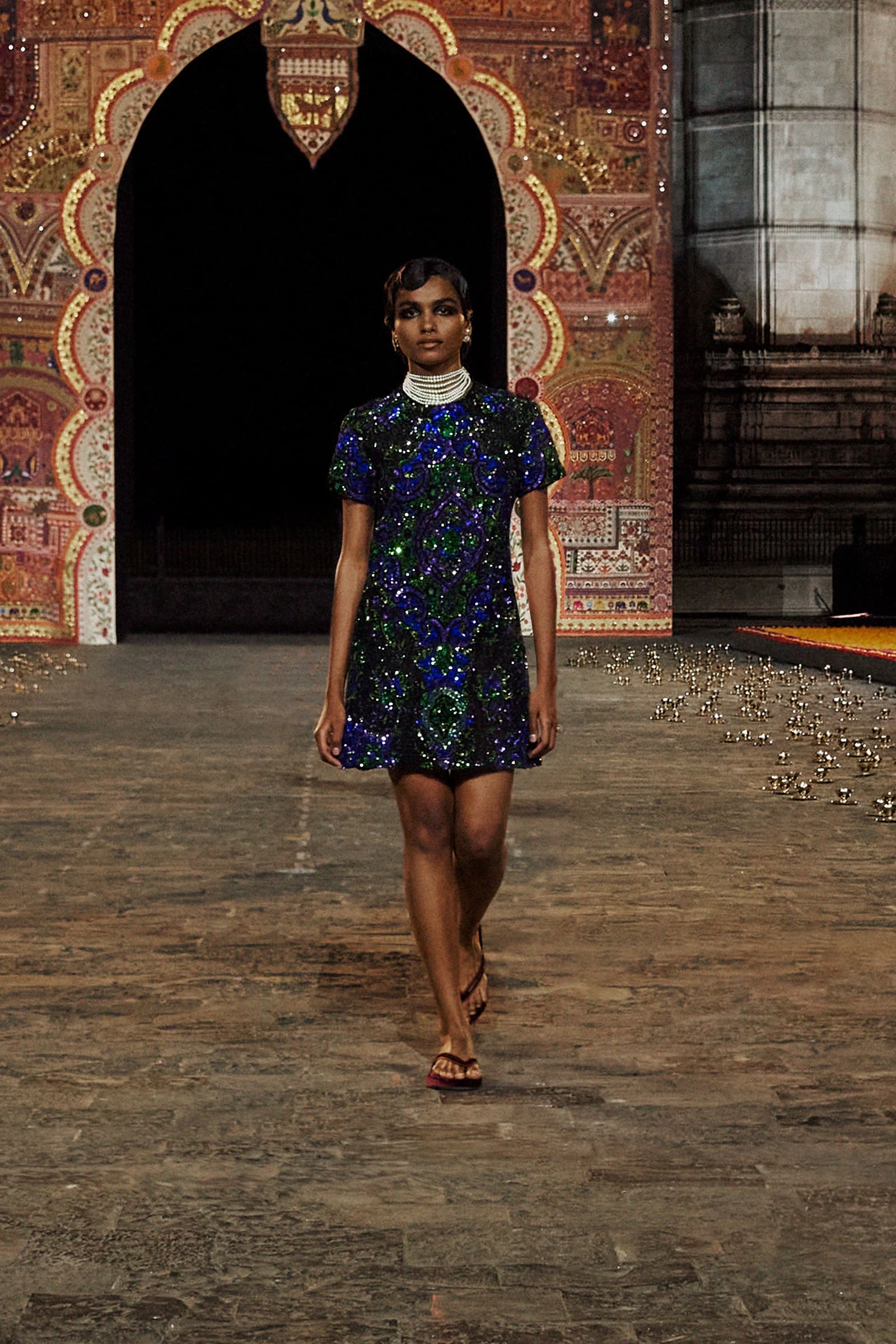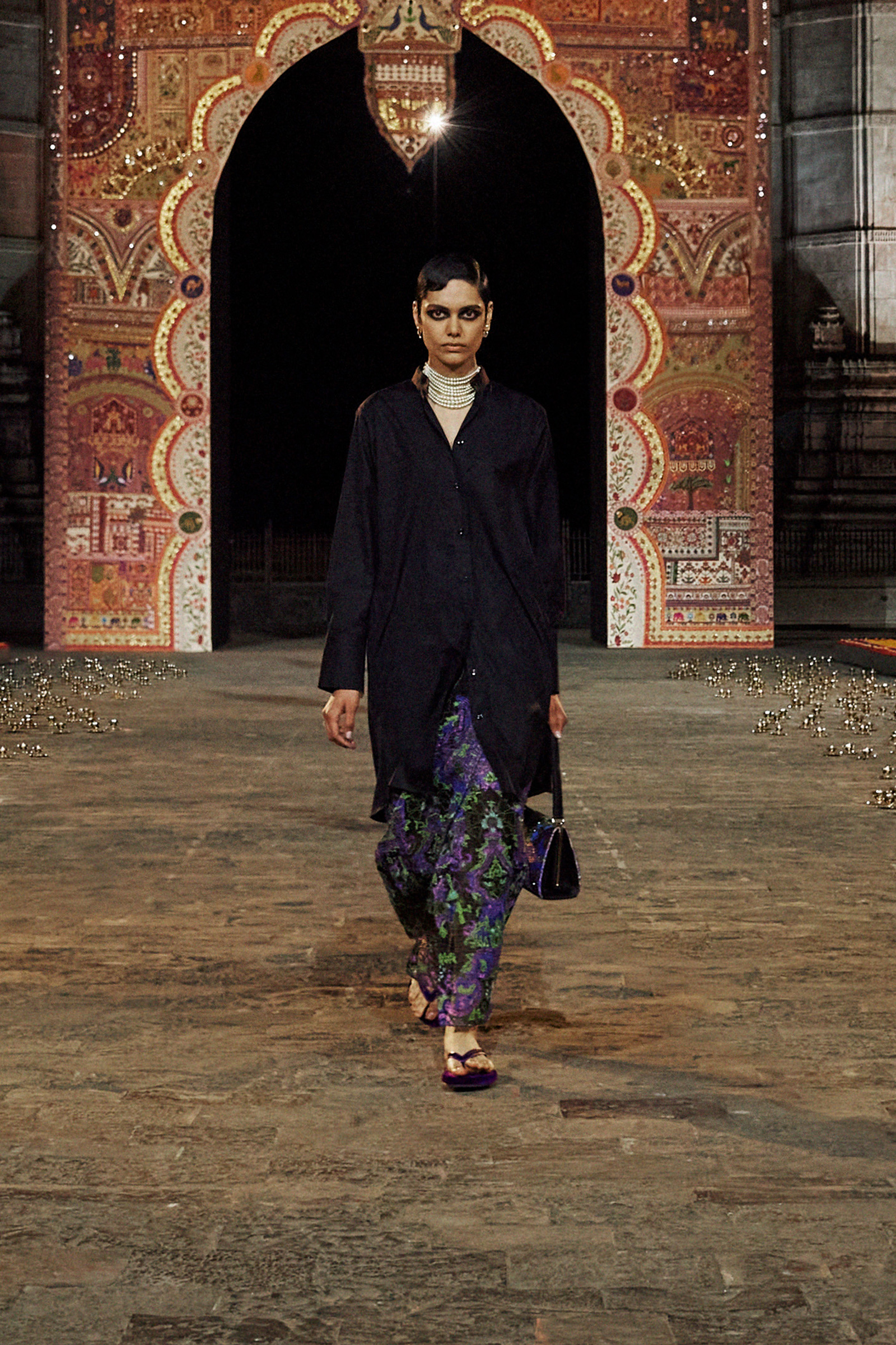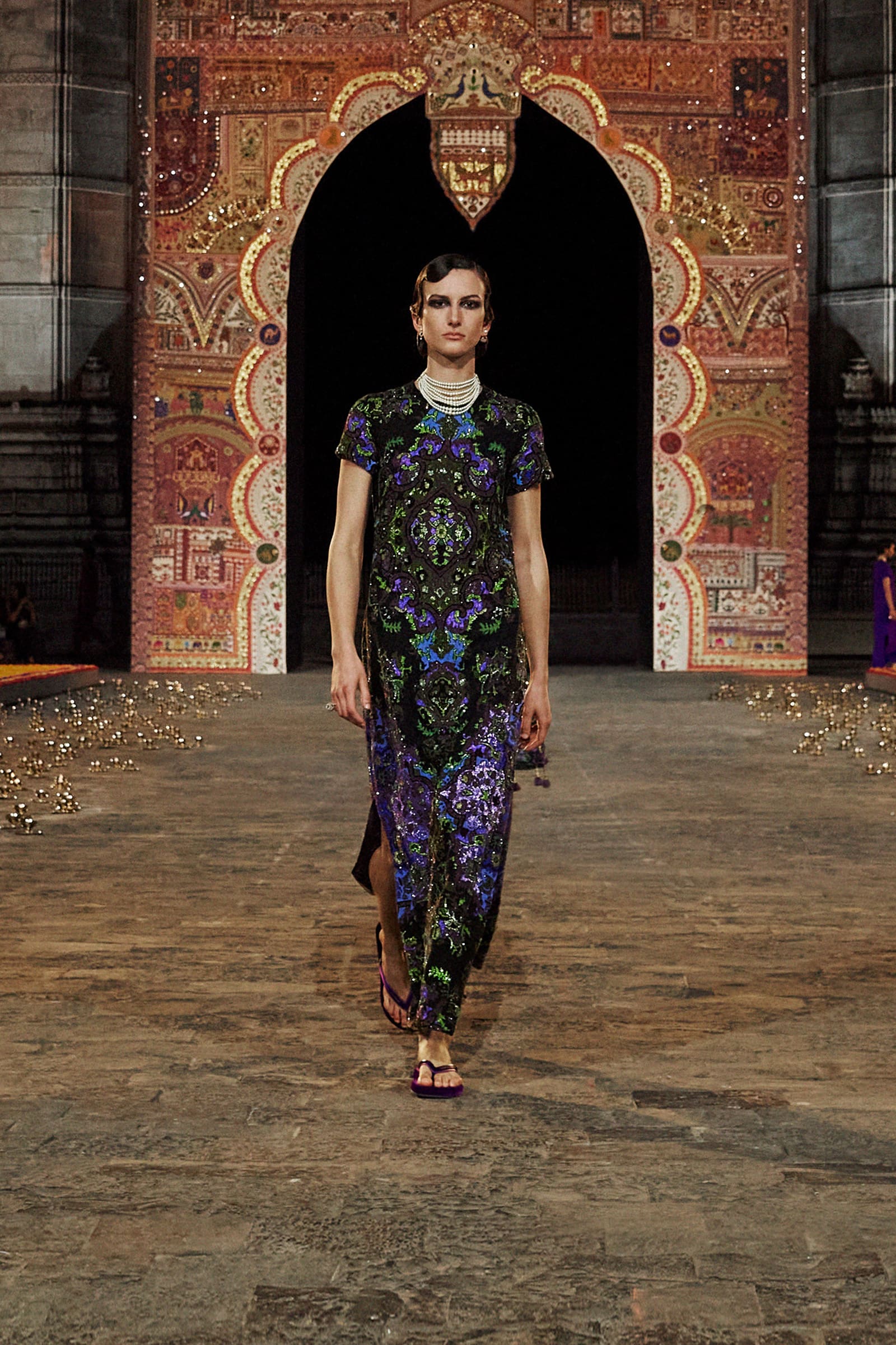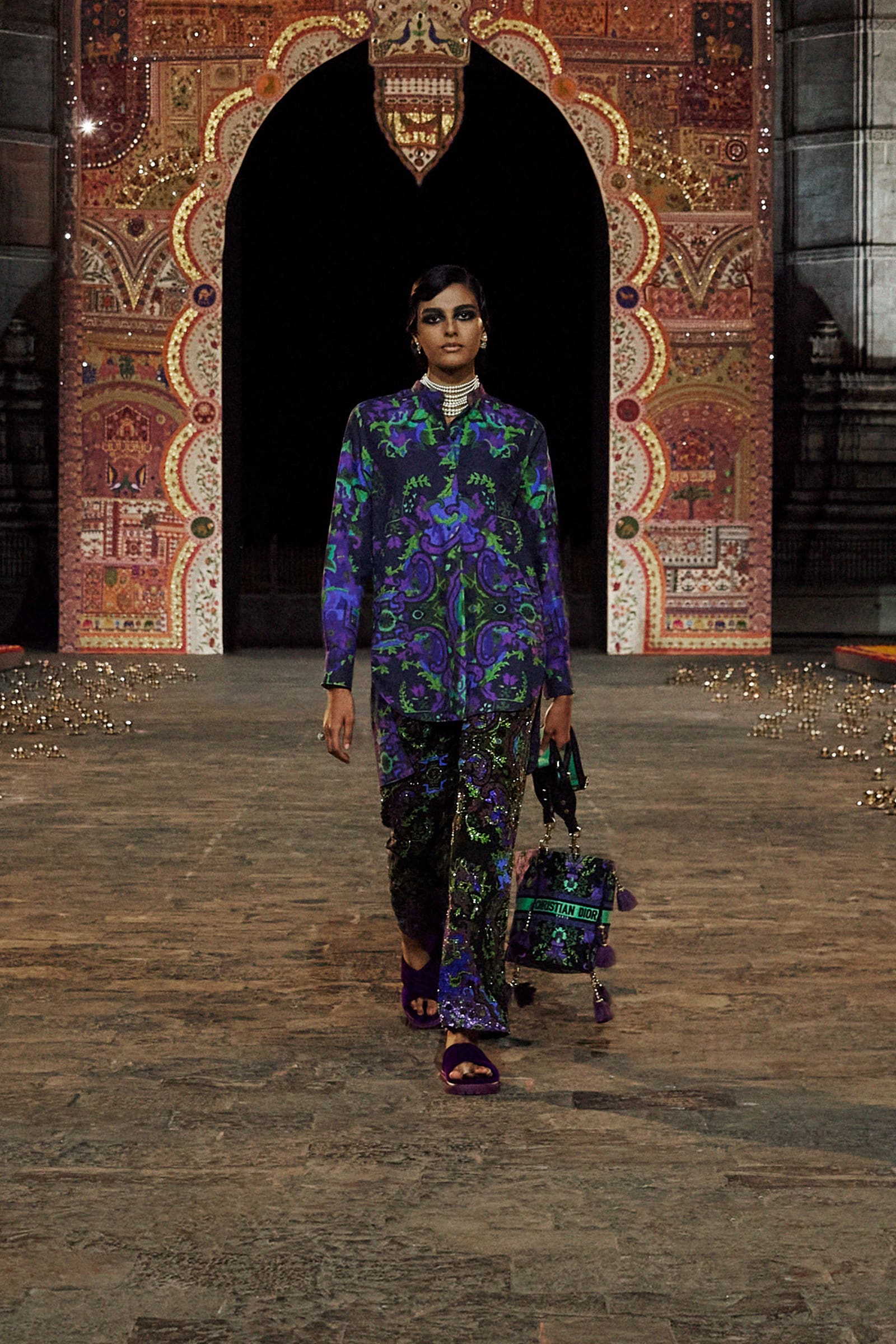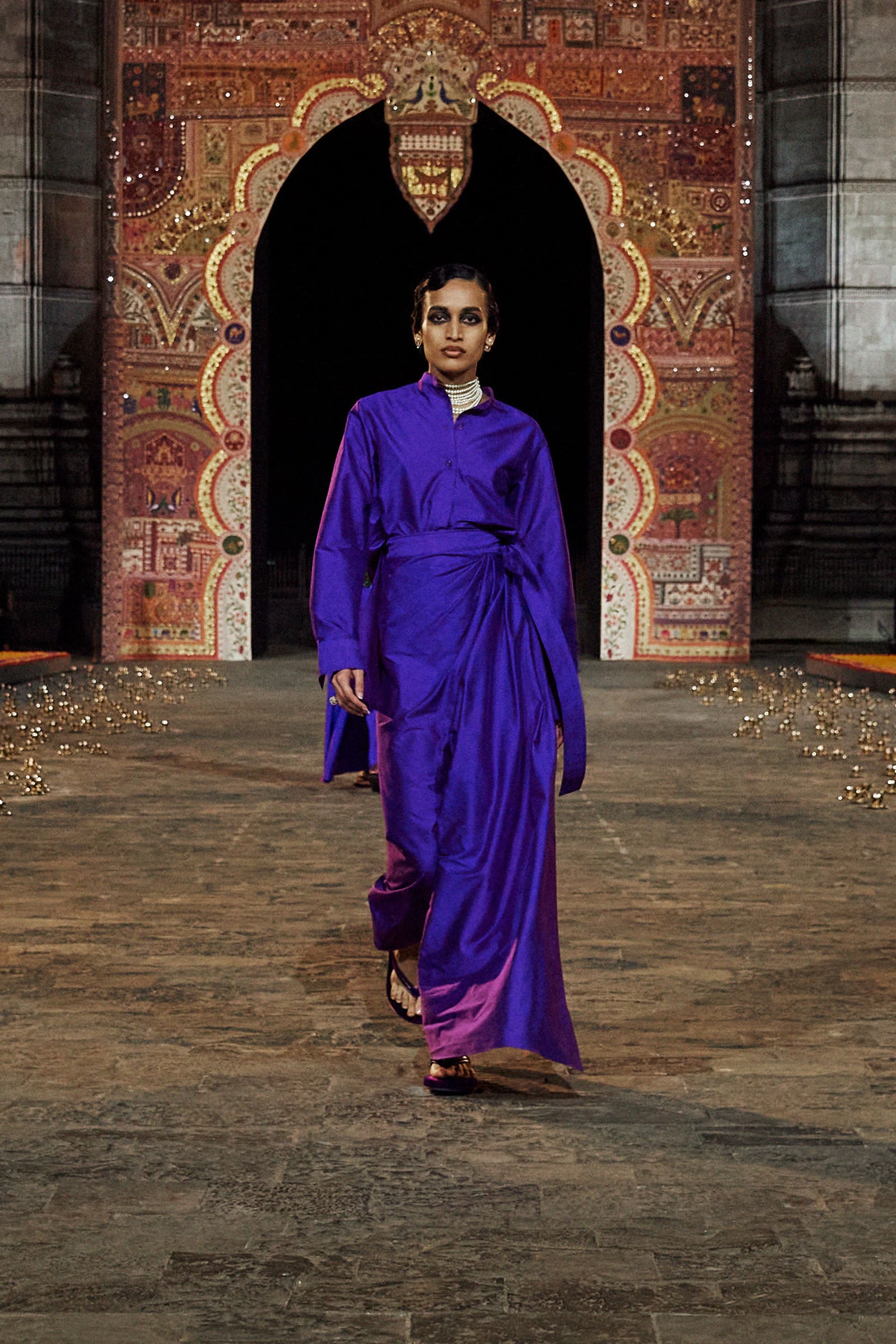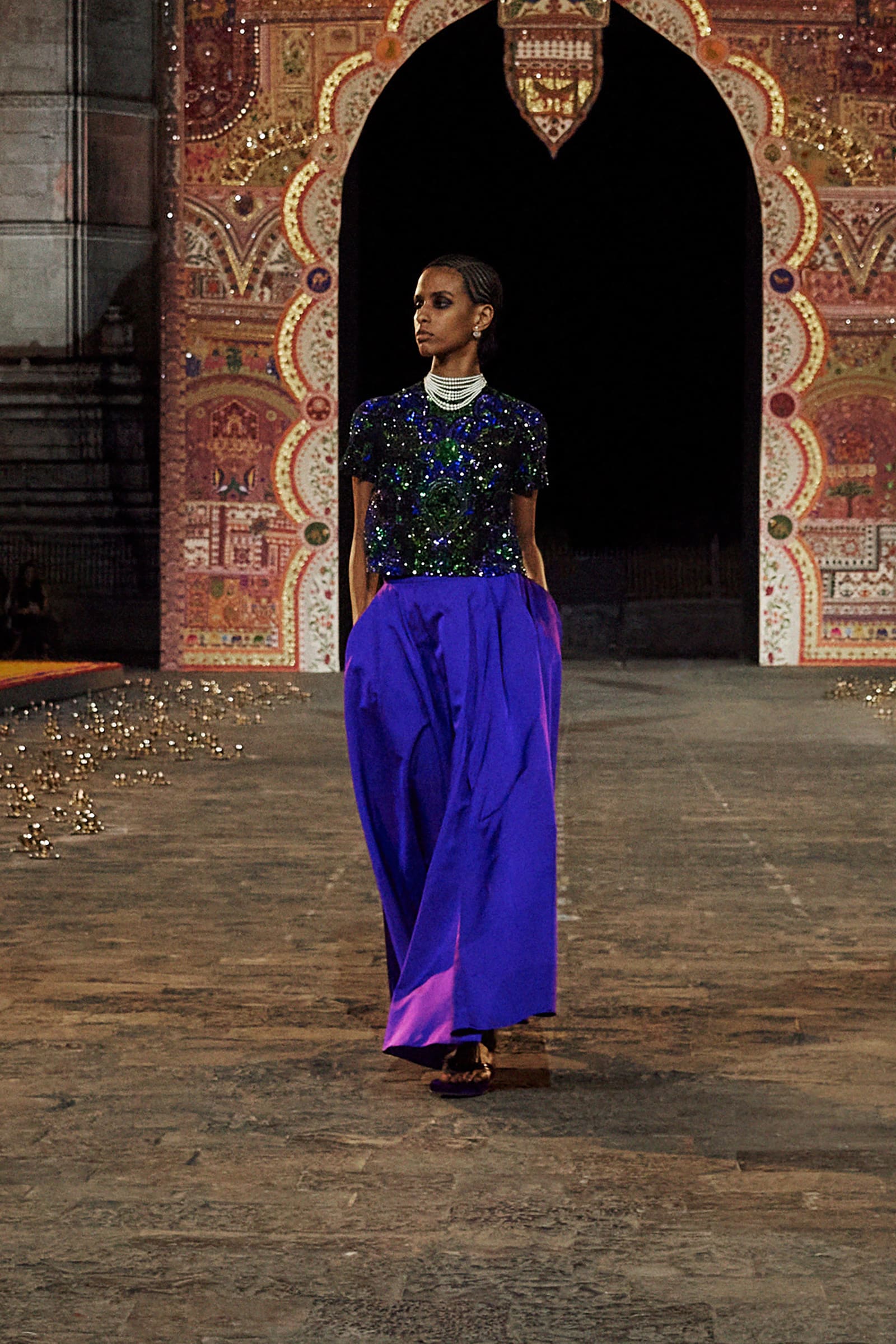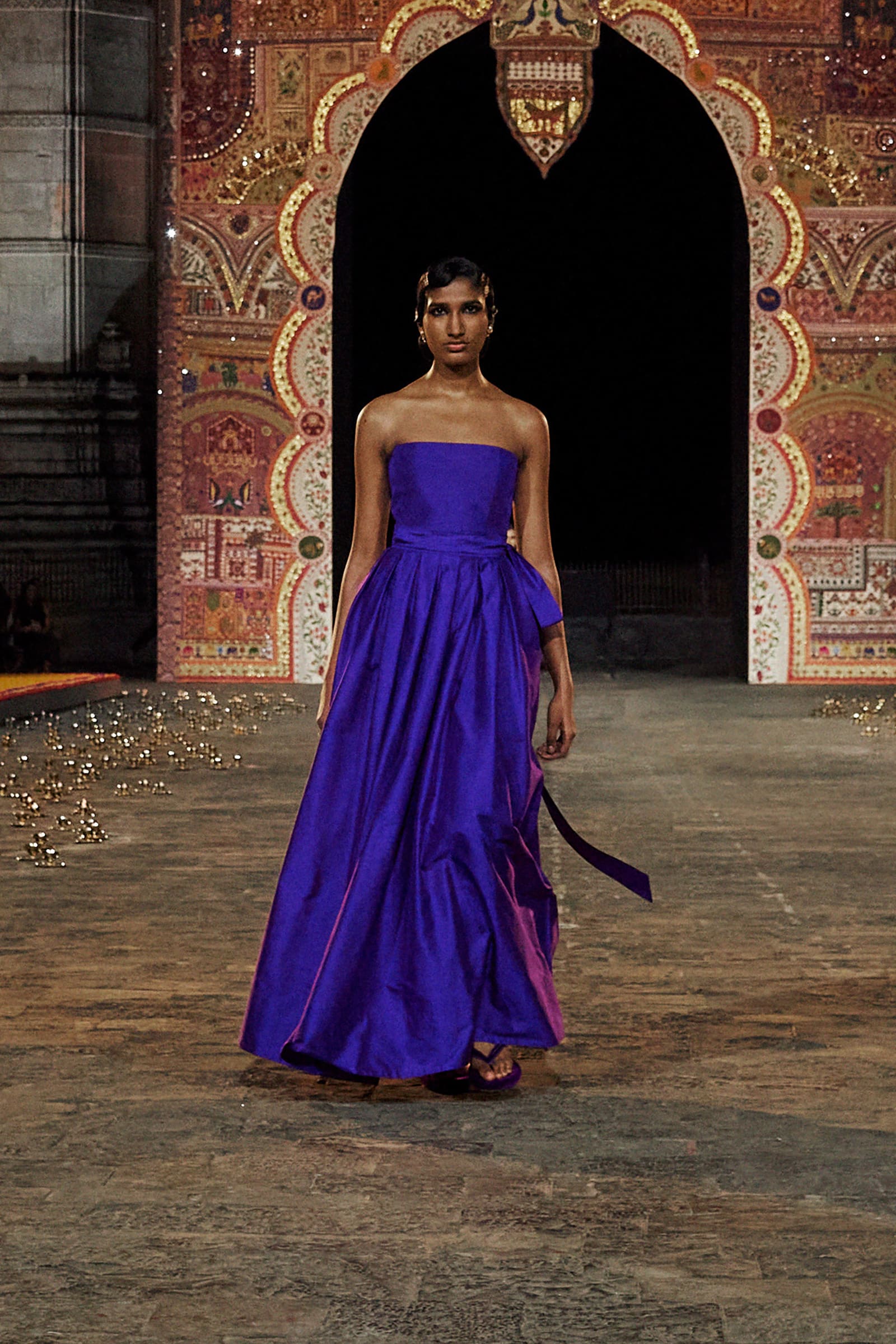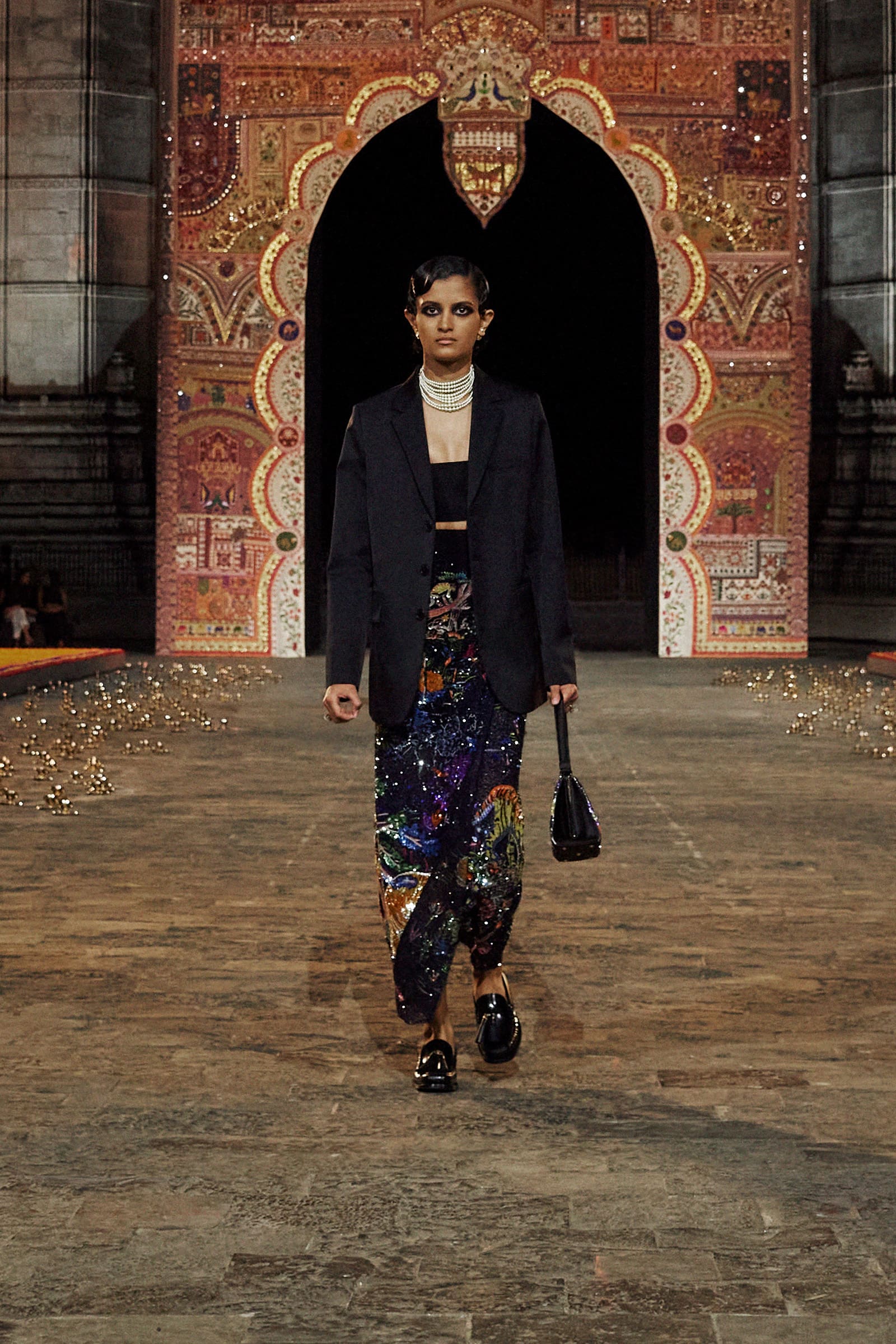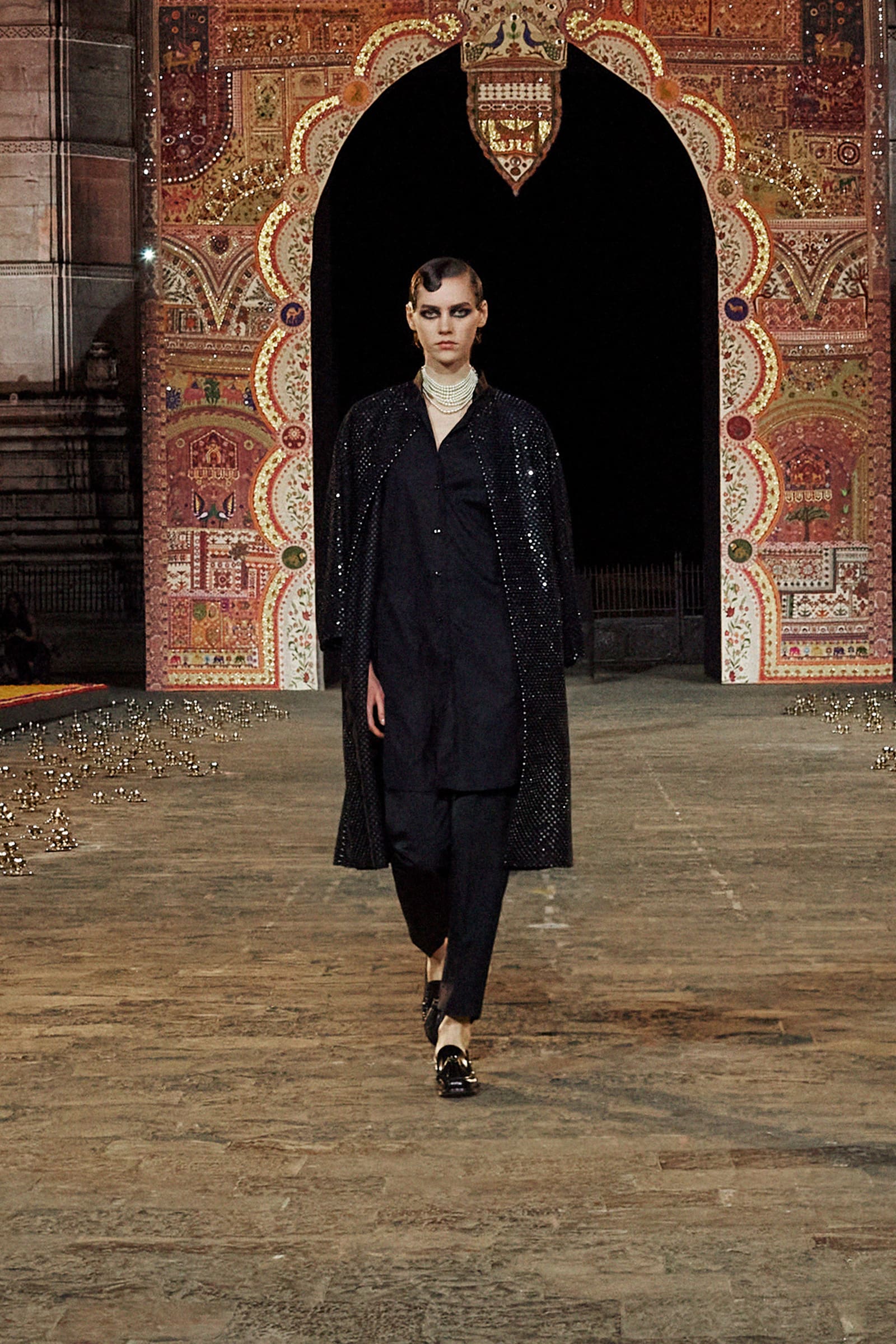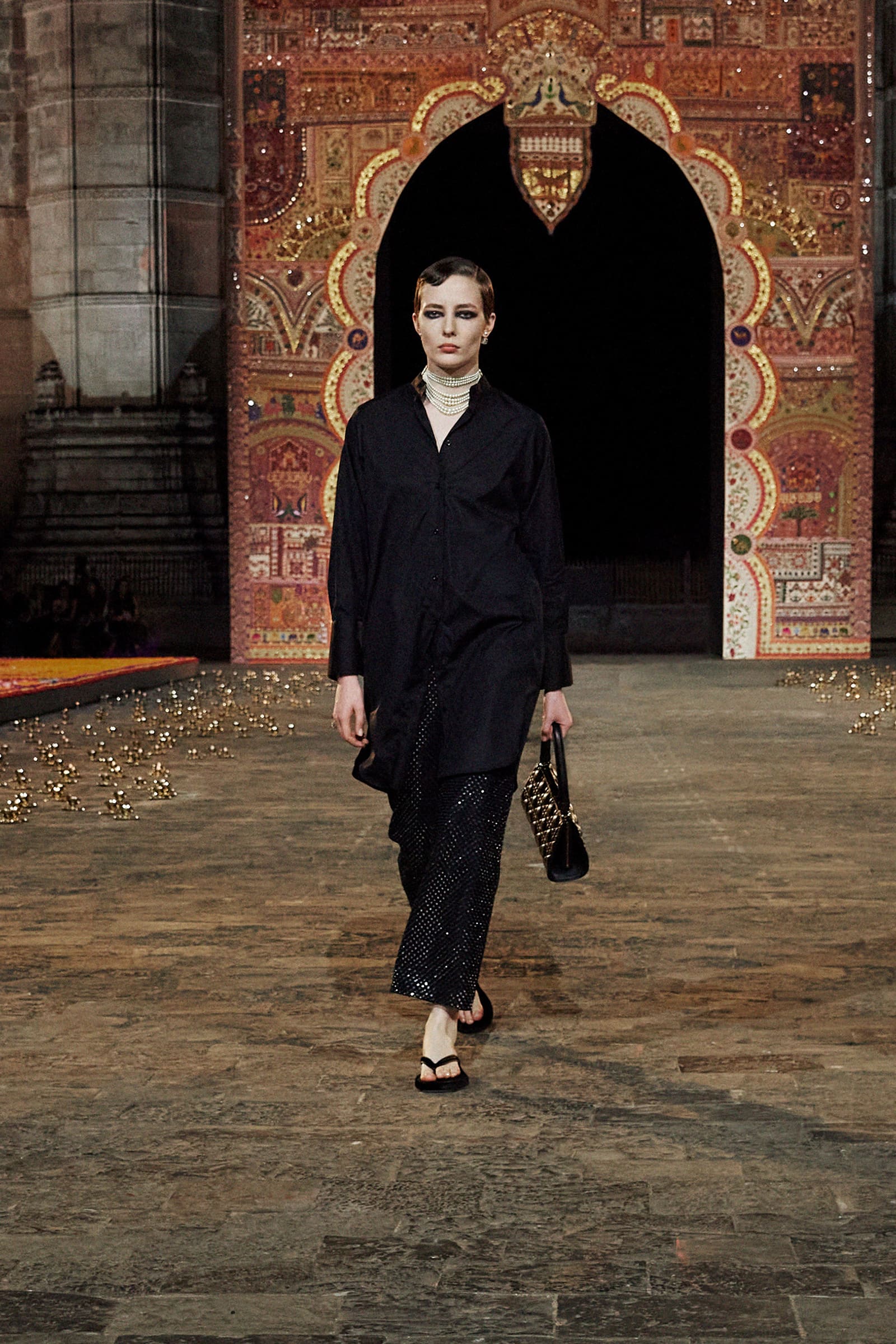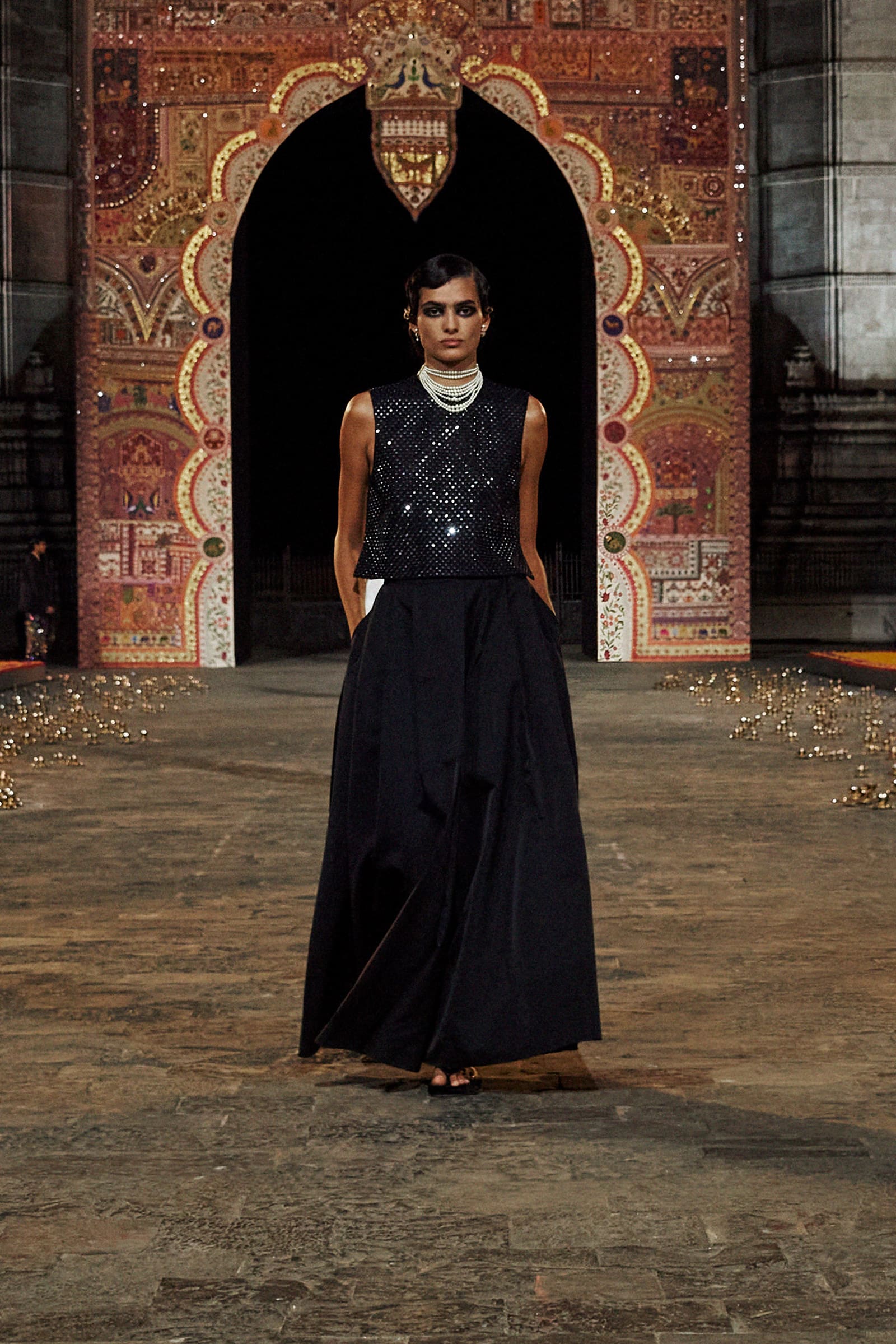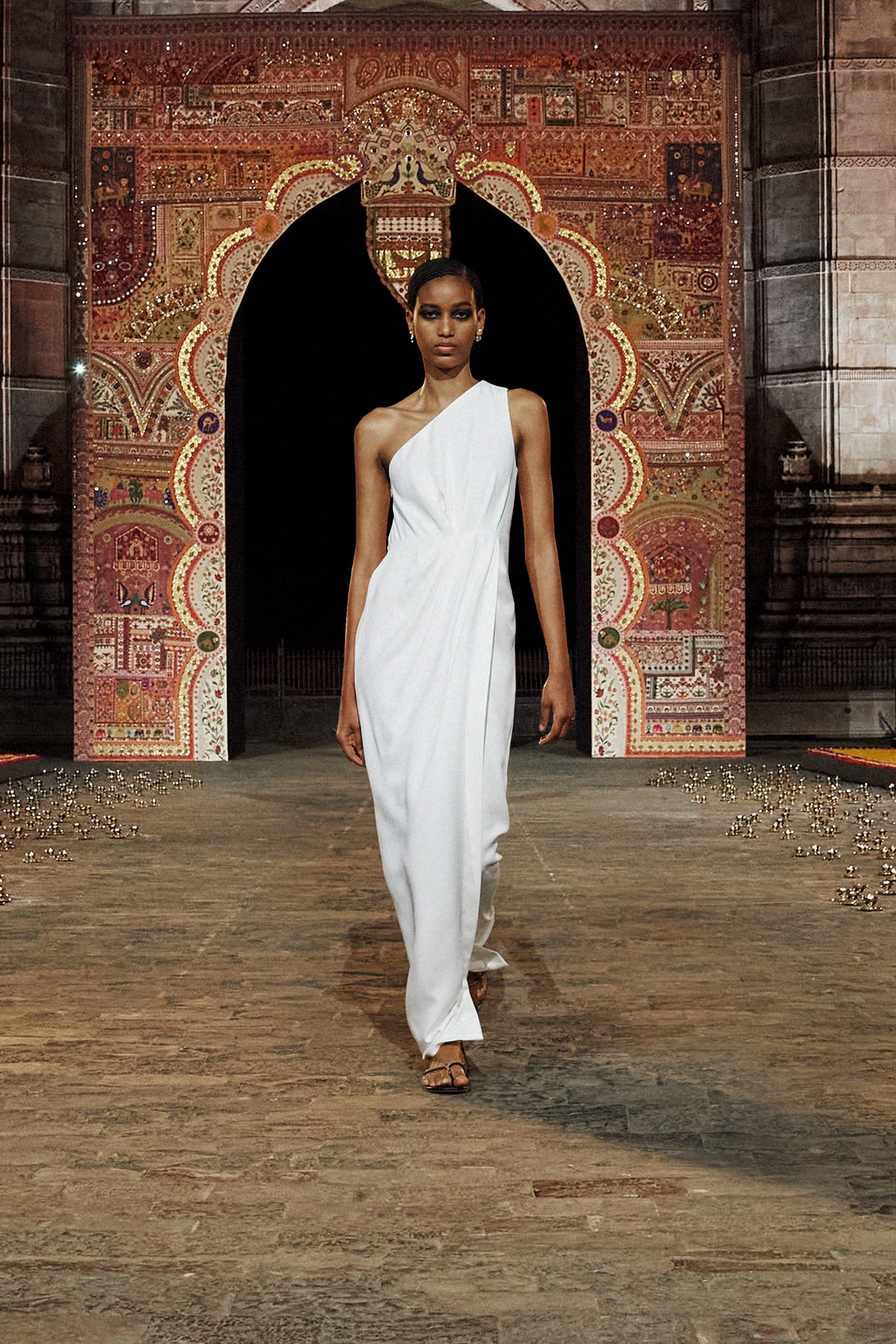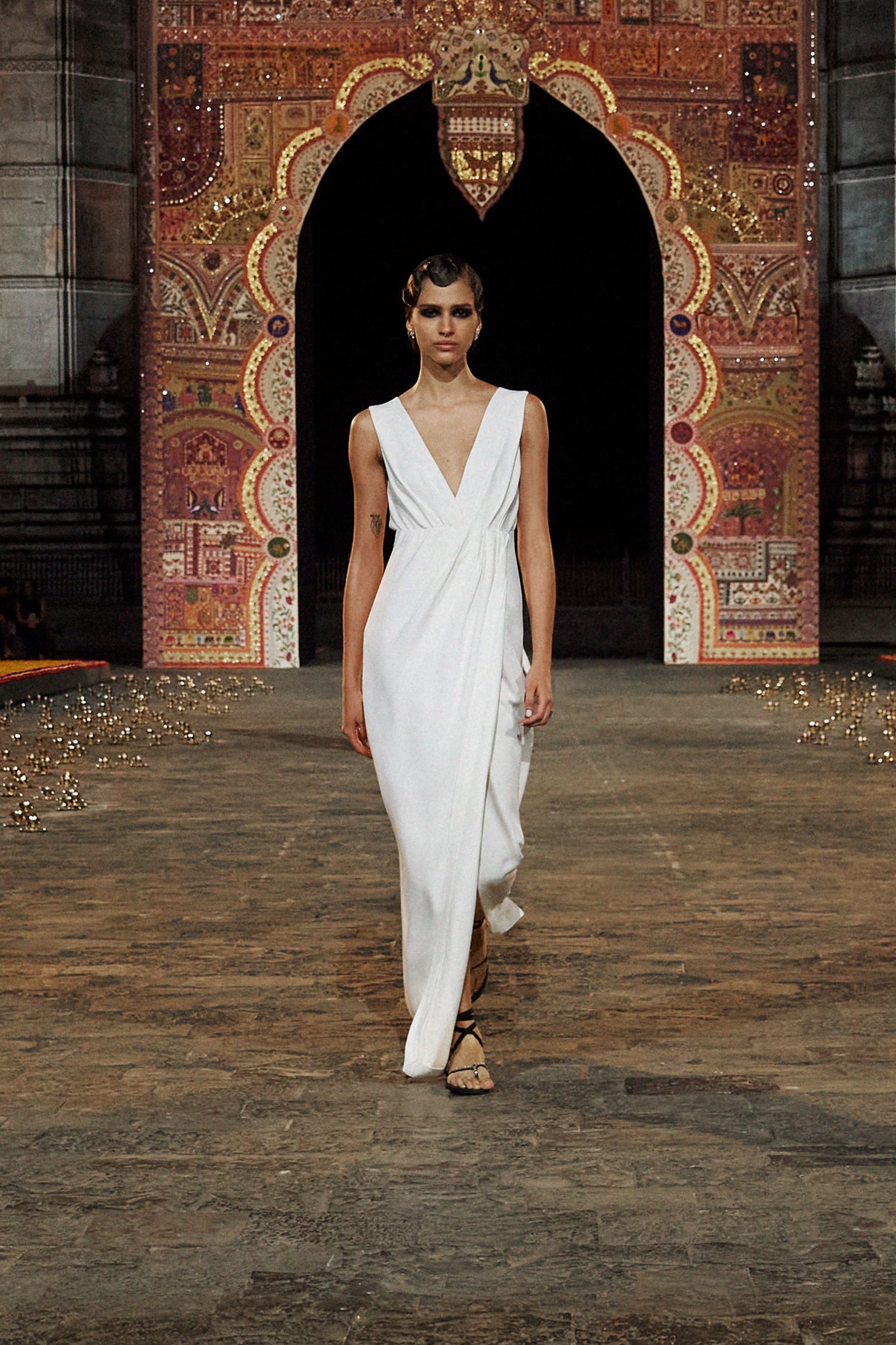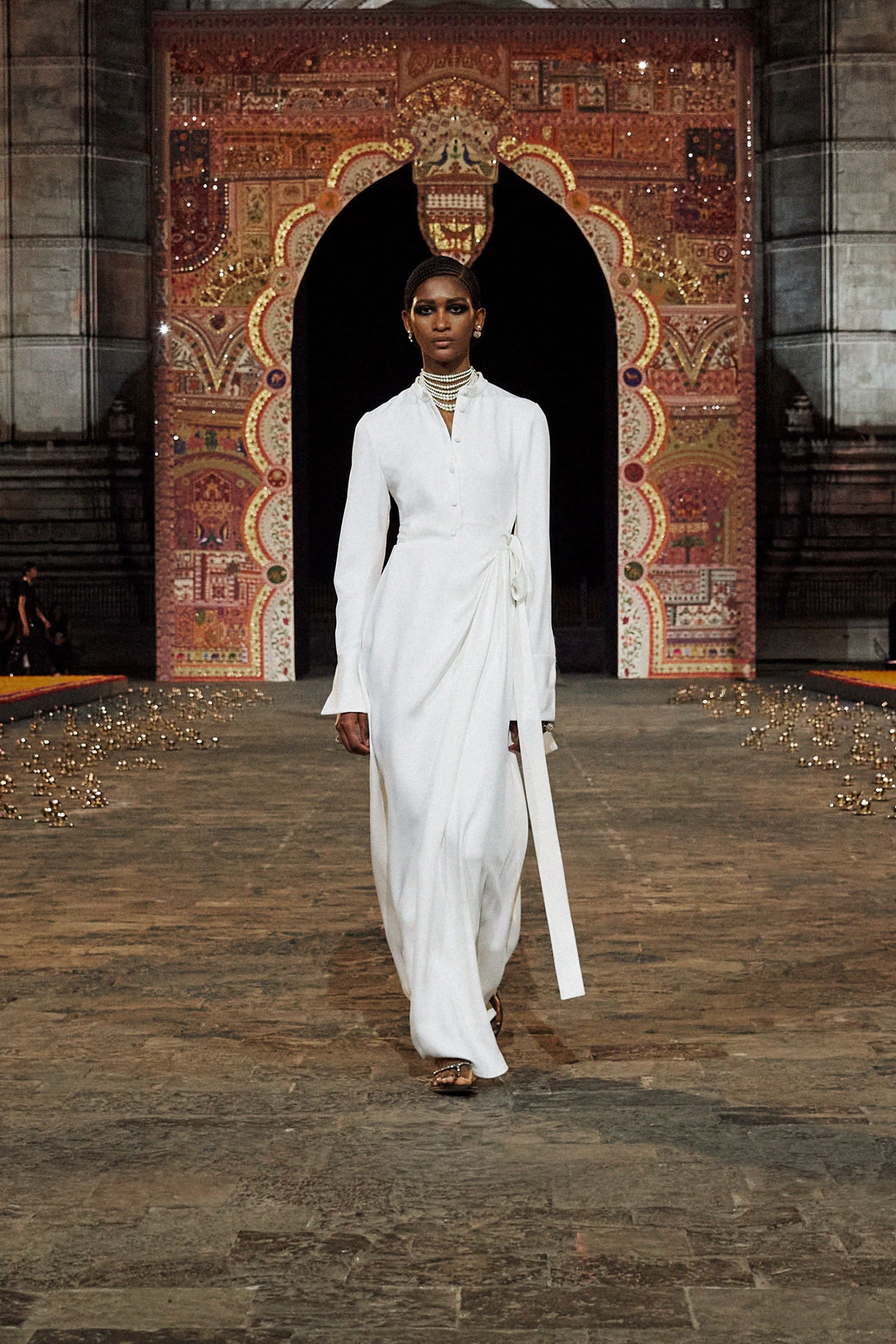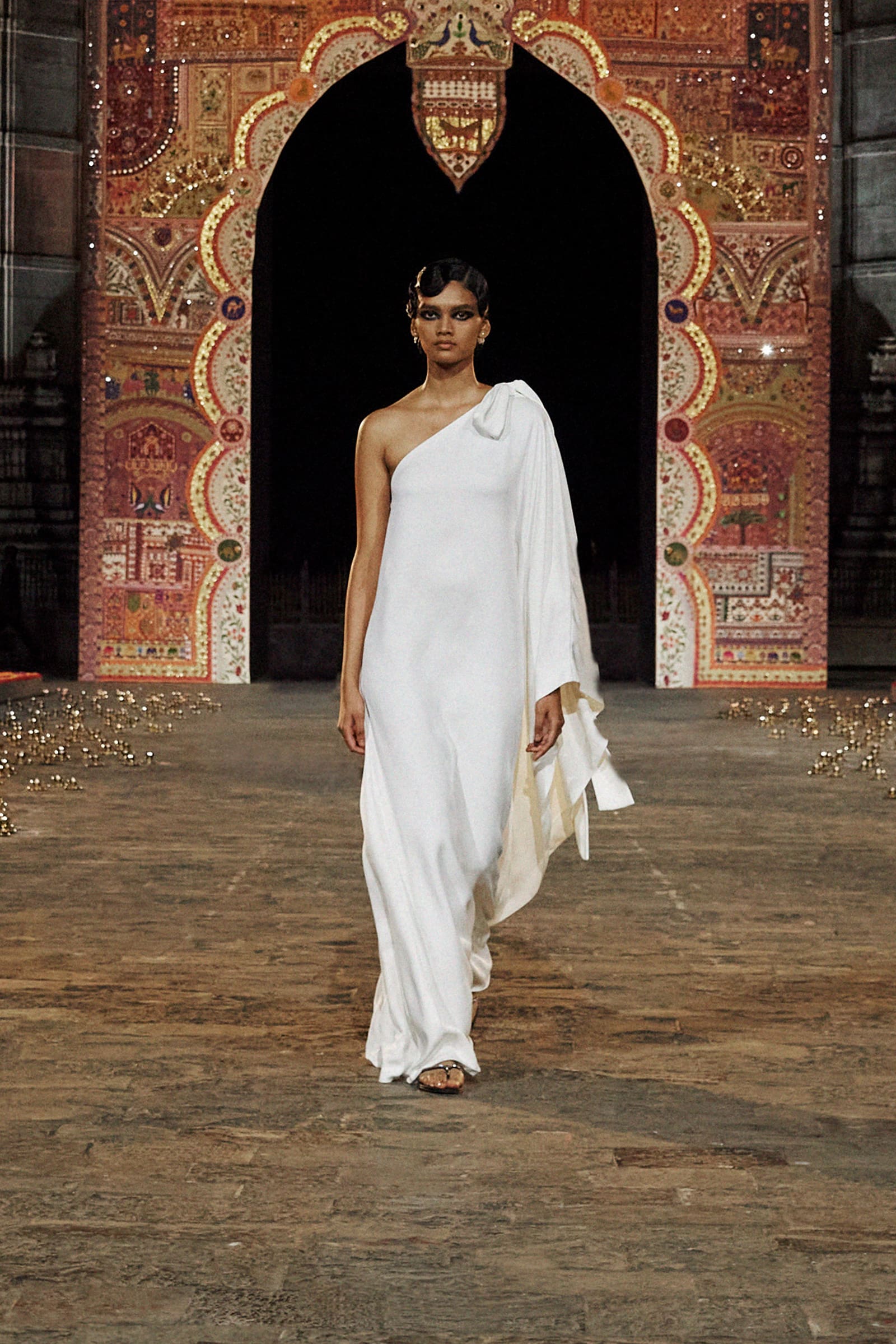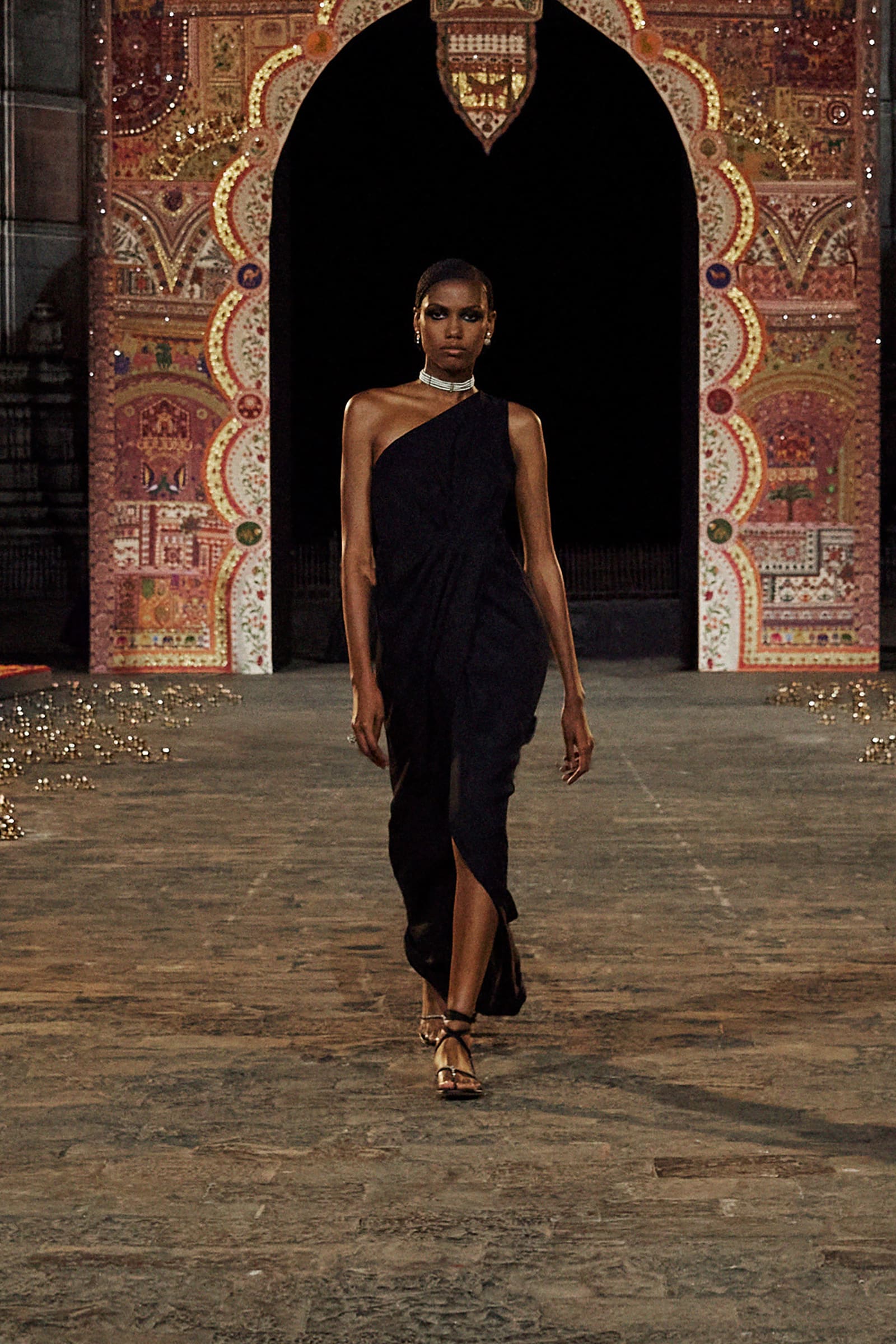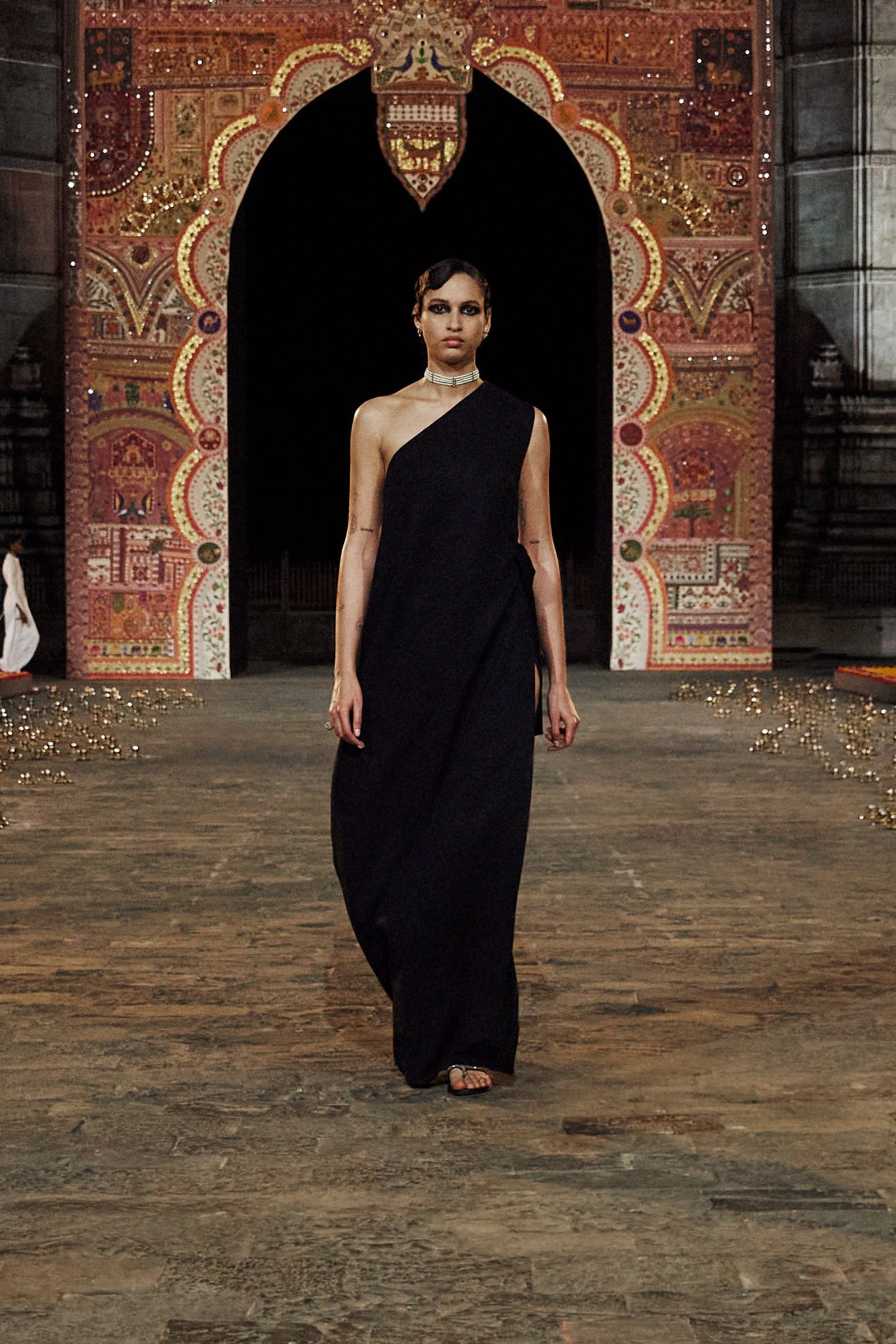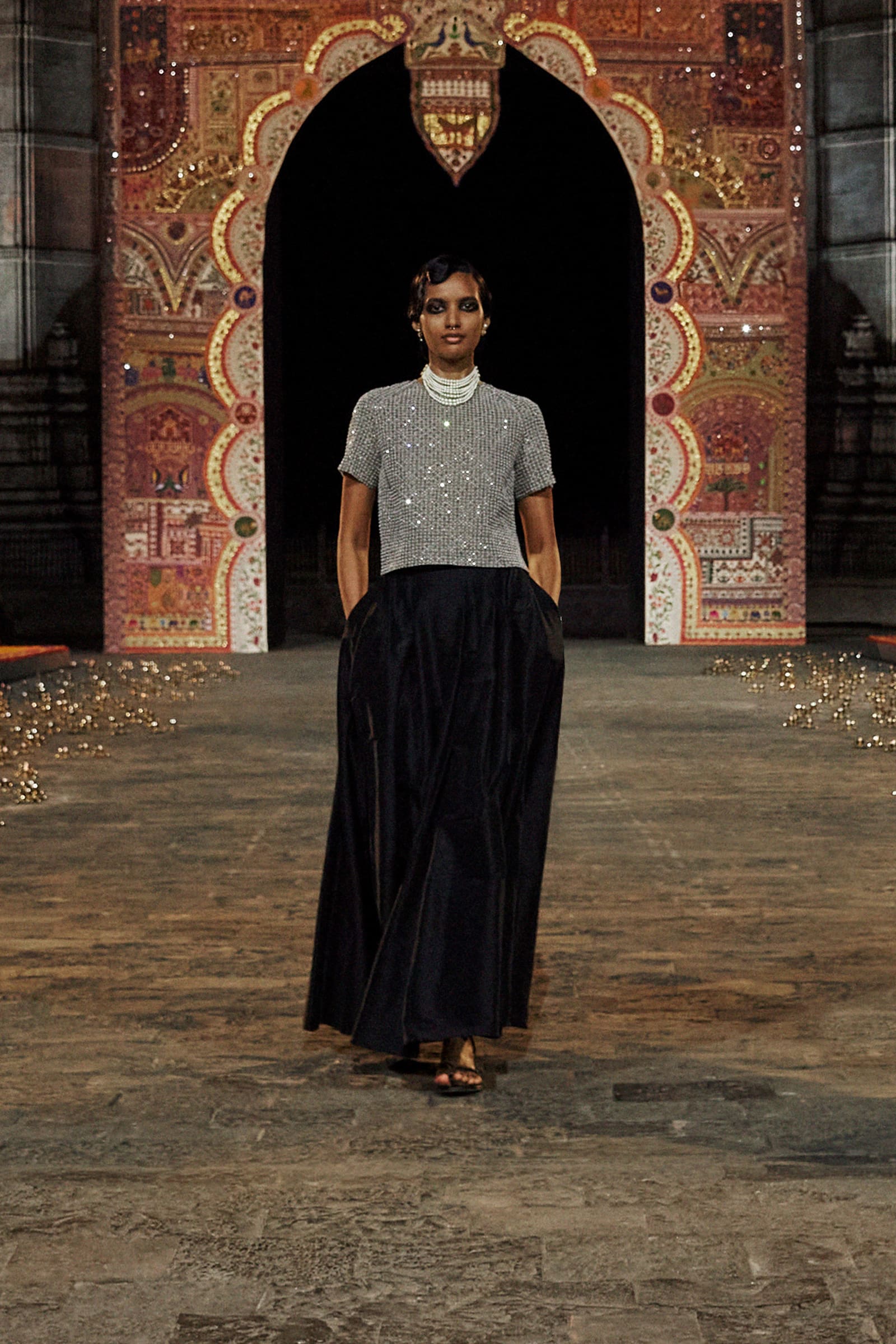
At the end of a year when traveling shows and cross-cultural collaborations are the mania of the moment, it’s eye-opening to know that Christian Dior—founded by a visionary couturier with a zeal for getting on planes and boats to show his collections to the women of the world— was making publicity splashes here, there, and everywhere, decades before anyone else. In 1964, it was India.
There’s a reason that Maria Grazia Chiuri wove the house archive evidence—photos of Marc Bohan arriving on an Air India flight with a troupe of Dior models for shows in Delhi and Mumbai—into the background of her new lineup. “This collection is done to celebrate my relationship with India, which has been part of the system of fashion for a long time,” she said from her office in Paris.
The results, when you peer around her rather dark lookbook, combine richness and light-touch modern simplicity, and are far more about a real and lasting engagement than a one-off trip around a national theme or an excursion into history.
“I work with India every day,” she explained. The familiarity and mutual creative respect began for Chiuri 30 years ago, when she started developing embroideries with Indian haute couture specialists for Valentino. As creative director at Christian Dior, she’s deepened the relationship since 2016 via a partnership with Karishma Swali, the director of the Chanakya School of Craft, which champions the inclusion of women into a highly skilled industry that has been traditionally a male-only preserve. “The school and laboratory offer salaries, health insurance, and child care opportunities for women,” she smiled. “I think it’s the most satisfying thing I do.”
The cross-cultural creative interplay has yielded a collection that adapts traditional shapes and material techniques to the female fashion-think that Chiuri has brought to Dior. “I like it that every woman can transform things for herself. Every piece you can wear in a different way. You can mix daywear and evening wear.”
She took “the verticality” of tunics and sari-skirts as a starting point to design long, narrow dresses, open at one side—options that can be glamorously dramatic for evening, or switched up with leggings, trousers, or shorts. There are also matching total looks in vivid shantung silk, which in fact break apart into draped skirts and cropped shirts.
Other silhouettes borrow their chic minimalism from Indian menswear—pristine white collarless shirts as layering pieces, the eternal Christian Dior ‘Bar’ jacket remade with a Nehru collar. Part of Chiuri’s mission—her subtle breakaway with the past—is to do away with corseting. “My work is sometimes not so visible,” she said. “I have a problem with clothes that are not comfortable. To me, the important thing is how clothes feel on the body.”
Working with one eye on elegant trompe-l’ oeil glamour (like dramatic multi-strap dresses and tops which are actually made of soft, adjustable knit) and another on vivid color and print, Chiuri has produced a gamut of wardrobe possibilities. There are Jardin Indien toile de jouy pajamas printed with tigers, peacocks, and banyan trees (toile de jouy is in fact an exchange of French and Indian influences that dates back centuries to the west’s admiration of Indian cotton chintz imports.)
Mirrored and sequined embroidery, hot pink sequins, rich golden borders, and filigree lace are all deftly elevated to a level of sophistication that could only come about through the joint ambition of Indian artisans and a French house to make something new in the service of modern, wearable fashion. “It’s all so light!” Chiuri beamed.
There’s practicality and delight in this collection. Chiuri laughed as she pointed out “a Bollywood moment” on the back of a heavily embroidered jacket, emblazoned like a cinema poster with ‘Christian Dior’ and an Indian motto which translates as We Are Strong Together. She liked the symbolism of that message. “Because,” she concluded, “fashion is not only about clothes. It’s a way of knowing each other.”
This article was originally published on Vogue Runway.
This article was originally published on Vogue Runway.
